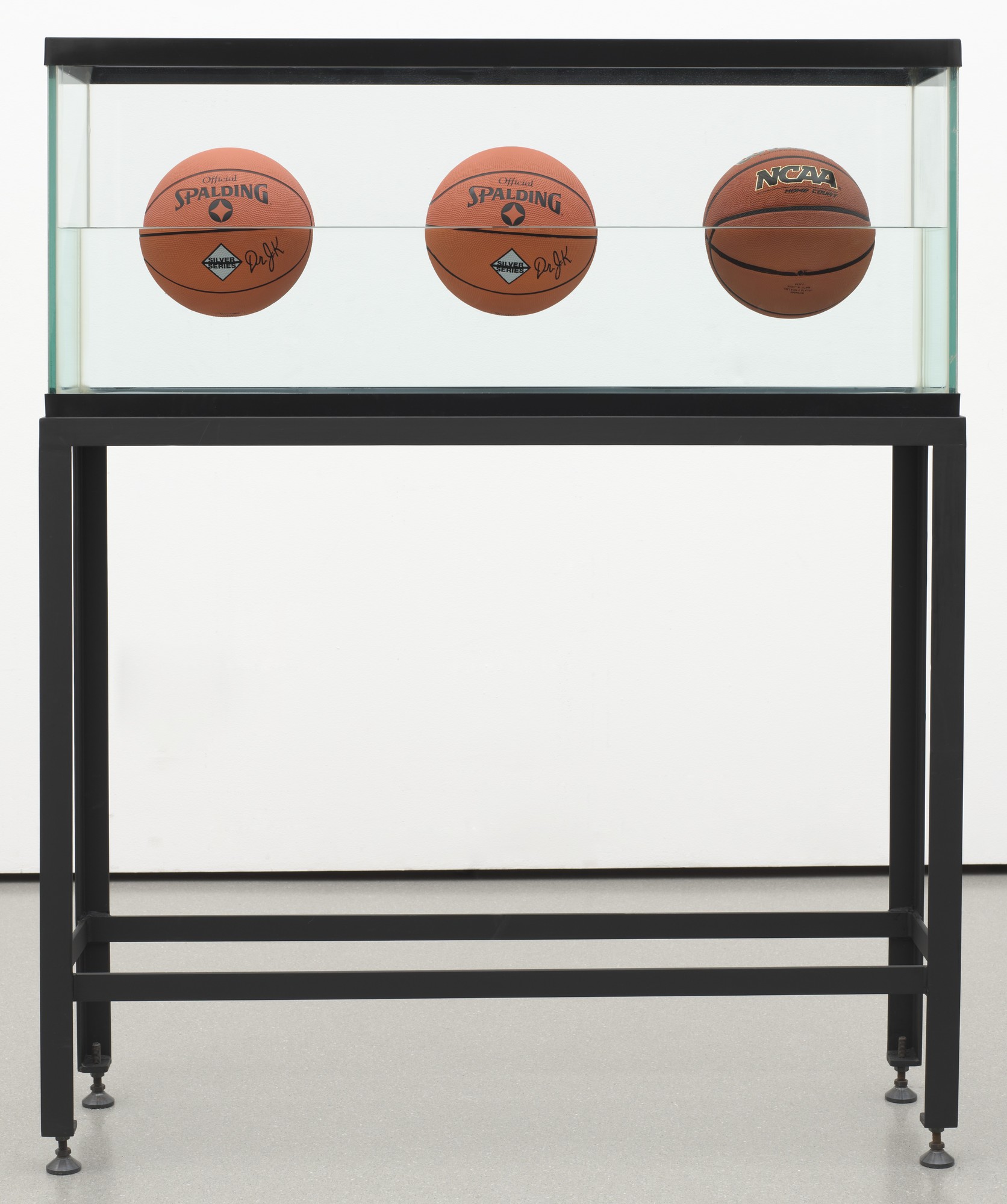Aesthetic Paradigms
Aesthetic paradigm is a unique set of philosophical notions or ways of thinking, including concepts, theories, research methods, assumptions, deductions and standards that constitute the theoretical framework of aesthetics.
Art as Imitation and Representation
Concepts
- Realistic representation has long been one of the most prominent and primitive tendencies of creative activity since antiquity.
- Since nature and reality has provided the most extensive and general basis for communication, realistic representation is always regarded as mainstream art.
- Before the advent of photography, realistic art had been the means of documenting human activities.
- There is no such thing as absolute objectivity in artistic representation. Artistic creation always partakes of subjective elements, no matter how realistic it is.
Philosophical Background
- Mimetic Theory: Imitation is the essence of art, while art imitates the natural world and social reality.
- Demokritos: The primal source of art is the copying of animal behavior.
- Plato: “Idea” is the spiritual content and the essence of all things; it belongs to primary substances. Objects in the natural and physical world are derived from the Idea; they are, hence, copies of the Idea, which belong to secondary substances. Art imitates physical objects; it is a copy of a copy, or so-called “a shadow of a shadow”.
- Aristoteles: Mimesis (imitation) is not an accurate representation of the reality, nor is it mechanically a copy or forgery; instead, it is a subjective “creation” by the artists, who draw materials from the prototypes of the things, and undertake the process of perfection and refinement, resulting in the archetypes that reveal the spiritual content of the physical objects.
Artistic Techniques
- Adhere to the principle of visual proportion, with various formal elements represented according to the actual relations among things, in order to maintain an integrated and consistent state.
- Scientific studies like anatomy, chromatics and perspective are useful for artists to adopt an objective approach to examining things in the world.
- Observe an object from a fixed angle in order to capture the state of the object in particular time and space.
- Begin with careful observation, and then apply meticulous and sophisticated techniques.
- Make good use of increasingly advanced technologies, for example, with the application of viewfinder, photography, computer, etc.
Apart from paintings, various artforms like weaving, architecture, dancing, singing are also regarded as “art as imitation and representation”.








Realistic artworks are usually works of imitation or representation.

The Entrance to the Grand Canal, Venice, c. 1730
Canaletto (1697–1768)
Oil on canvas
49.6 x 73.6 cm
Museum of Fine Arts, Houston

The Lady of Shalott, 1888
John William Waterhouse (1849 - 1917)
Oil on canvas
153 x 200 cm
Tate Britain, London

Flower and Bird, 1945
Xie Zhi-liu (1910-1997)
Ink and color on paper

Big Self-Portrait, 1967 – 1968
Chuck Close (1940-)
Acrylic on canvas
273 x 212 cm
Walker Art Center, Minneapolis

We Do, 1993
Tam Cheung-on
Stoneware, glazed ceramics
23 x 62.5 x 38 cm
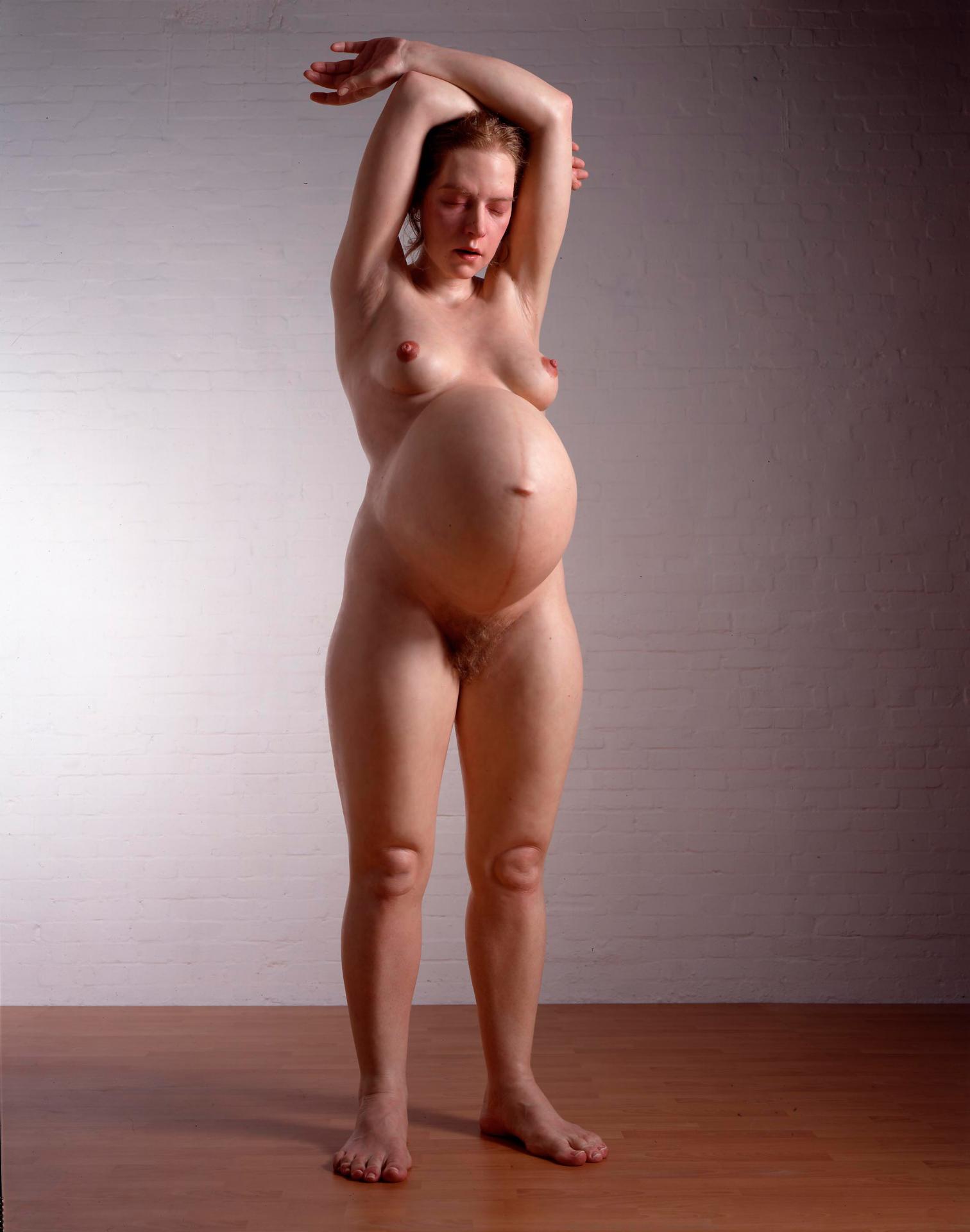
Pregnant woman, 2002
Ron Mueck (1958 - )
Fibreglass, resin, silicone
H 252 cm
National Gallery of Australia, Canberra
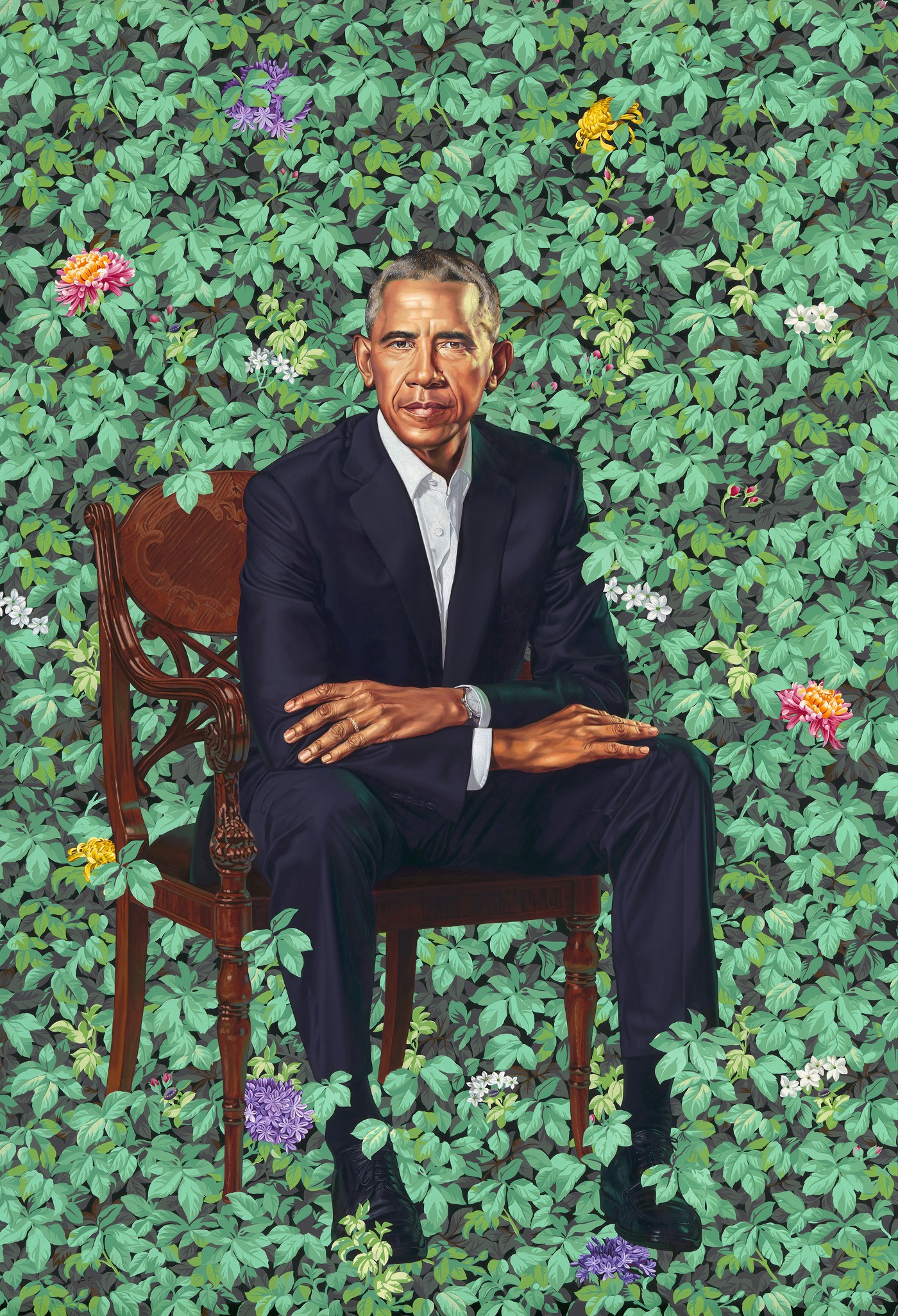
President Barack Obama, 2018
Kehinde Wiley (1977-)
Oil on canvas
213.7 × 147 × 3.2 cm
National Portrait Gallery, Smithsonian Institution, Washington, DC
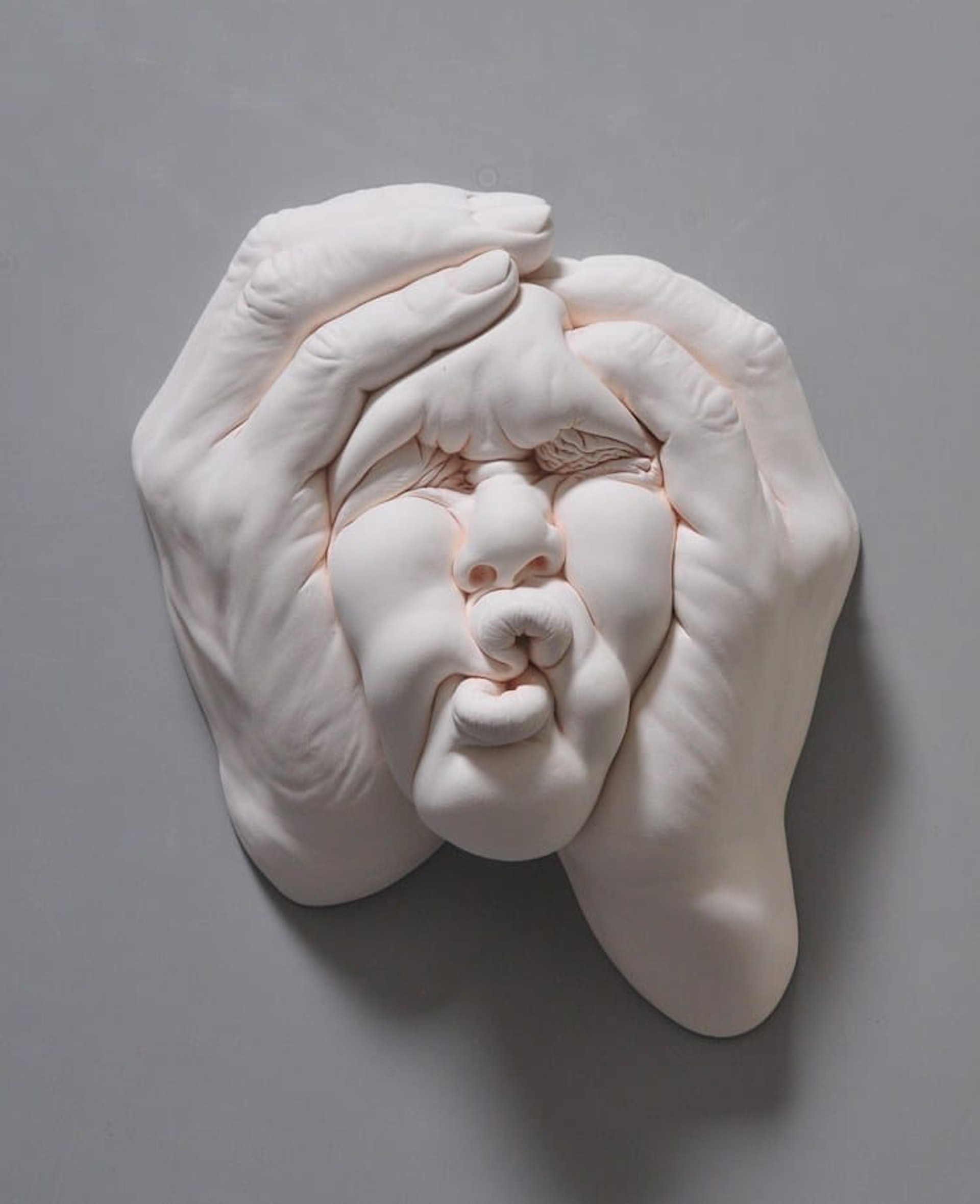
Lucid Dream II - 7: Porcelain sculpture in Progress, 2018
Johnson Tsang (1960 - )
Porcelain
It is a profound experience looking at Ophelia in Tate Britain, which powerfully engages viewers with its realistic representation.

Ophelia, 1851 - 1852
Sir John Everett Millais (1829 - 1896)
Oil on canvas
76.2 x 111.8 cm
Tate Britain, London

Photographic works that challenge the notion of “art as imitation and representation”.

Jamie, 2010
Alexa Meade (1986 - )
Photographie
40.6 x 50.8 cm


Photographic works that challenge the notion of “art as imitation and representation”.

Blueprint, 2010
Alexda Meade (1986 - )
Photographie
61 x 45.7 cm


Spectacle, 2010
Alexa Meade (1986 - )
Photographie
61 x 45.7 cm

Photographic works that challenge the notion of “art as imitation”. It gives an impression that a human character in a painting has entered the reality, creating a surrealistic sense.

Grapefruit, 2009
Alexa Meade (1986 - )
Photographie
22.9 x 30.5 cm

Bend, 2012
Alexa Meade (1986 - )
Photographie
28 x 35.5 cm

Timmy Tourist, 2009
Alexa Meade (1986 - )
Photographie
76.2 x 114.3 cm

Art as Expression
Concepts
- Art is the expression of subjective imagination and feelings.
- Art employs image or form to externalize people’s inner emotional state for the purpose of expression and communication.
- Art is the expression of repressed human desires.
- During art appreciation, viewers feel the emotions that artists want to communicate.
Philosophical Background
- Croce: The essence of art is intuition. Intuition, with pleasure as its source, is identical to expression.
- Collingwood: Art is the expression of emotion; it is also an activity that makes emotion individualized, lucid and intelligible.
- Tolstoy: Art is an activity in which an artist communicates the feelings he or she experienced to an audience.
- Freud: The essence of art is the sublimation of primitive urges and instincts.
Artistic Techniques
- The use of formal elements is liberated from the limitation to offering a faithful representation of the subject matter. Use of colours and shapes become more subjective, simplified or exaggerated.
- Present vigorous human actions and outer manifestations of inner states.
- Completely abandon and deviate from the appearances of an objective reality generated by logic and orderly experience.
Expressive works usually give strong presentations of certain scenes or themes.
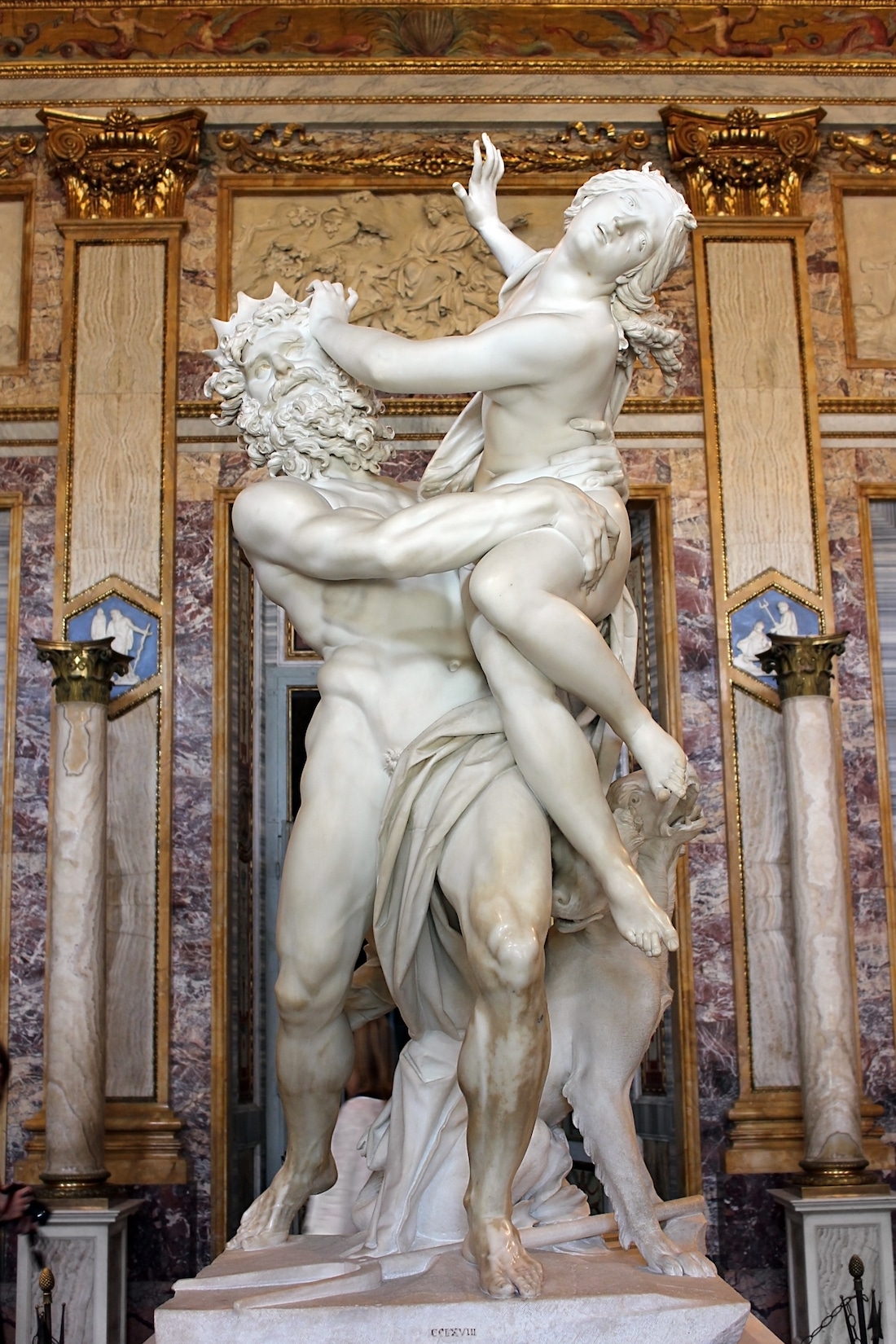
The Rape of Proserpina, 1621-1622
Gian Lorenzo Bernini (1598-1680)
Marble
H 225 cm
Borghese Gallery, Rome

The Destroyed City, 1951
Ossip Zadkine (1890-1967)
Bronze
H 650 cm
Rotterdam, Netherlands
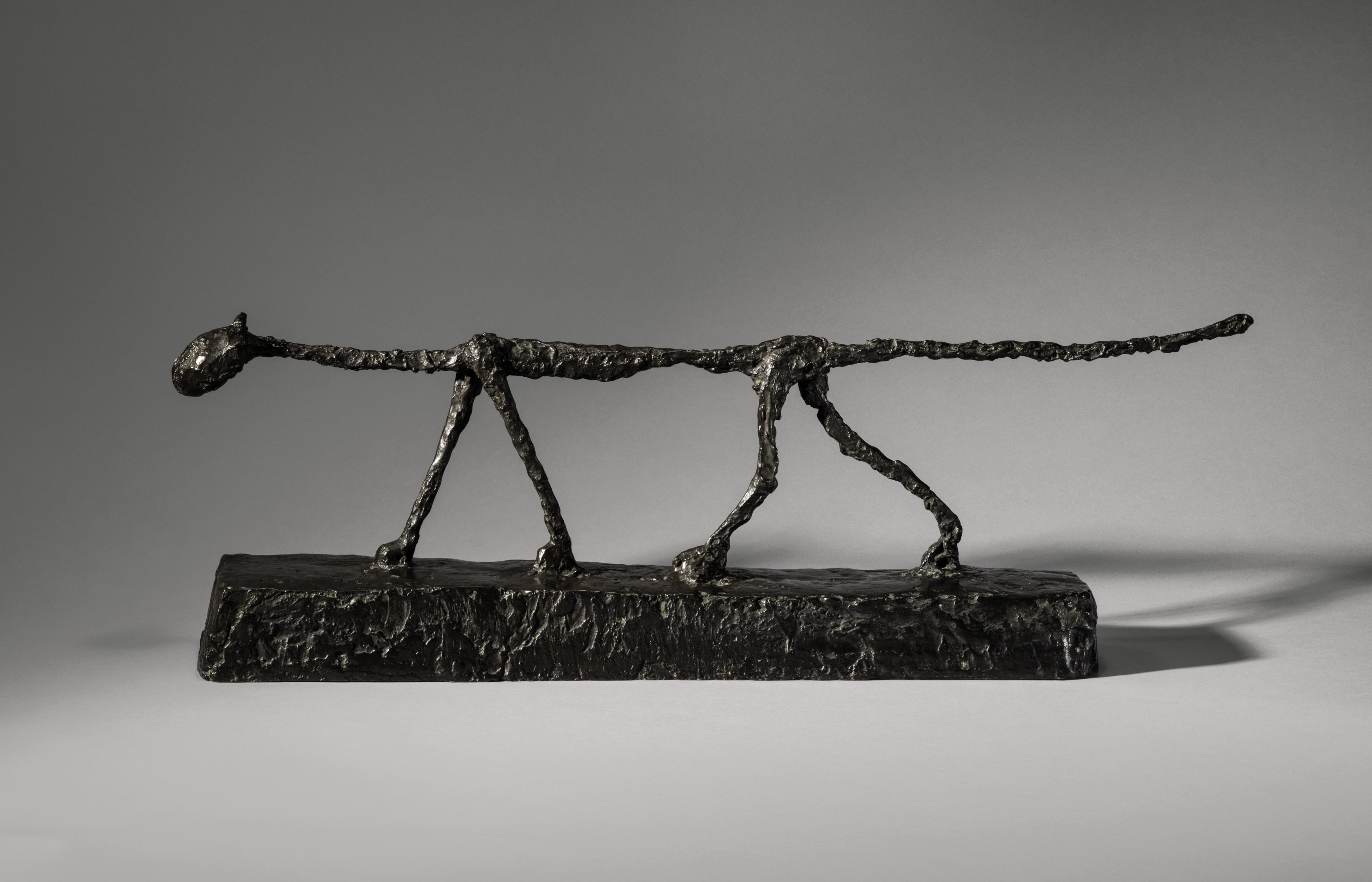
Le Chat, 1951-1955
Alberto Giacometti (1901-1966)
Bronze with dark brown patina
L 81.5 cm
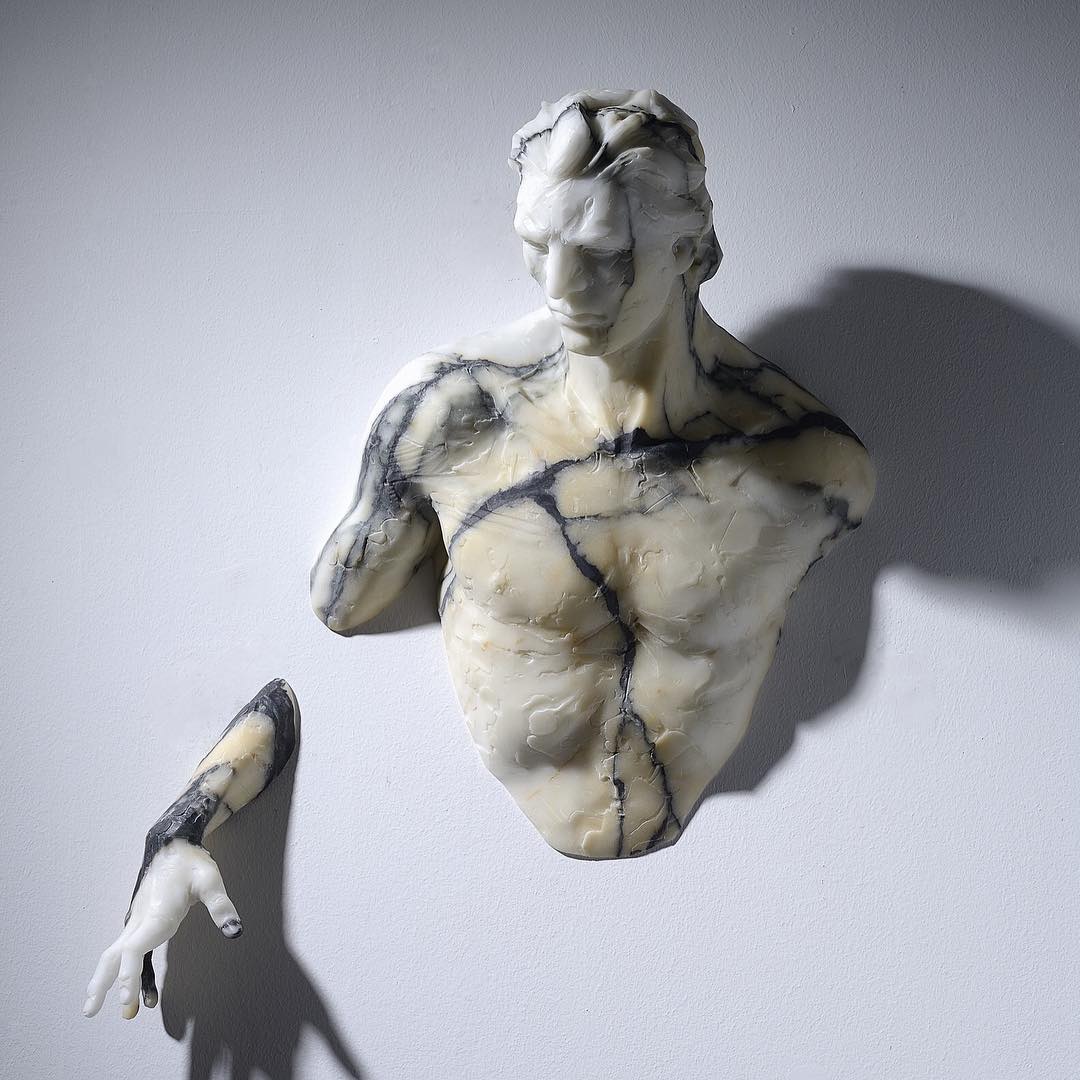
Light, 2019
Matteo Pugliese (1969-)
Paonazzo Marble
86 x 50 x 24cm
Expressive works usually give strong presentations of certain scenes or themes.
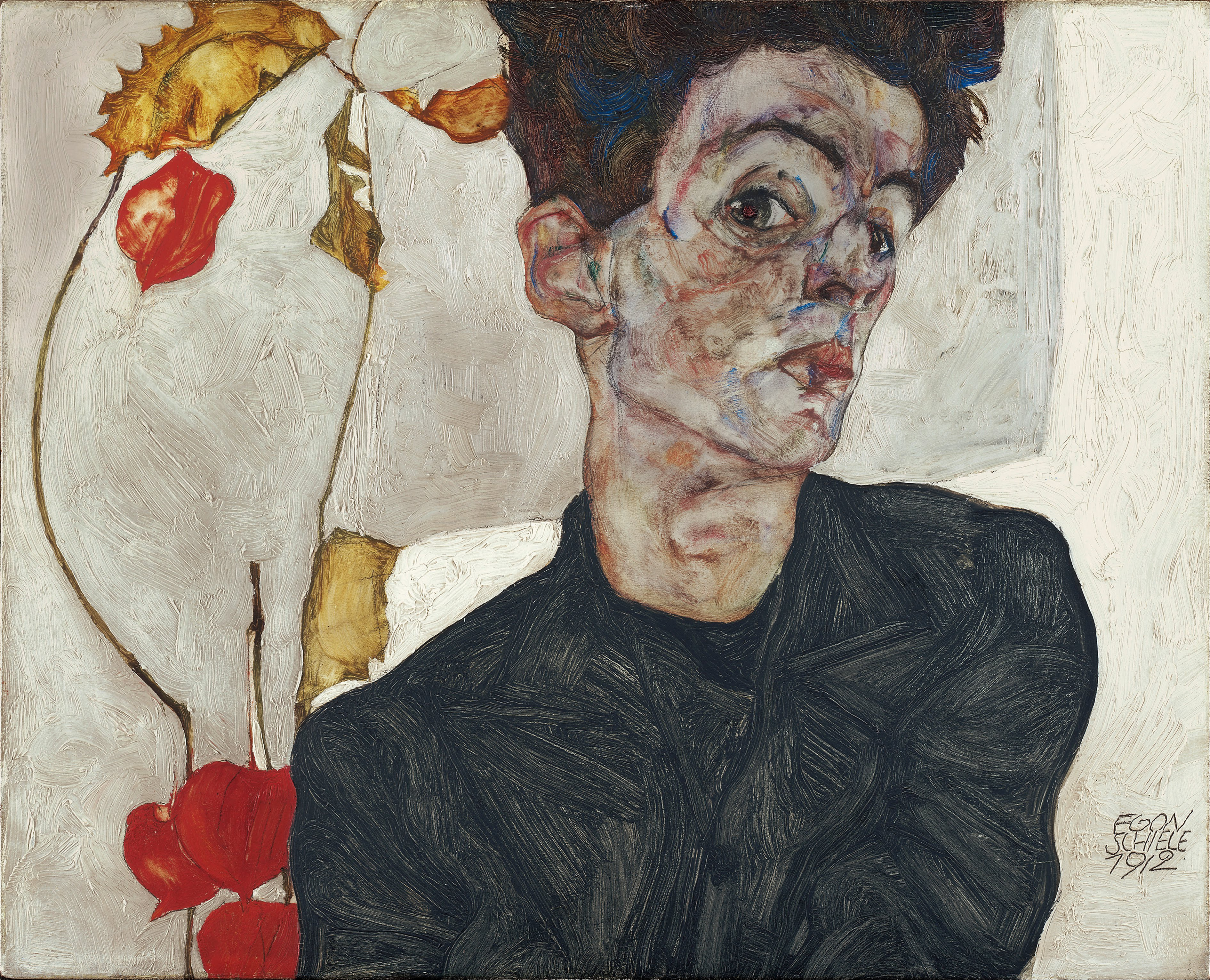
Self-Portrait with Physalis, 1912
Egon Schiele (1890-1918)
Oil on canvas
32.2 x 39.8 cm
Leopold Museum, Vienna
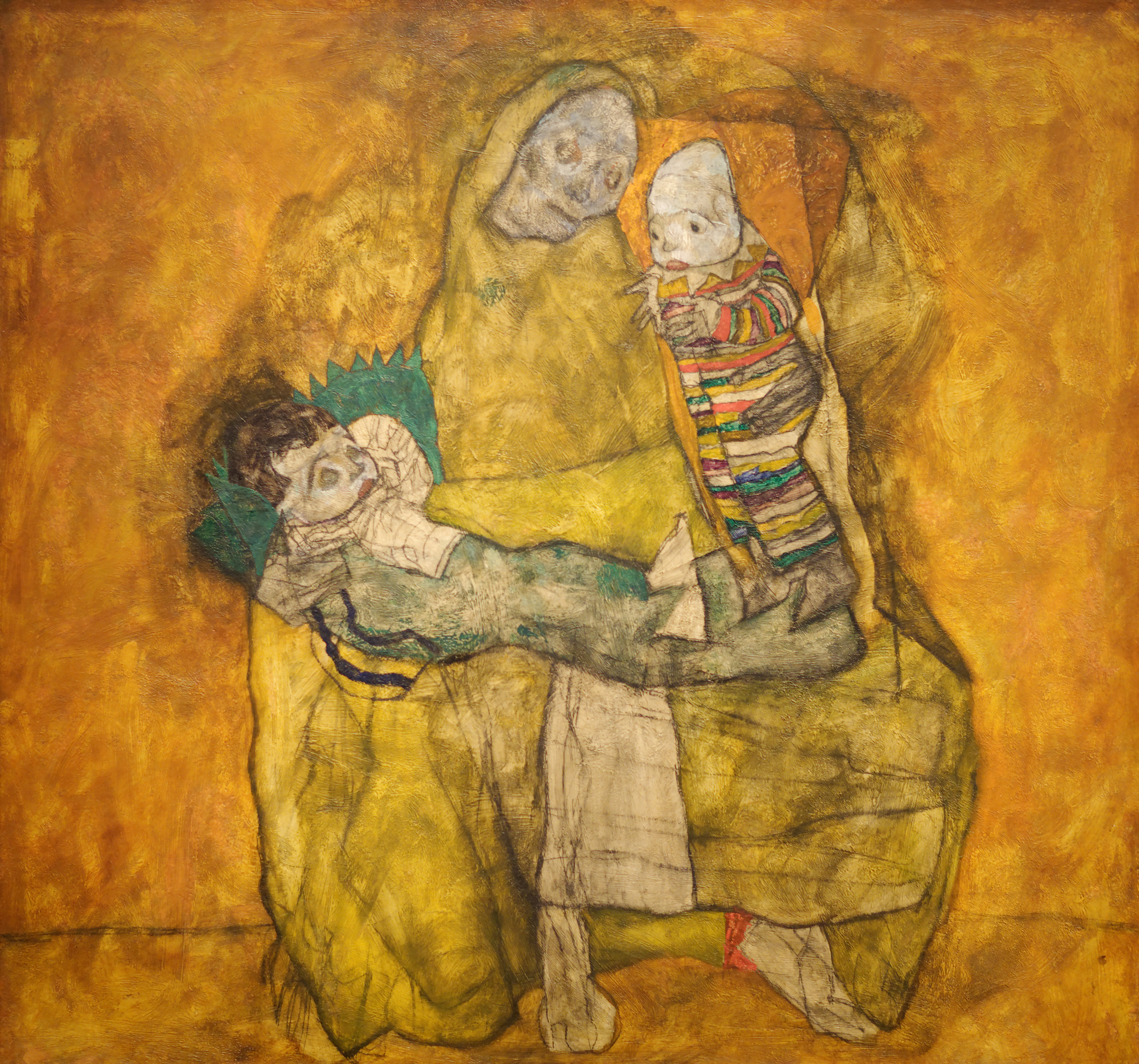
Mother with two children II, 1915
Egon Schiele (1890-1918)
Oil on canvas
149 x 160 cm
Leopold Museum, Vienna
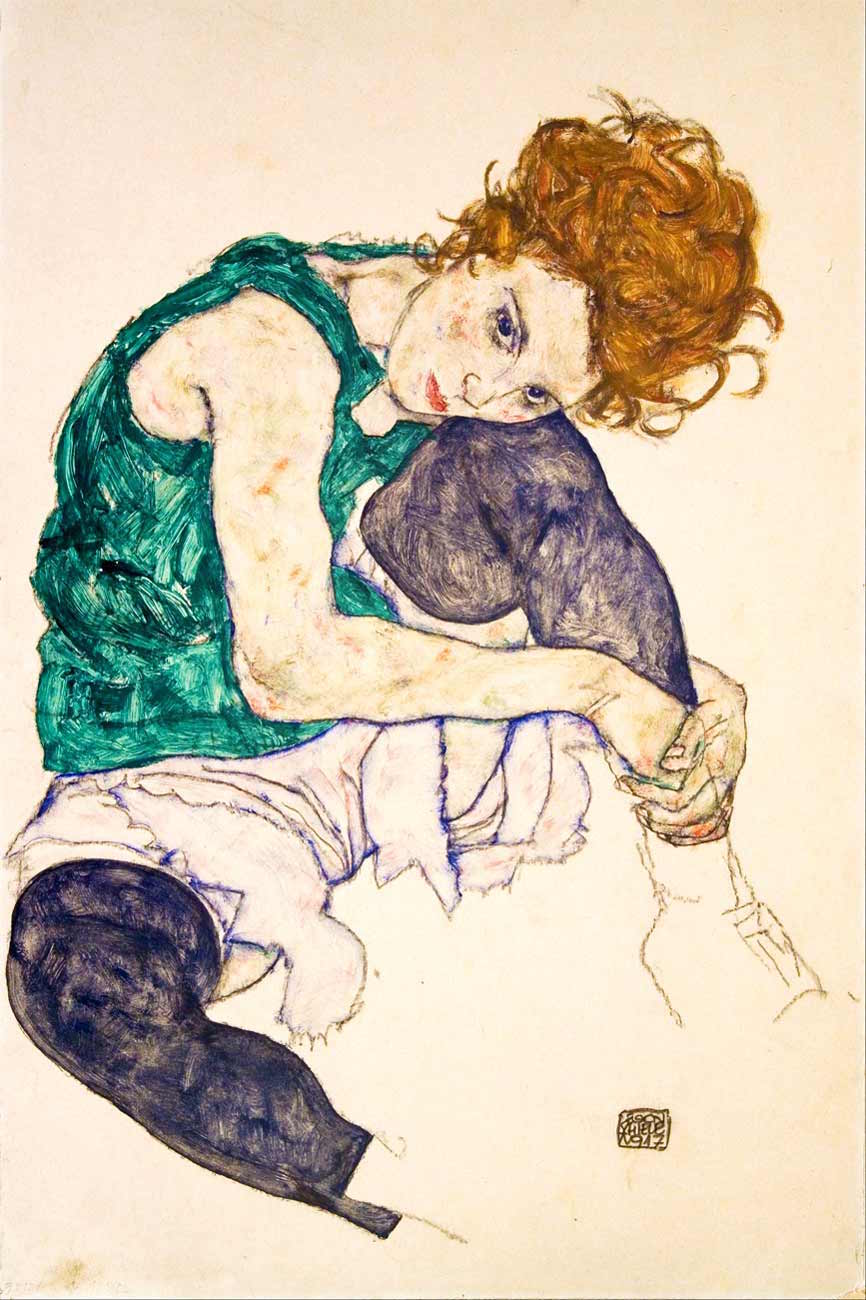
Seated Woman with Bent Knee, 1917
Egon Schiele (1890-1918)
Crayon, gouache, watercolor on paper
46 x 30.5 cm
Narodni Gallery, Prague

Portrait of Paris von Gütersloh, 1918
Egon Schiele (1890-1918)
Oil on canvas
140.02 x 110.33 cm
Minneapolis Institute of Art, Minneapolis, Minnesota
Expressive works usually give strong presentations of certain scenes or themes.
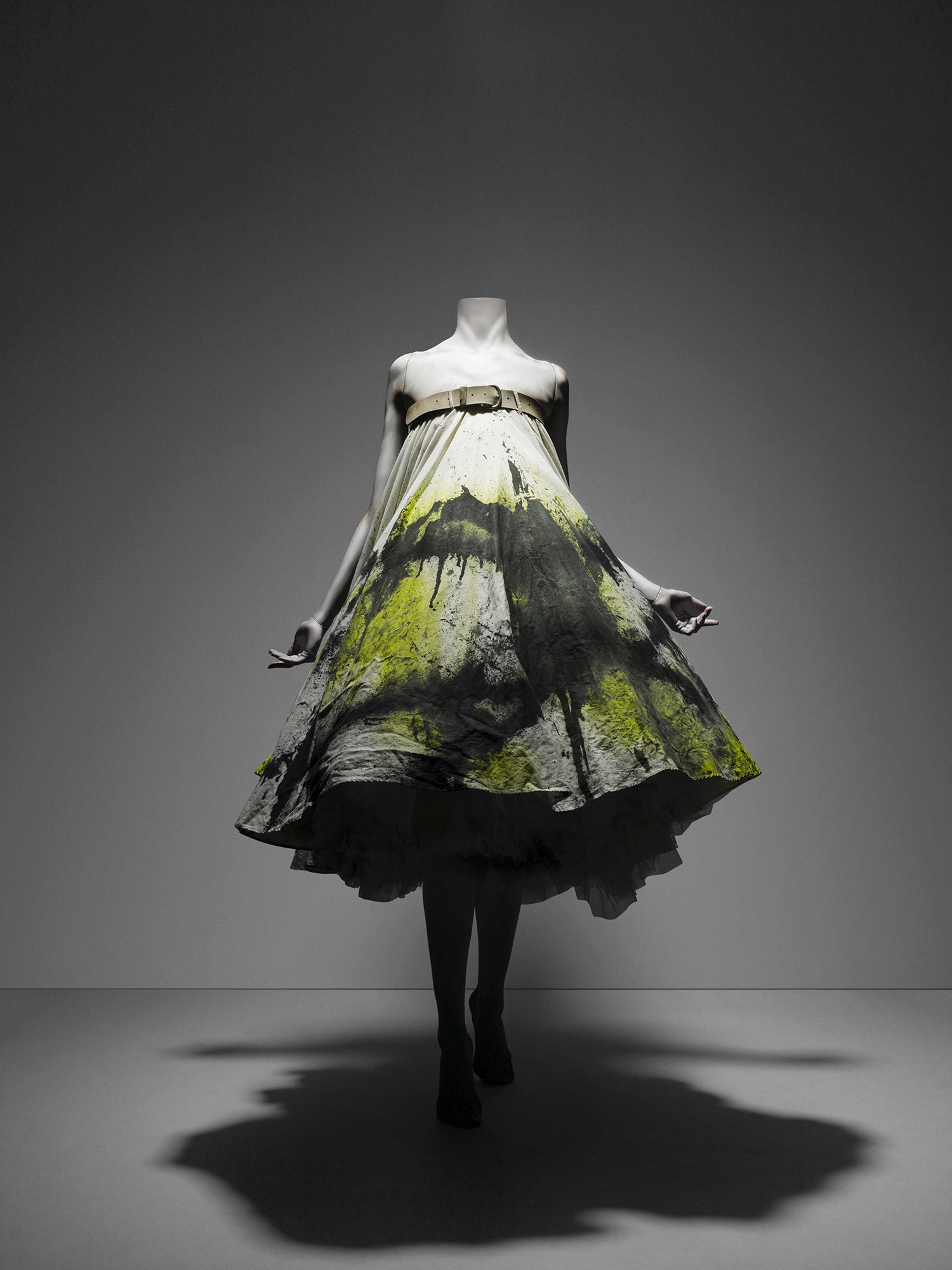
No. 13, spring/summer 1999
Alexander McQueen (1969 - 2010)
White cotton muslin spray-painted black and yellow with underskirt of white

VOSS, spring/summer 2001
Alexander McQueen (1969 - 2010)
Red and black ostrich feathers and glass medical slides painted red
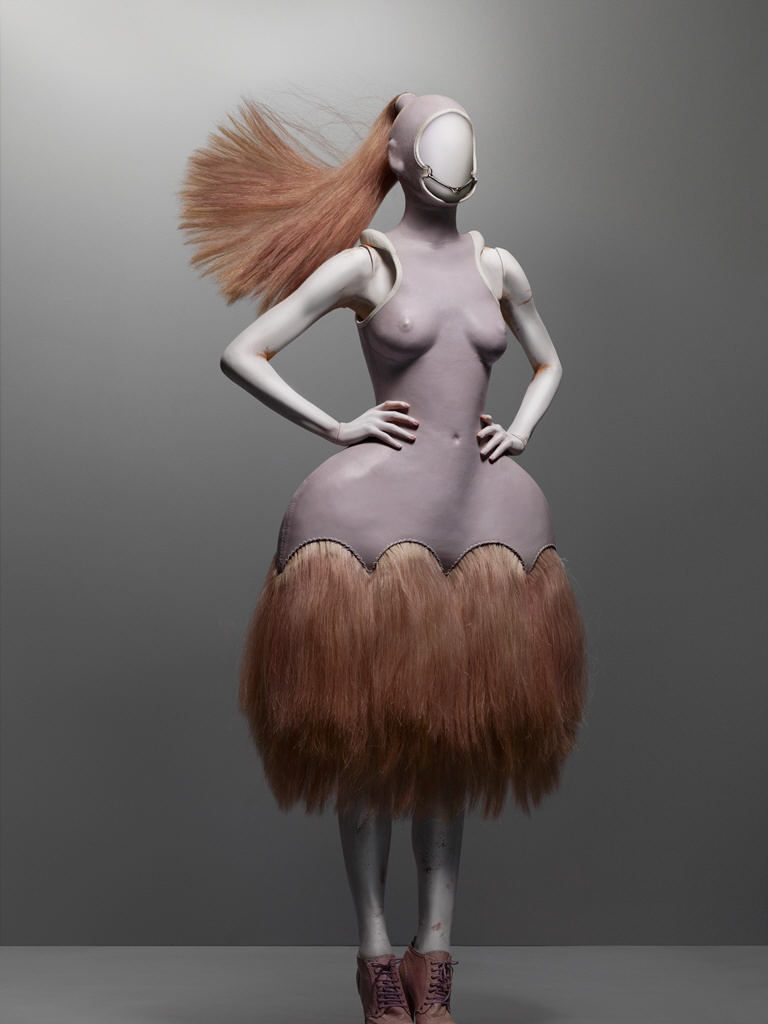
It’s Only a Game, spring/summer 2005
Alexander McQueen (1969 - 2010)
Lilac leather and horsehair
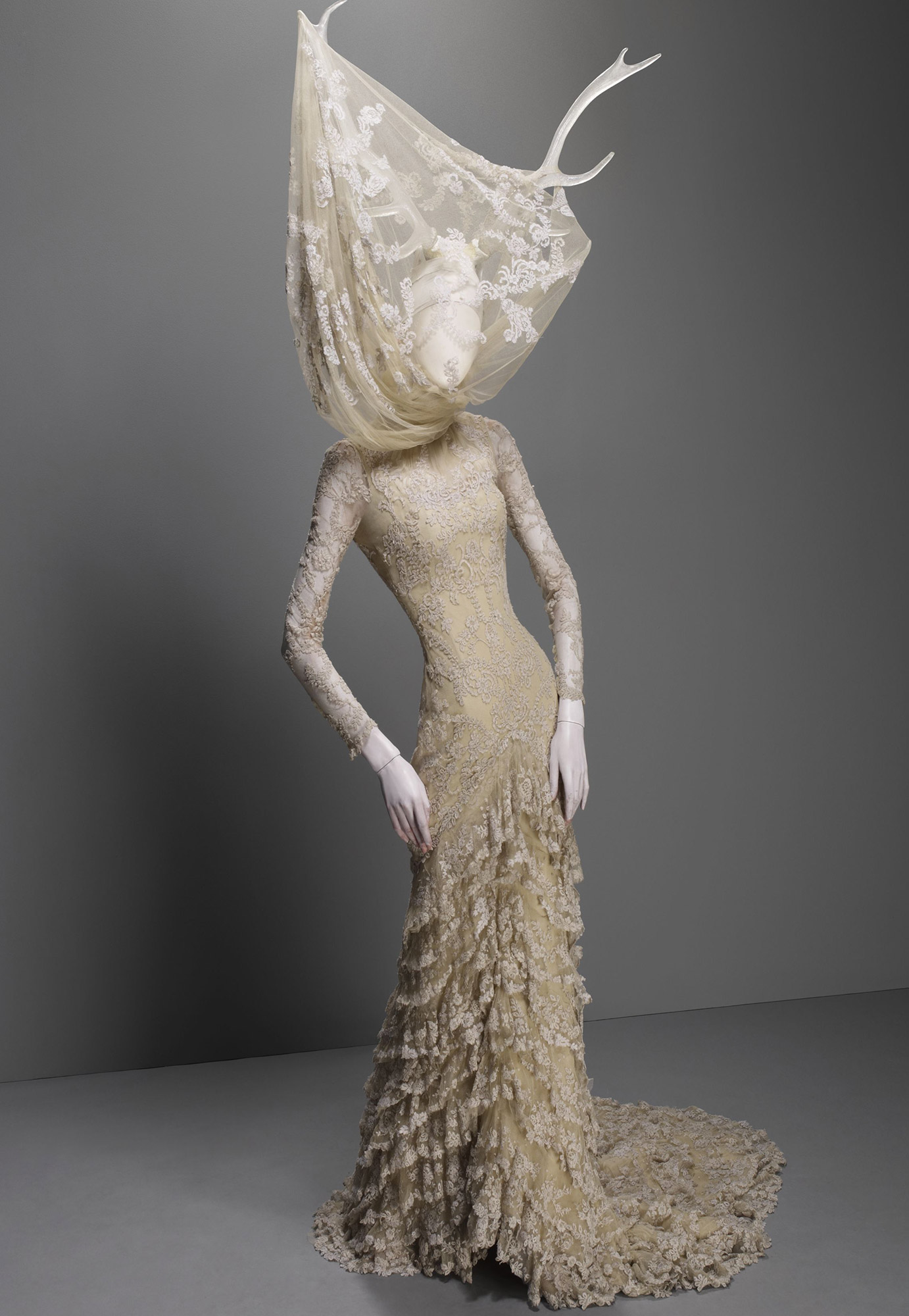
Widows of Culloden, autumn/winter 2006–7
Alexander McQueen (1969 - 2010)
Cream silk tulle and lace with resin antlers
Expressive works usually give strong presentations of certain scenes or themes.
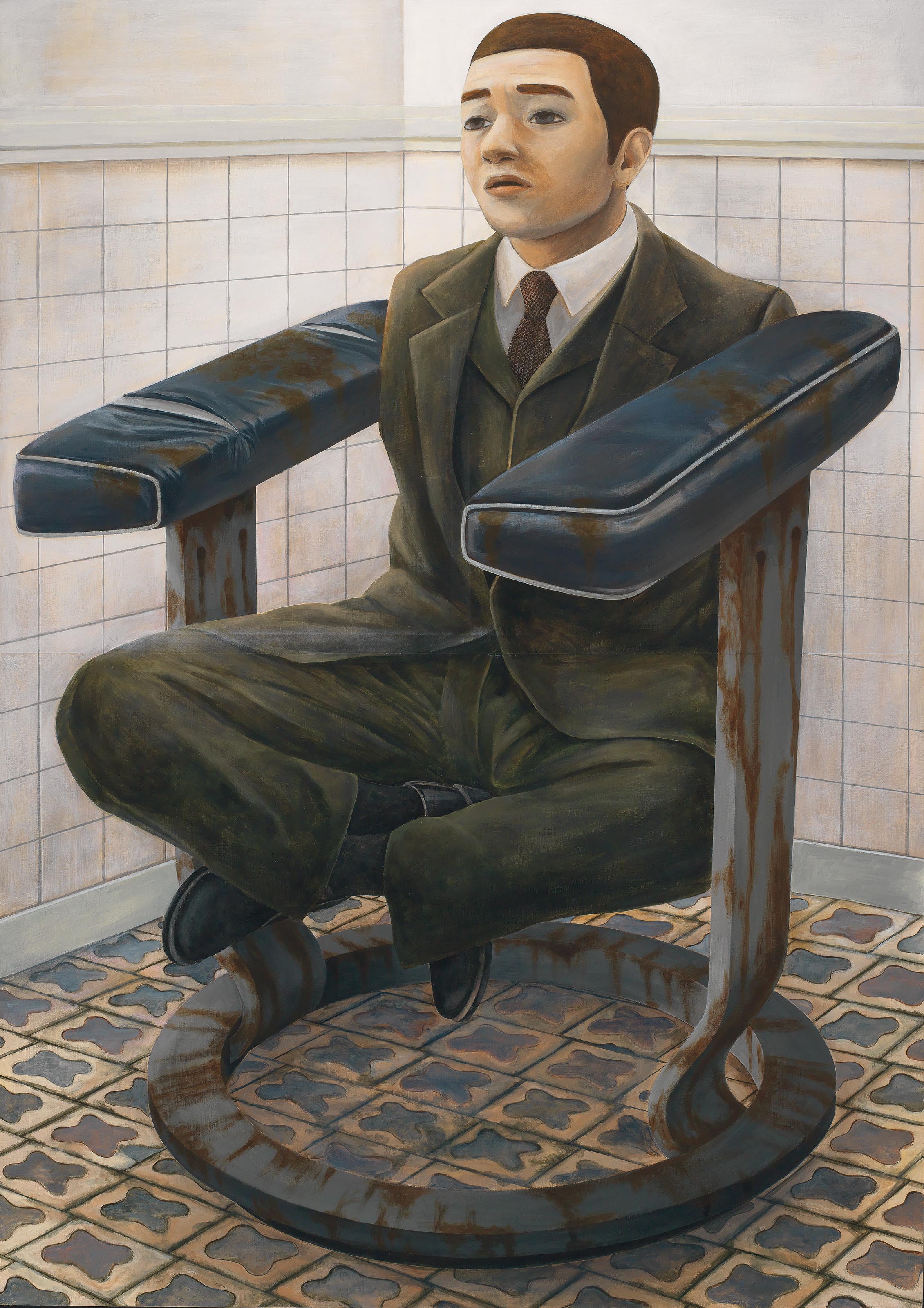
General Manager's Chair In An Abandoned Building, 1996
Tetsuya Ishida (1973 - 2005)
Acrylic on board
145.6 x 103 cm

Recalled, 1998
Tetsuya Ishida (1973 - 2005)
Acrylic on board
145.6 x 206 cm
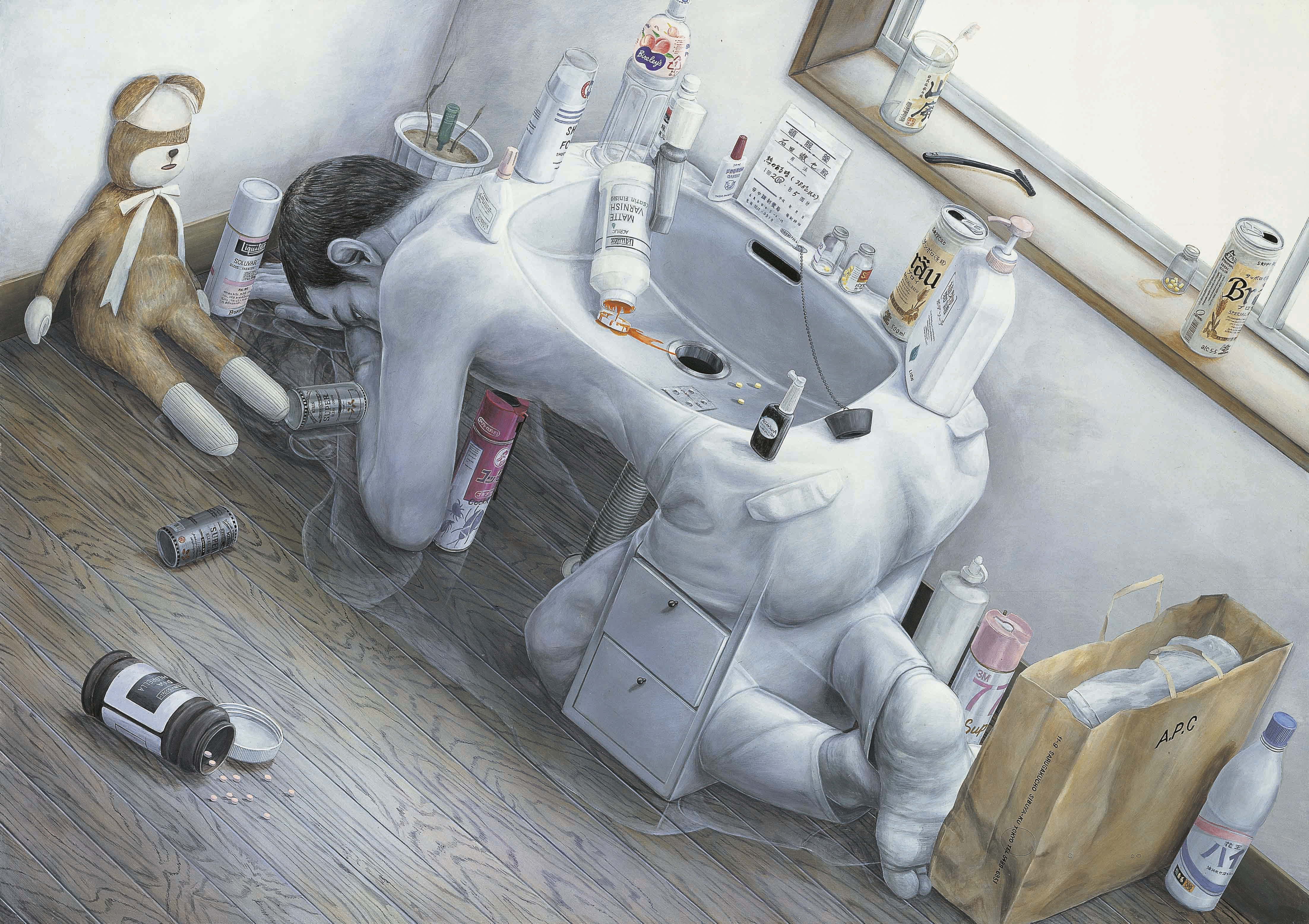
Decided by Myself, 1999
Tetsuya Ishida (1973 - 2005)
Oil on wood panel
103 x 147 cm
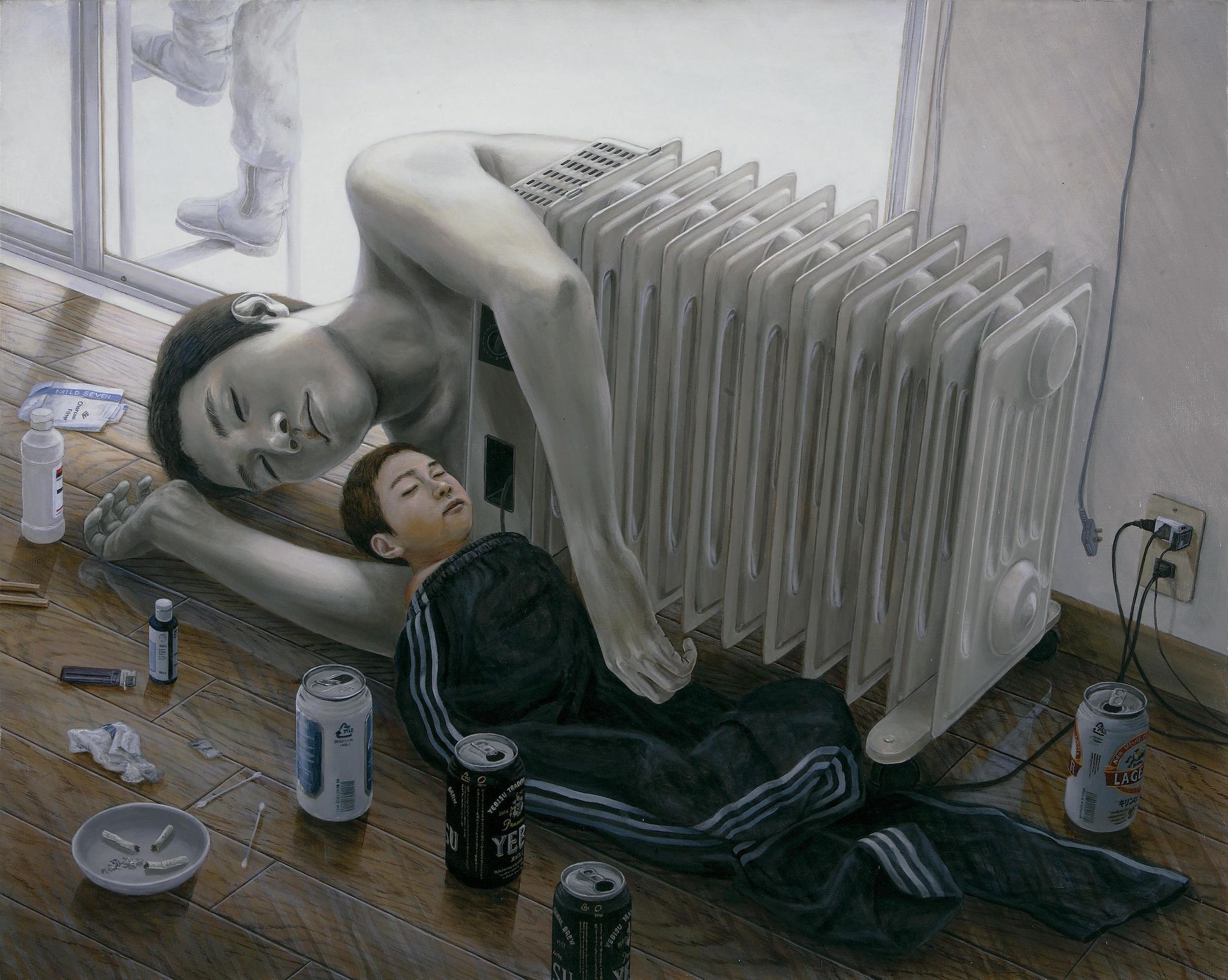
Greenhouse, 2003
Tetsuya Ishida (1973 - 2005)
Expressive works usually give strong presentations of certain scenes or themes.
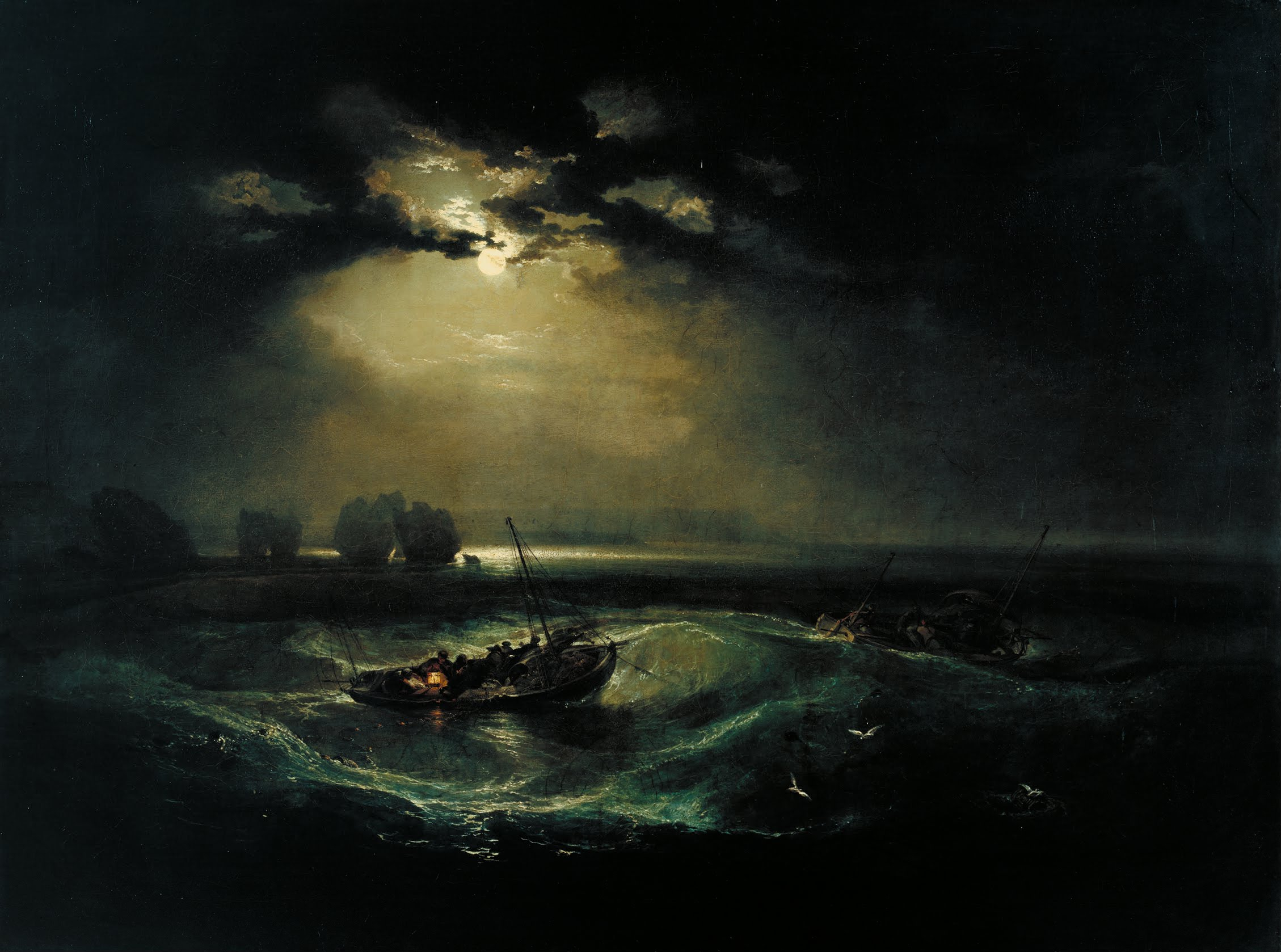
Fishermen at Sea, 1796
J. M. W. Turner (1775–1851)
Oil on canvas
91.4 x 122.2 cm
Tate Britain, London

The Burning of the Houses of Parliament, 1835
J. M. W. Turner (1775 - 1851)
Oil on canvas
123 x 92.7 cm
Philadelphia Museum Of Art
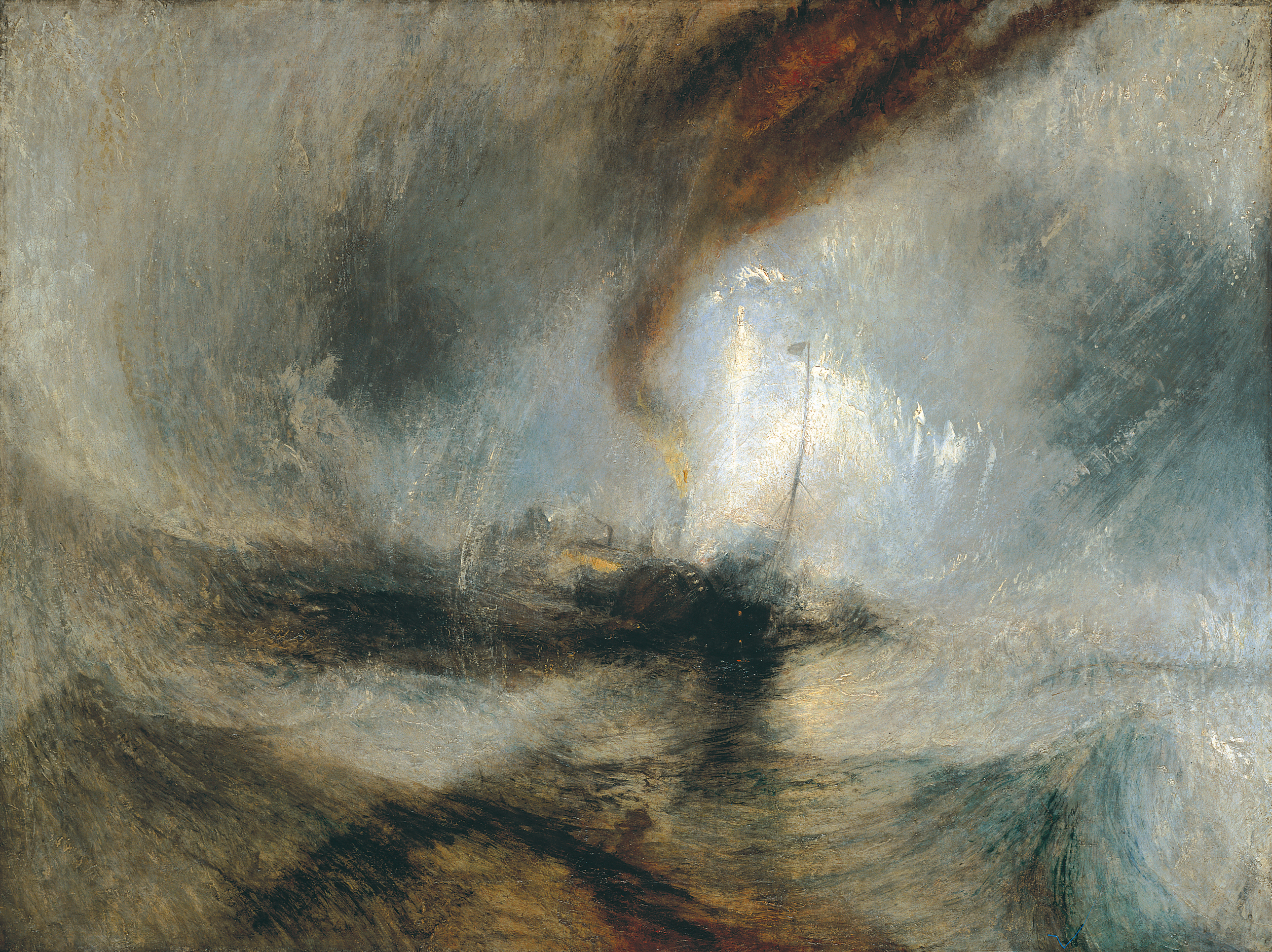
Snow Storm: Steam-Boat off a Harbour's Mouth, 1842
J. M. W. Turner (1775–1851)
Oil on canvas
91 × 122 cm
Tate Britain, London
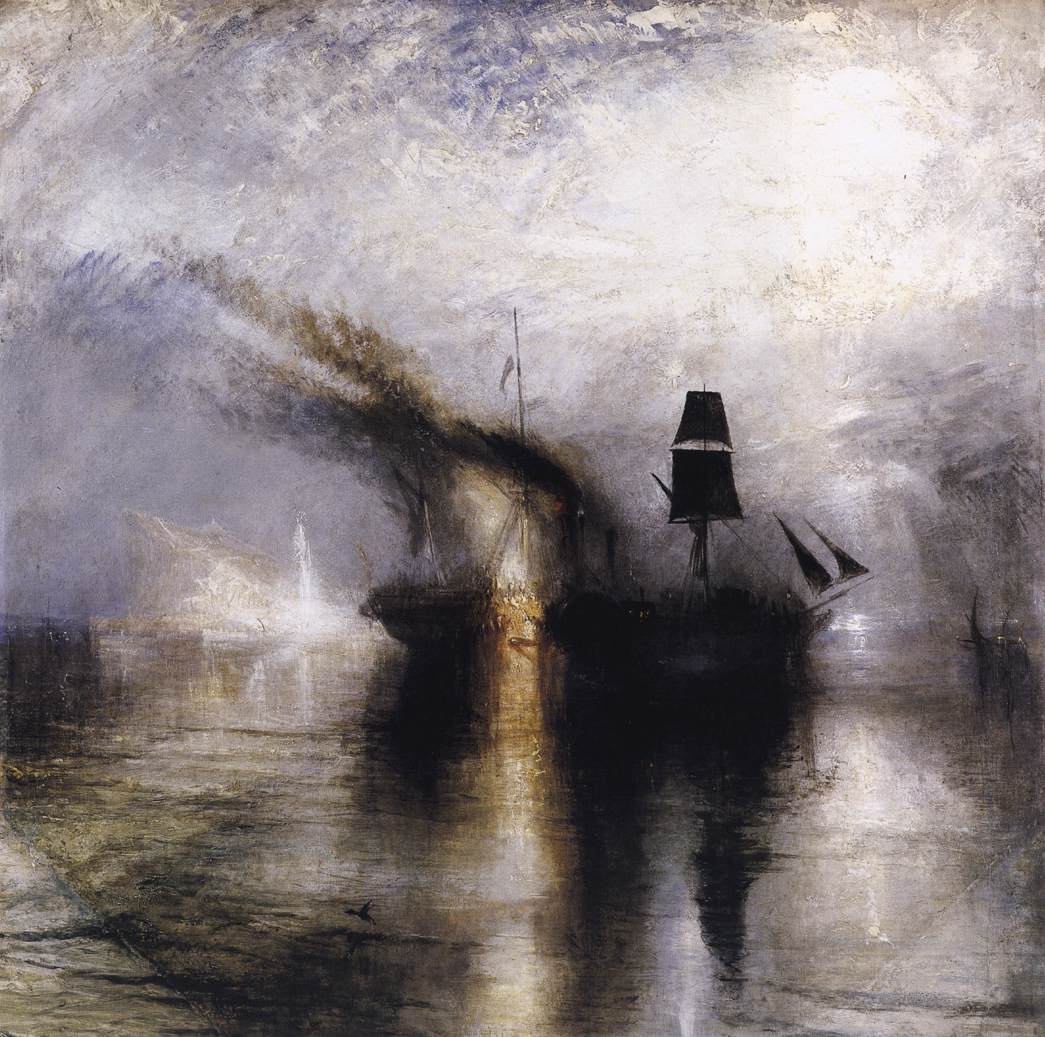
Peace - Burial at Sea, 1842
J. M. W. Turner (1775–1851)
Oil on canvas
87 × 86.7 cm
Tate Britain, London
Expressive works usually give strong presentations of certain scenes or themes.
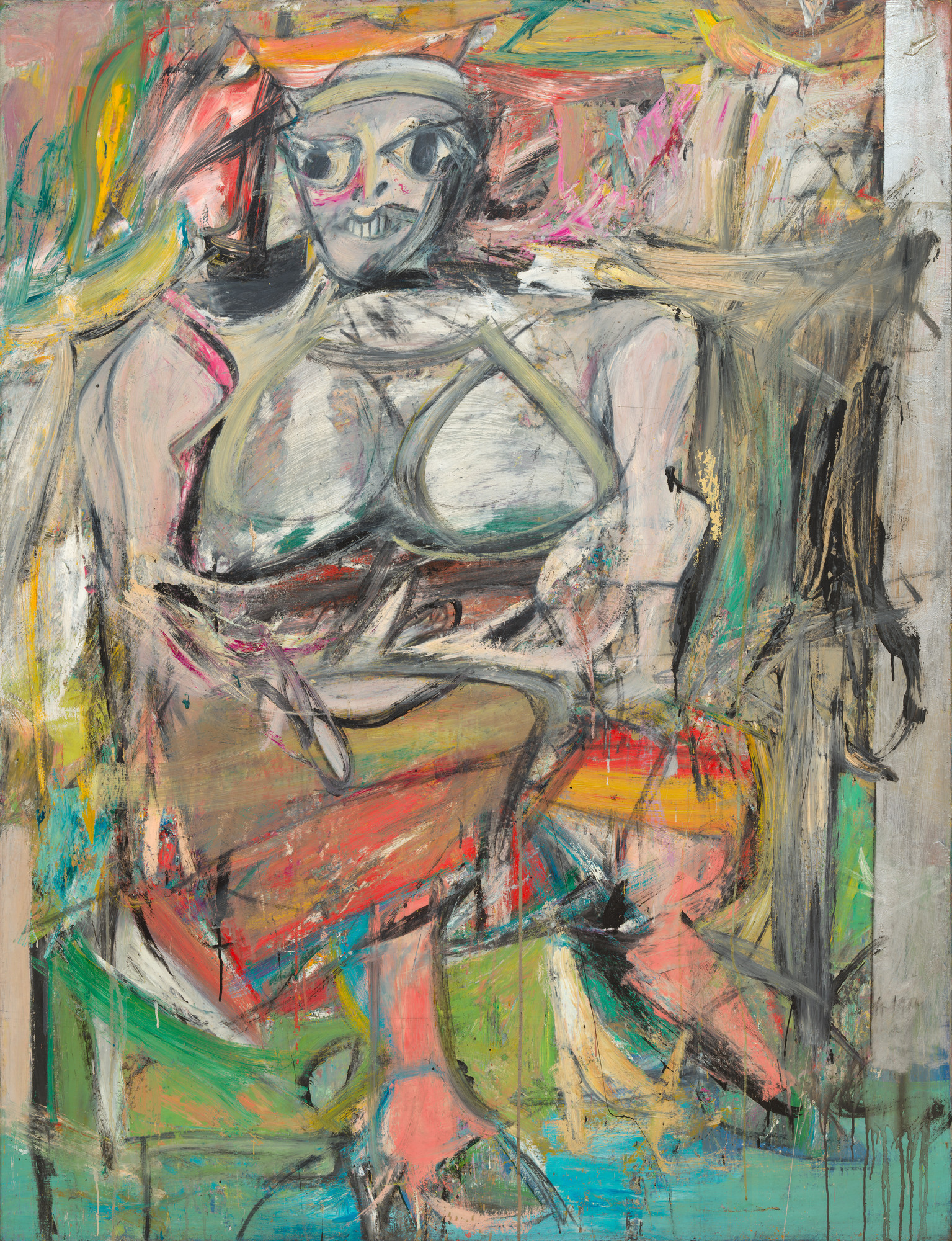
Woman I, 1950 – 1952
Willem de Kooning (1904 - 1997)
Oil and metallic paint on canvas
192.7 x 147.3 cm
The Museum of Modern Art, New York
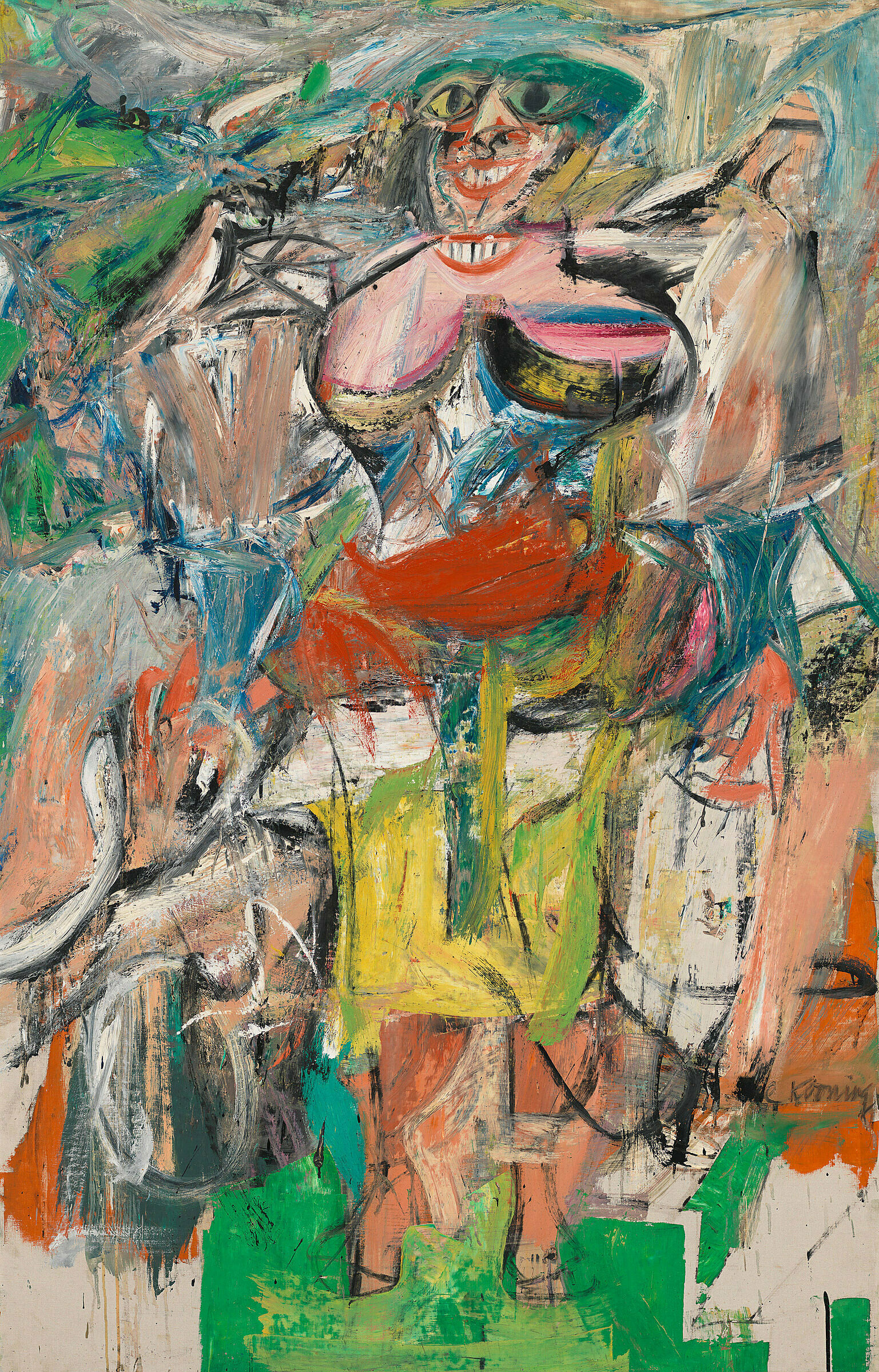
Woman and Bicycle, 1952–1953
Willem de Kooning (1904 - 1997)
Oil, enamel, and charcoal on linen
194.3 × 124.8 cm
Whitney Museum of American Art, New York
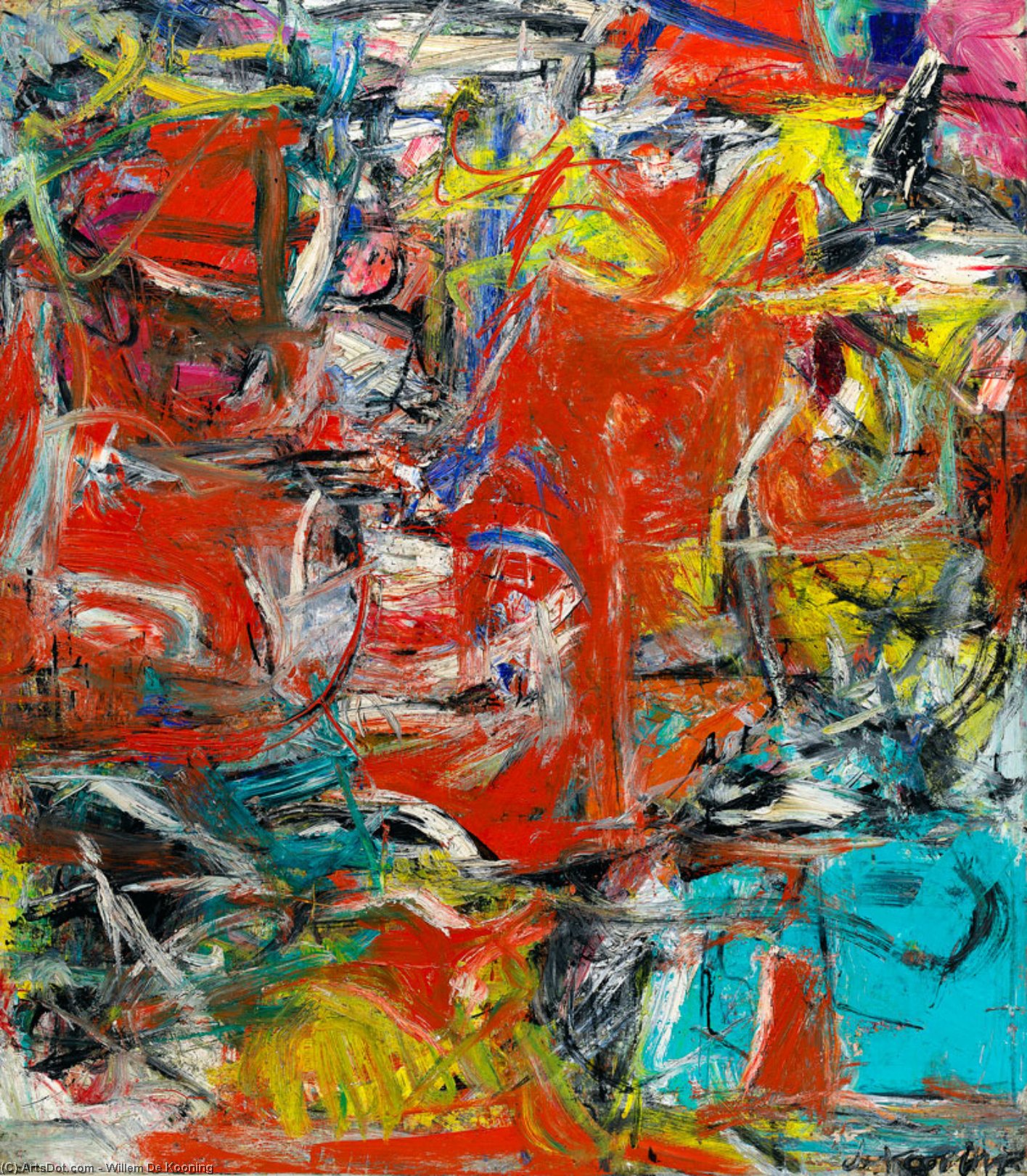
Composition, 1955
Willem de Kooning (1904 - 1997)
Oil, enamel, and charcoal on canvas
201 x 175.6 cm
Solomon R. Guggenheim Museum, New York
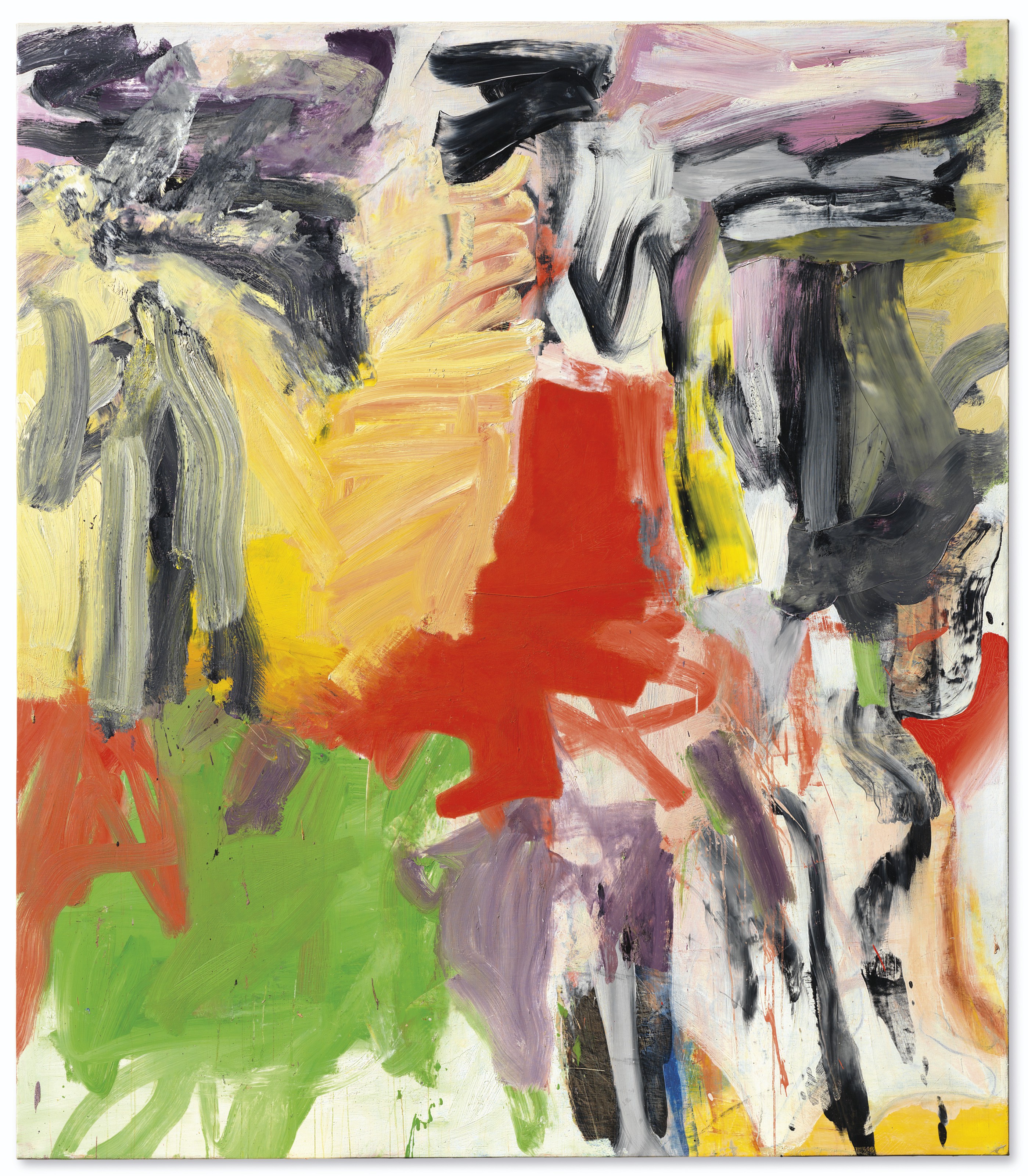
Untitled I, 1979
Willem de Kooning (1904 - 1997)
Oil on canvas
204.4 x 178.4 cm
Art as Form
Concepts
- Emphasize self-sufficiency of an artwork. Advocate art for art’s sake - nothing else matters.
- Consider art as purely a visual presentation with an emphasis on its aesthetic function. The role of artists is to explore formal properties like colours, lines, shapes and composition instead of articulating art as literature, story-telling or narratives.
- During art appreciation, viewers use their intuition to apprehend the formal properties of artworks.
Philosophical Background
- Kant: Disinterested character of the aesthetic – with an emphasis on the object itself, and free from any circumstances that might interfere with the aesthetic experience, including morality, intellectuality, beliefs or personal interests.
- Bell: The shared quality of all artworks is their possession of significant form, which is comprised of artists’ organizations of visual elements like colours, lines, spaces, etc.
- Greenberg: Artwork is self-referential – it carries values intrinsic to the work itself, independent of social, political, economic or moral values extrinsic to art. With its emphasis on flatness of canvas, an artwork compels viewers’ attention to the picture plane.
Artistic Techniques
- Expressionless and non-elucidatory art, with attention drawn away from the realm of human feelings. Usually employ the purest colours and the basic shapes and structures.
- Gradually reduce natural appearances of the things to their underlying basic structures, while dropping all irrelevant parts or excessive details, in order to offer a general sense of beauty.
- Deviate from figurative art while gravitating toward pure abstraction.
Colour
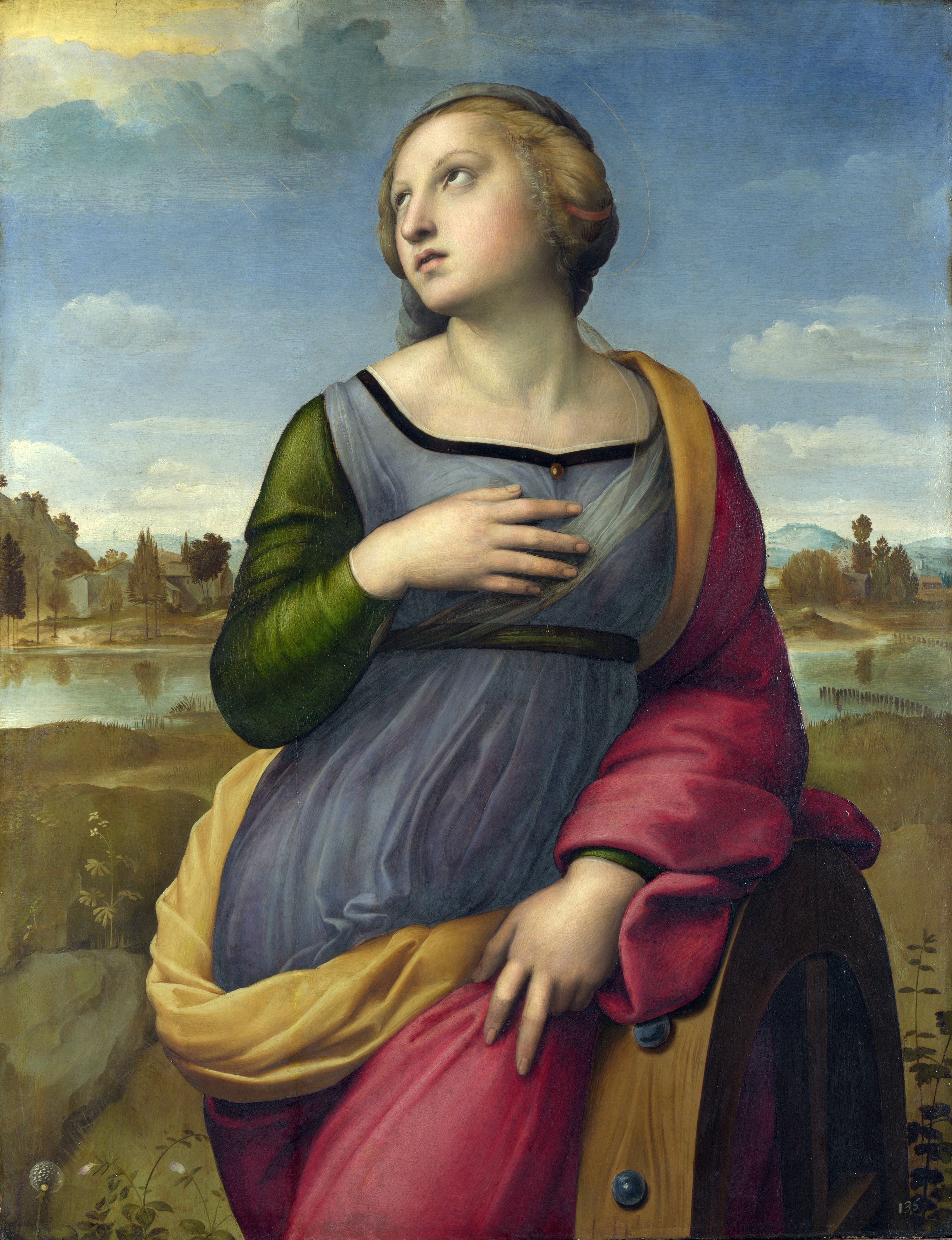
Saint Catherine of Alexandria, c. 1507
Raphael (1483 - 1520)
Oil on poplar
72.2 x 55.7 cm
National Gallery, London
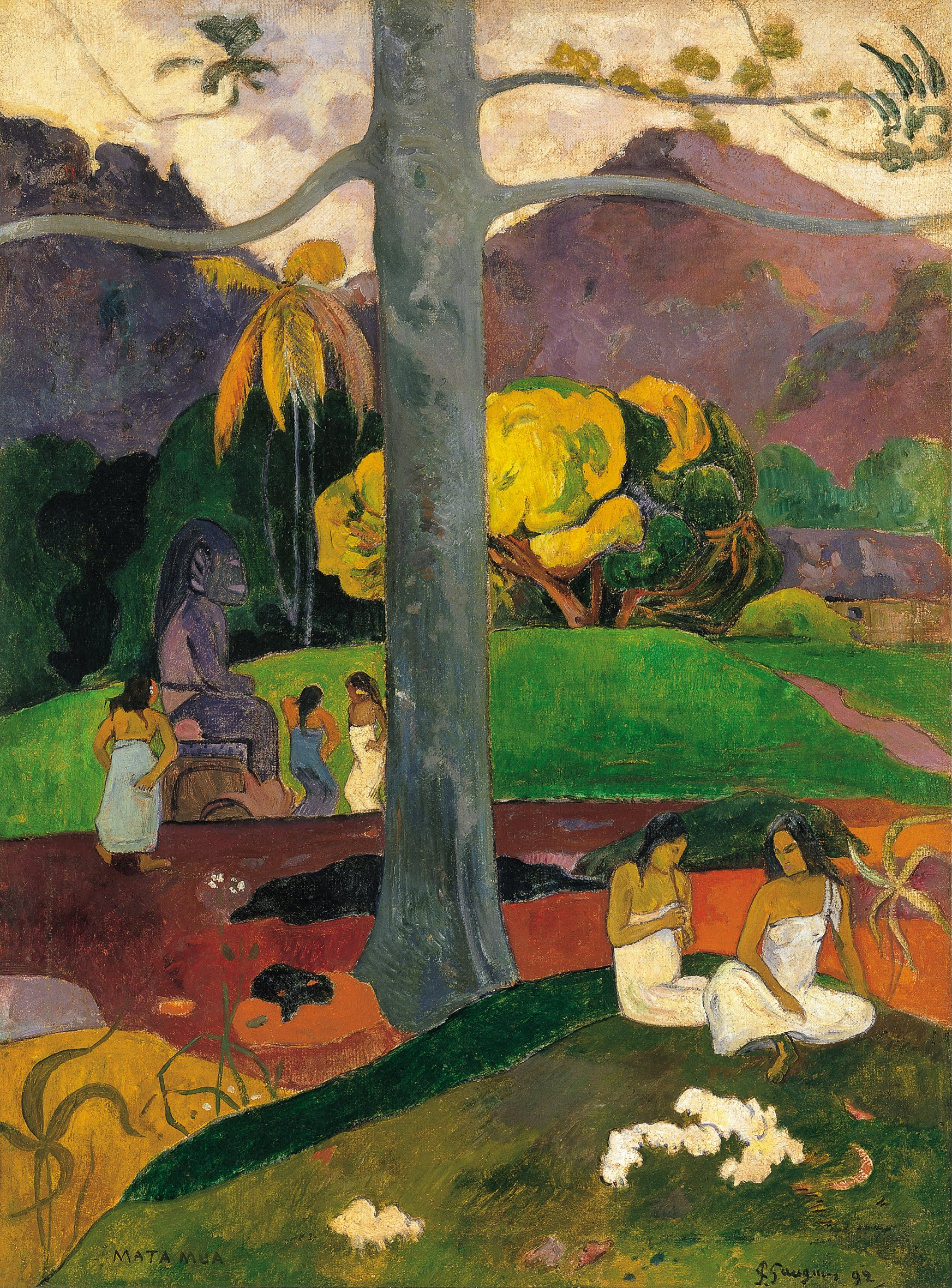
Mata Mua (In Olden Times), 1892
Paul Gauguin (1848 - 1903)
Oil on canvas
91 x 69 cm
Thyssen-Bornemisza Museum, Madrid
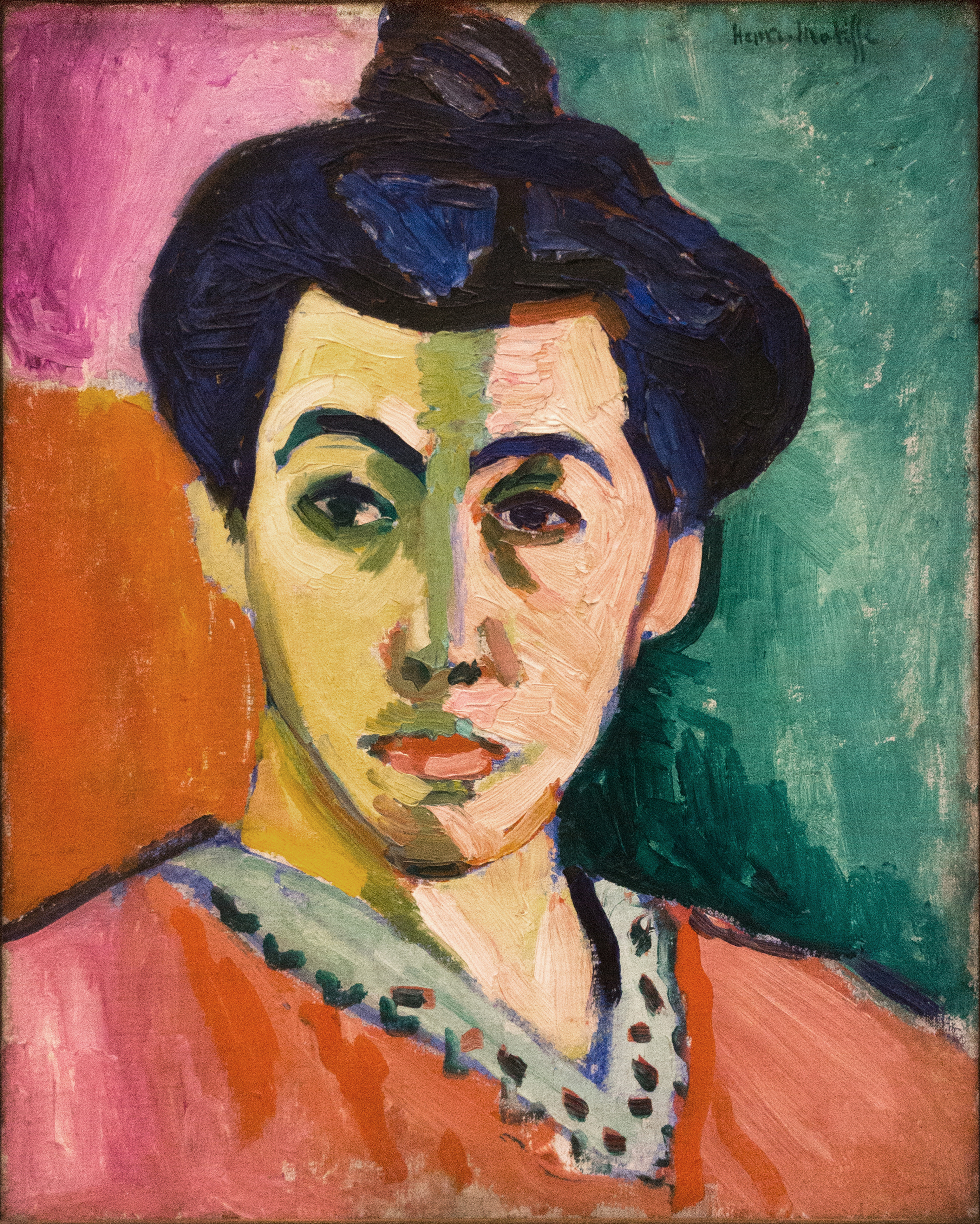
Green Stripe, 1905
Henri Matisse (1869 - 1954)
Oil on canvas
40.5 x 32.5 cm
National Gallery of Denmark, Copenhagen

Blue Water Lilies, c. 1916 - 1919
Claude Monet (1840-1926)
Oil on canvas
200 x 200 cm
Musée d'Orsay, Paris
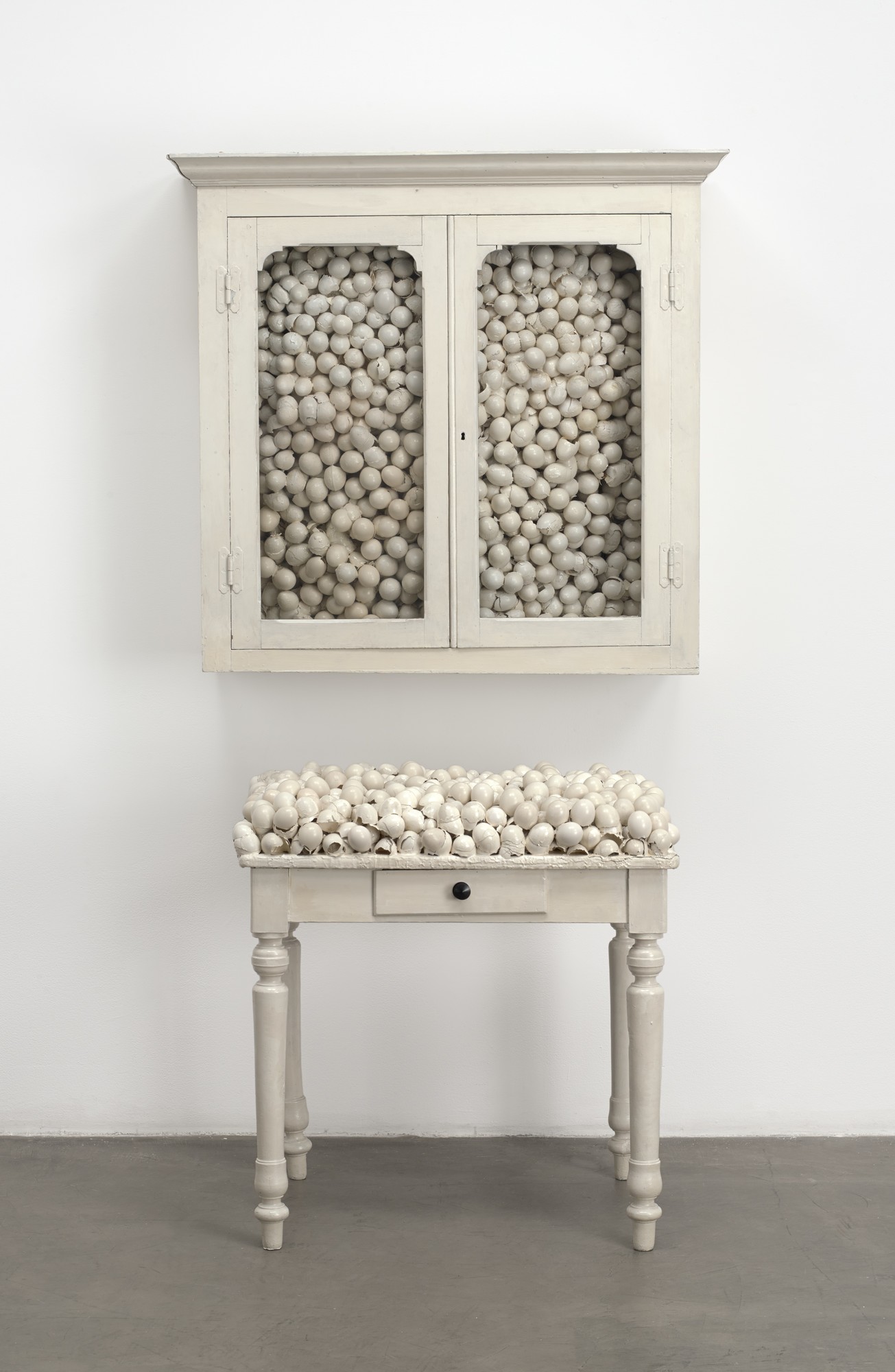
White Cabinet and White Table, 1965
Marcel Broodthaers (1924-1976)
Painted furniture with eggshells
Cabinet 86 x 82 x 62 cm
Table 104 x 100 x 40 cm
Museum of Modern Art, New York
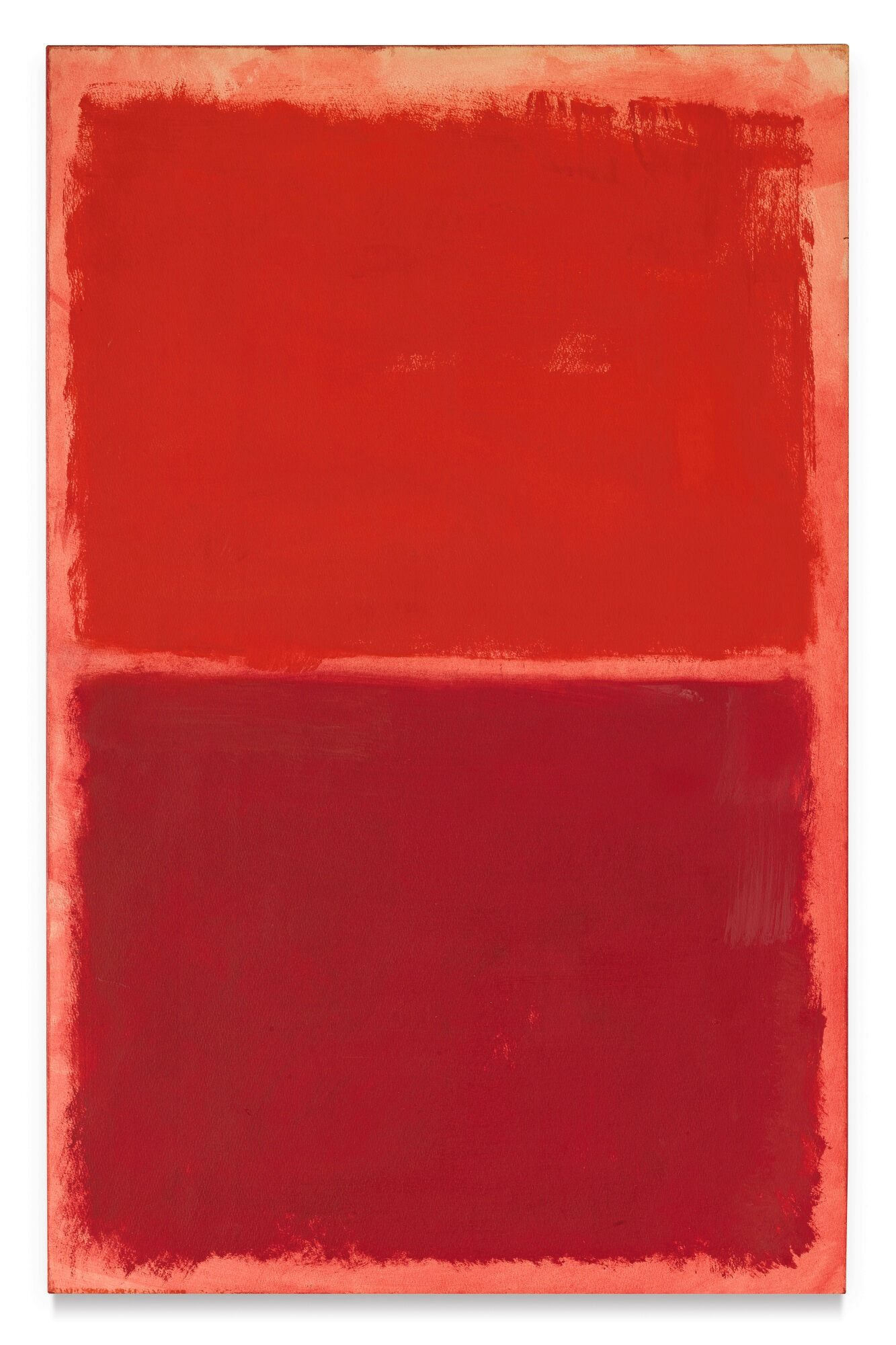
Untitled (Red on Red), 1969
Mark Rothko (1903 - 1970)
Oil on paper mounted on canvas
98.4 x 63.5 cm

A Panorama of Rivers and Mountains, Northern Song dynasty (960-1127)
Wang Xi-meng (c. 1096 - 1119)
Ink and color on silk
51.5 x 191.5 cm
Palace Museum, Beijing, China
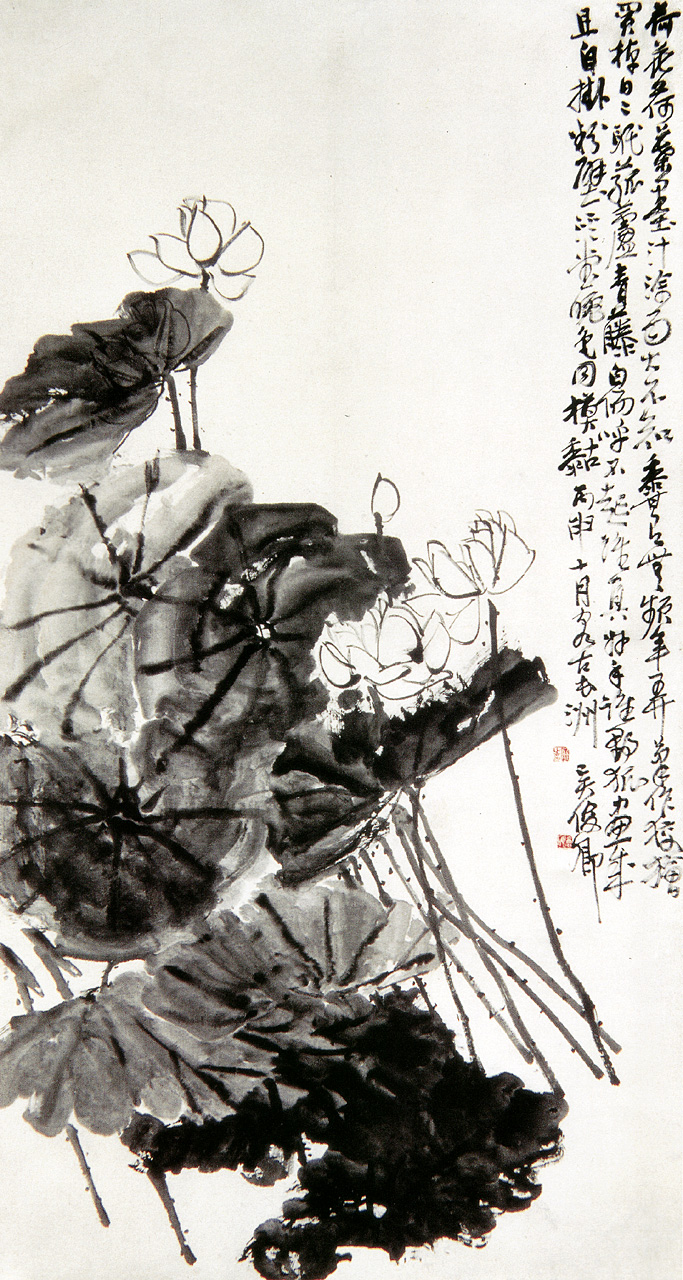
Inked Lotus
Wu Chang-shuo (1844 – 1927)
Ink and color on paper
Point, line, plane
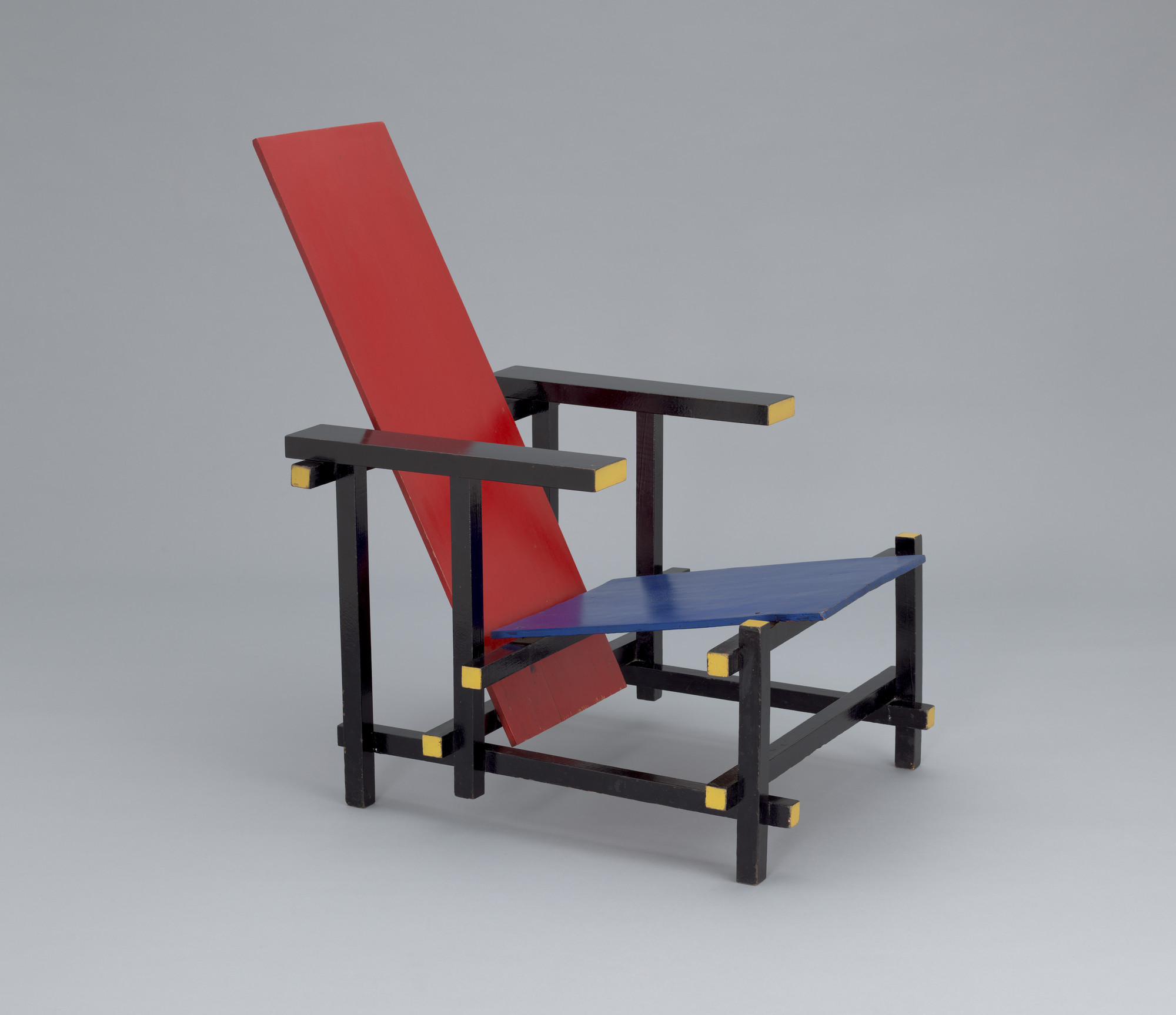
Red Blue Chair, 1918–1923
Gerrit Rietveld (1888-1964)
Painted wood
86.7 x 66 x 83.8 cm, seat h. 33 cm
Museum of Modern Art, New York
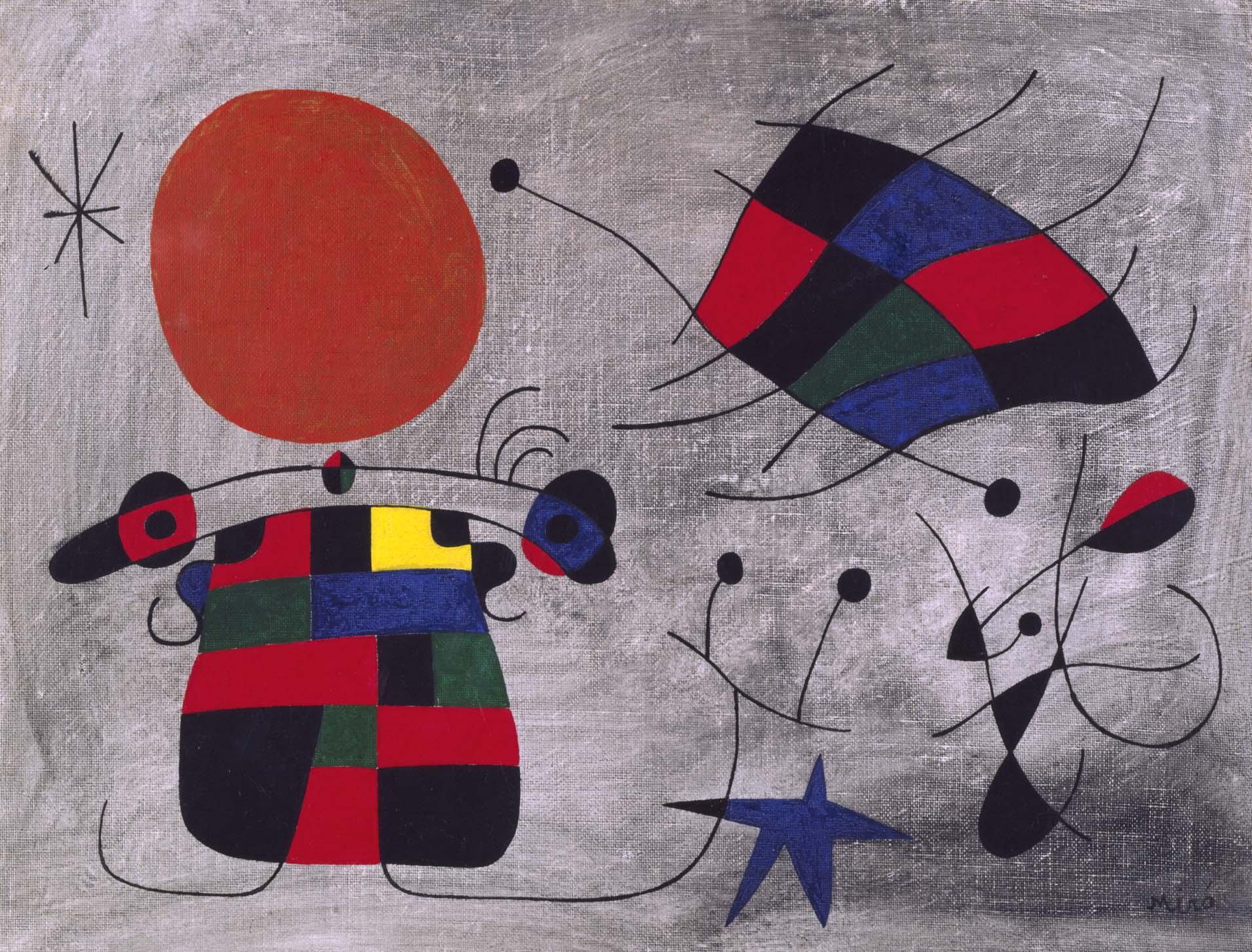
The Smile of the Flamboyant Wings, 1953
Joan Miro (1893 - 1983)
Oil on canvas
35 x 46 cm
Museo Nacional Centro de Arte Reina Sofia, Madrid

Two swallows, 1981
Wu Guan-zhong (1919 - 2010)
Ink and color on paper
69 × 137 cm
Hong Kong Museum of Art, Hong Kong
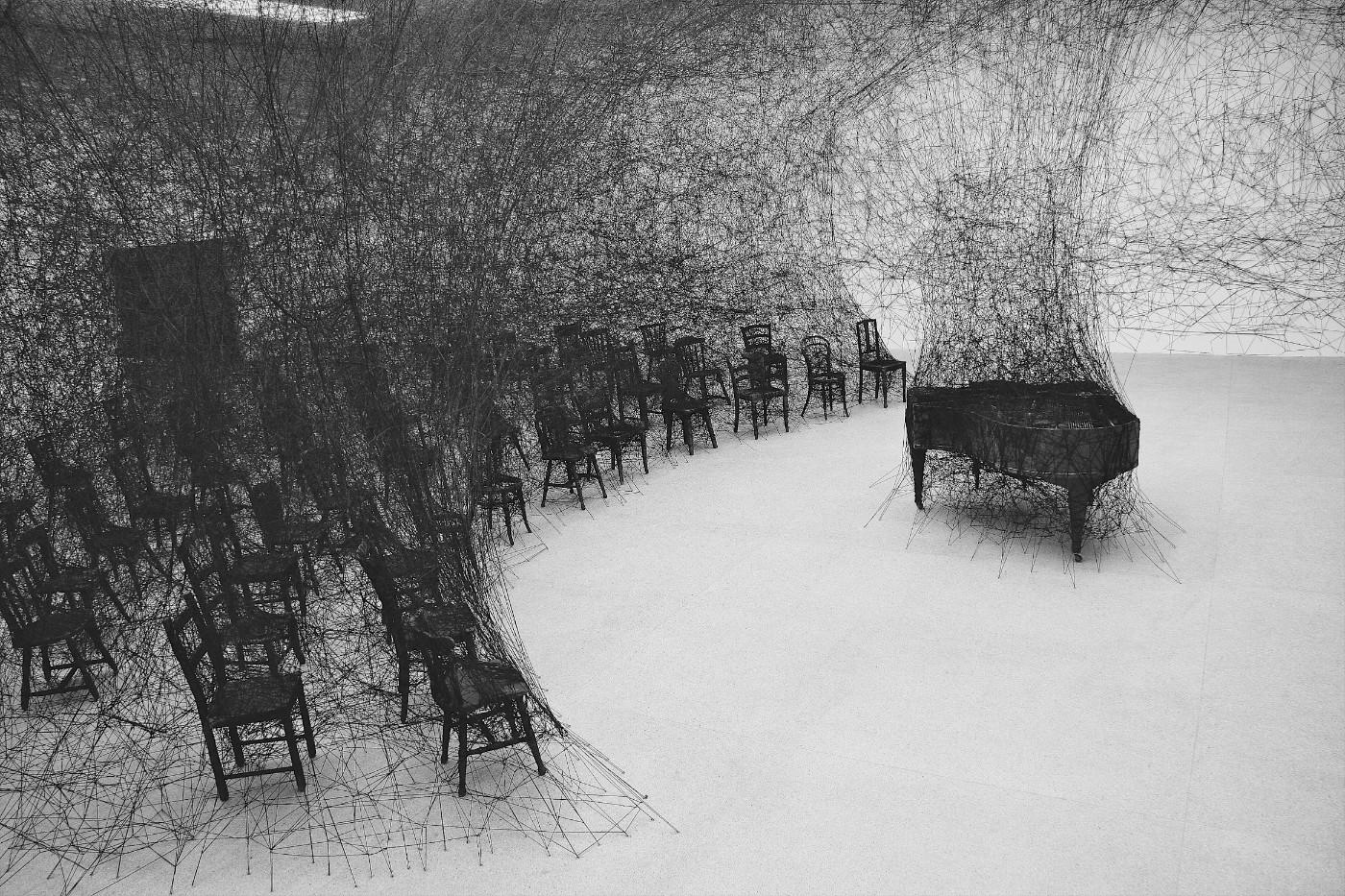
In Silence, 2008
Chihqru Shiota (1972-)
Burnt piano, burnt chair, black wool
Installation
Bienne, Switzerland
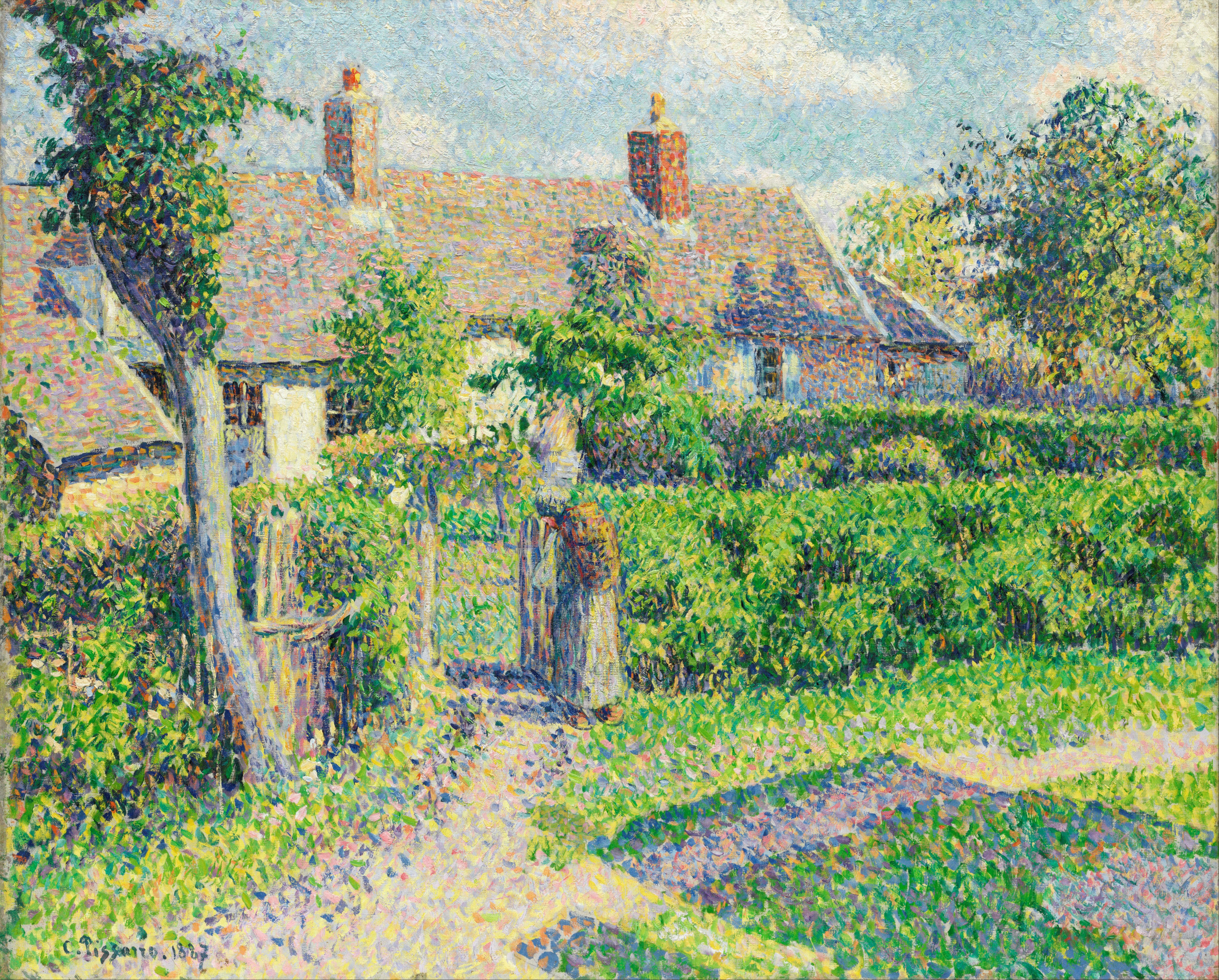
Peasants' houses, Eragny, 1887
Camille Pissarro (1830–1903)
Oil on canvas
83 x 96.6 cm
Art Gallery of New South Wales
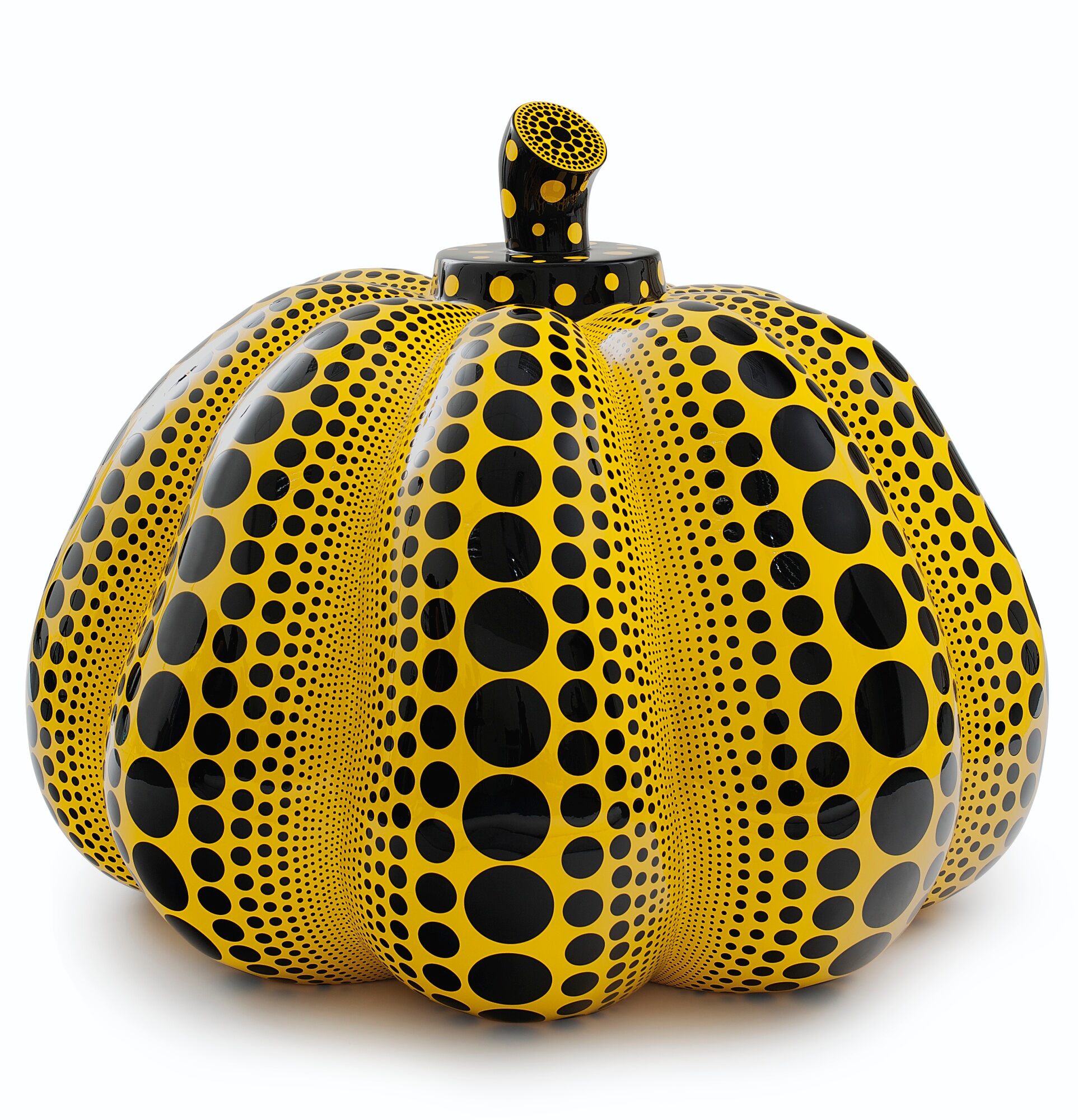
Pumpkin, 2010
Yayoi Kusama (1929-)
Fiberglass reinforced plastic and urethane paint
92.5 (H) x 112.8 x 117.5 cm
Private collection
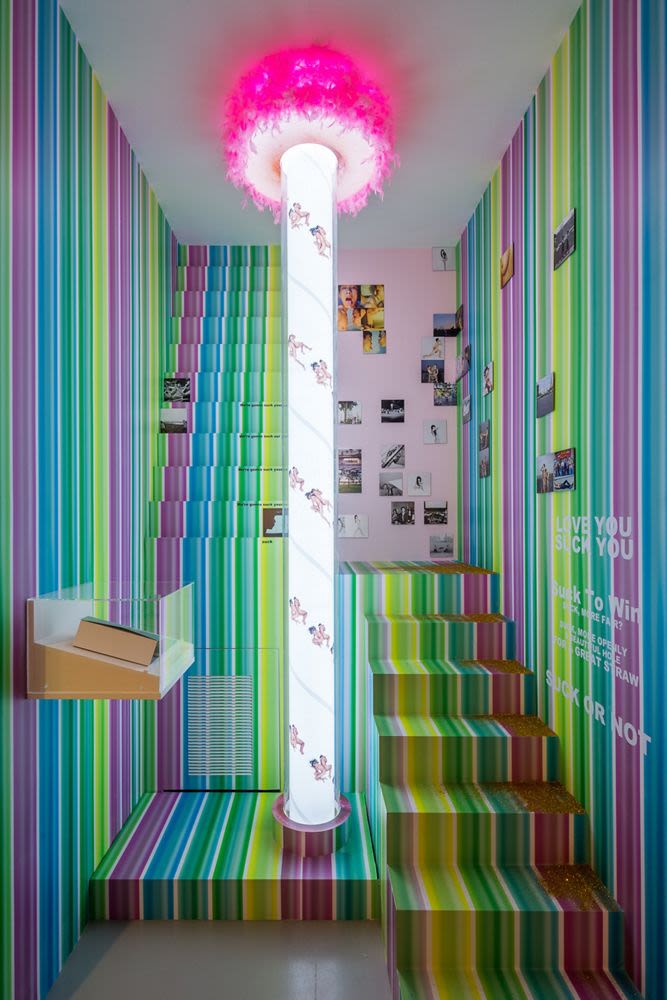
Strawman, 2002
Jiang Zhi (1971-)
Installation, inkjet print, sound, chromogenic digital print wallpaper, art books, metallic glitter, feathers, and revolving illuminated pillar
Dimensions variable
M+ Sigg Collection, Hong Kong
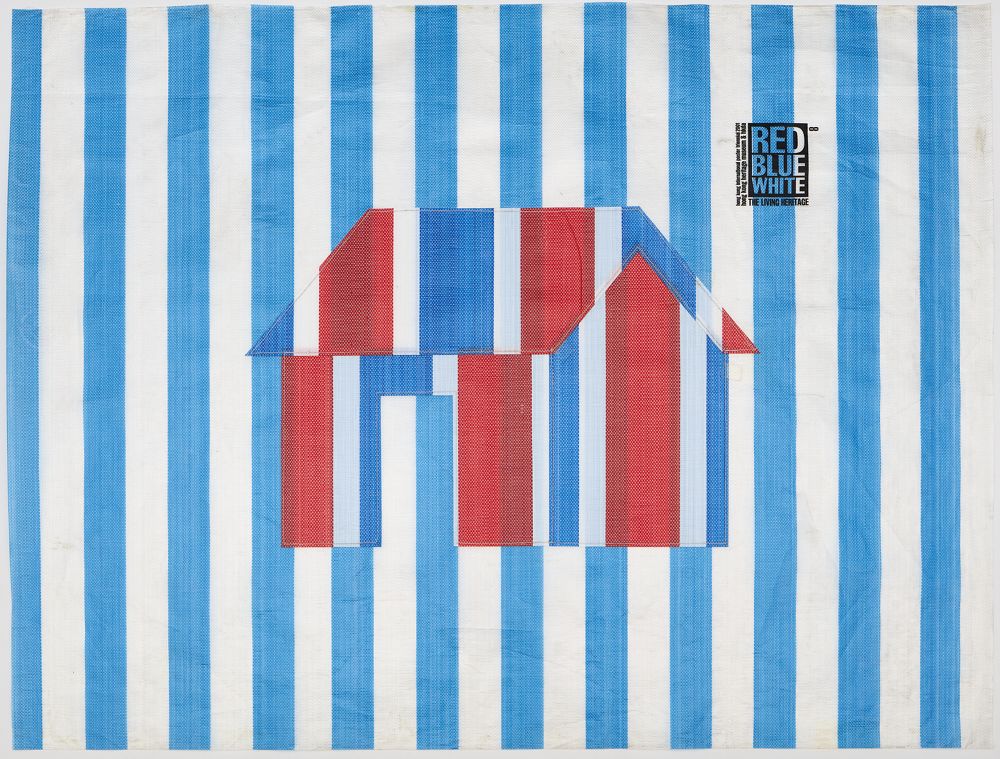
[redwhiteblue]∞, 2001
Stanley Wong (1960-)
Poster, red-white-blue nylon canvas
Dimensions variable
M+ Sigg Collection, Hong Kong
Texture
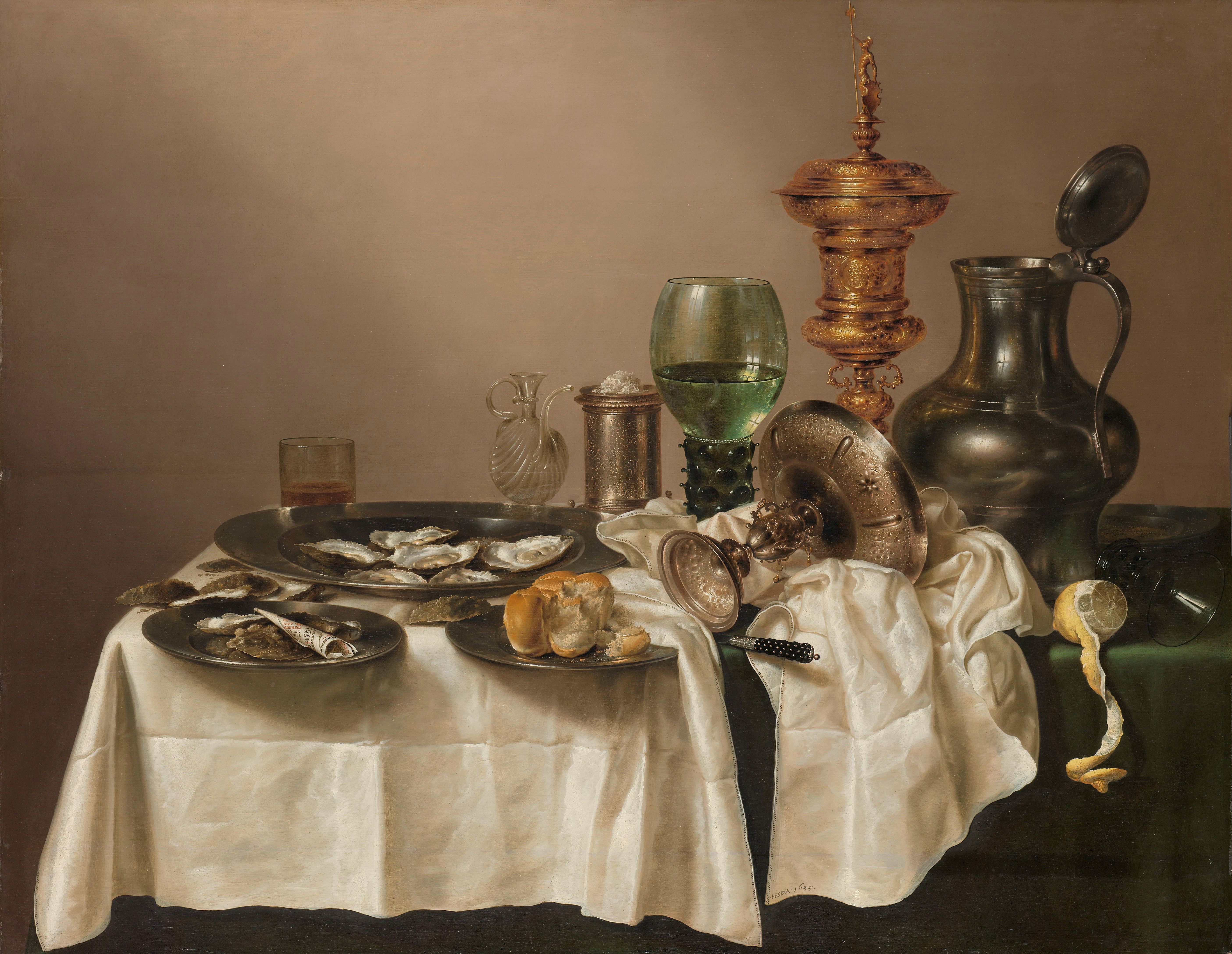
Still Life with a Gilt Cup, 1635
Willem Claesz. Heda (1594 - 1680)
Oil on panel
H 88cm x W 113cm
Rijksmuseum, Amsterdam, Netherlands
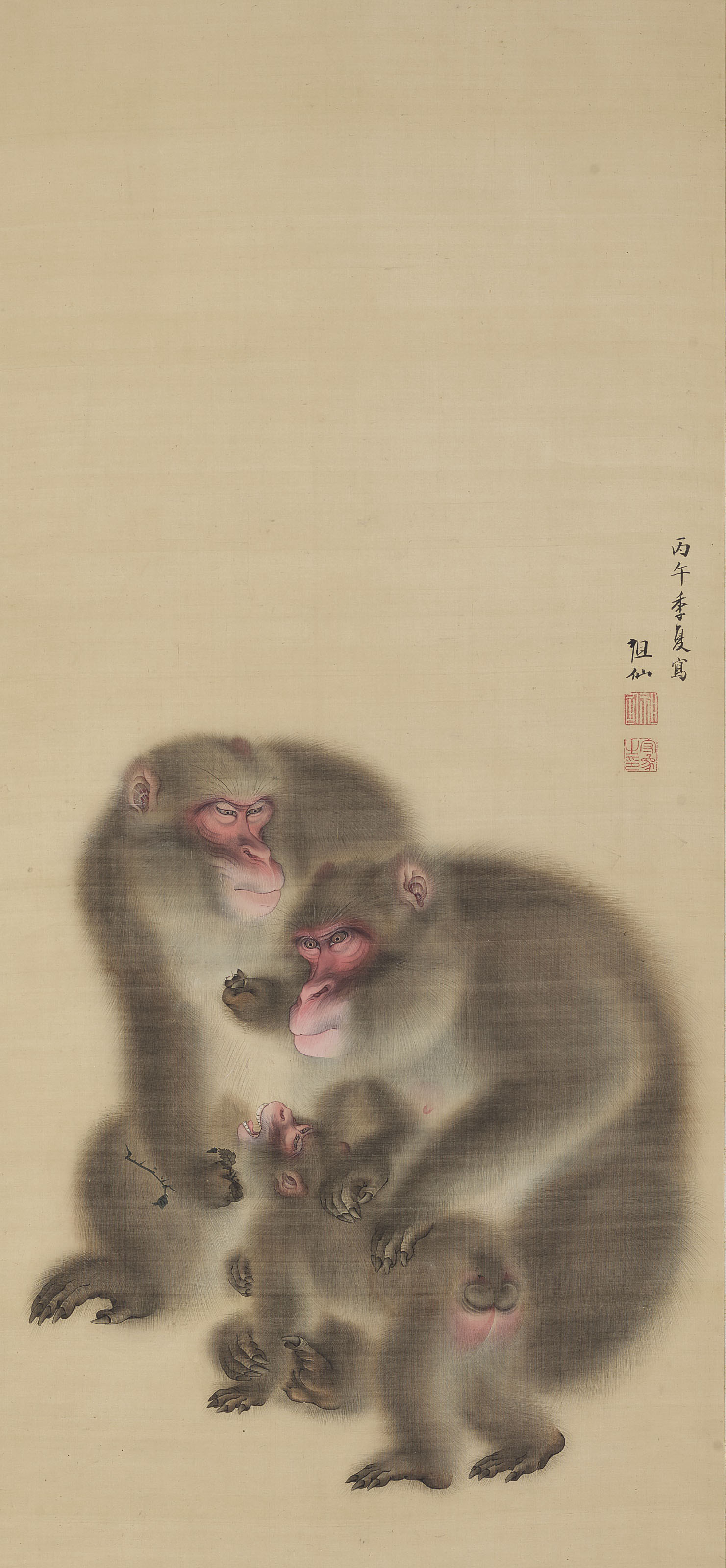
Monkeys, 1786
Mori Sosen (1747-1821)
Ink and color on silk
114 x 53 cm
The Irving Collection
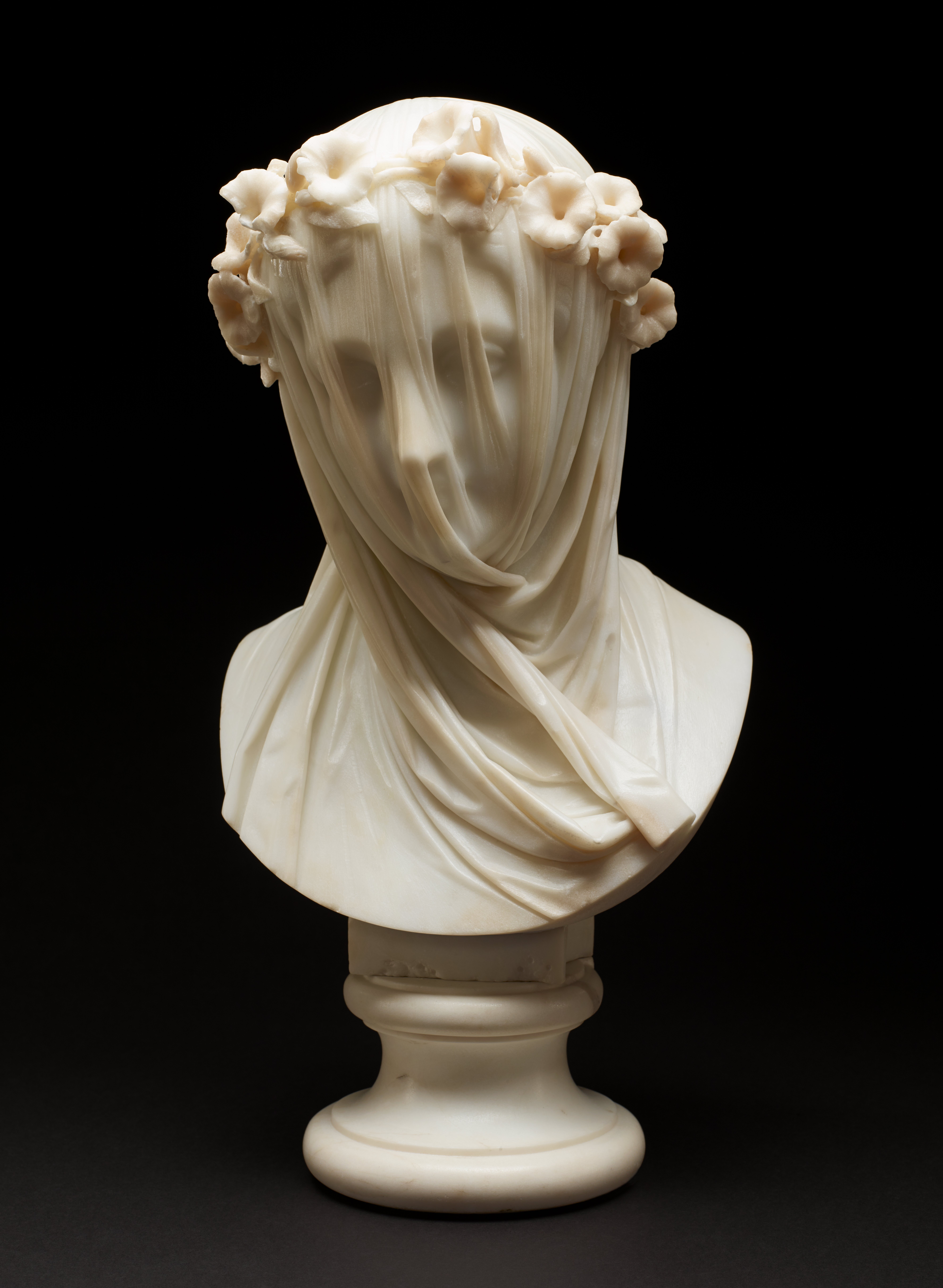
Veiled Lady, c. 1860
Raffaelo Monti (1818–1881)
Marble
D 54.61 cm
Minneapolis Institute of Art, Minneapolis, Minnesota
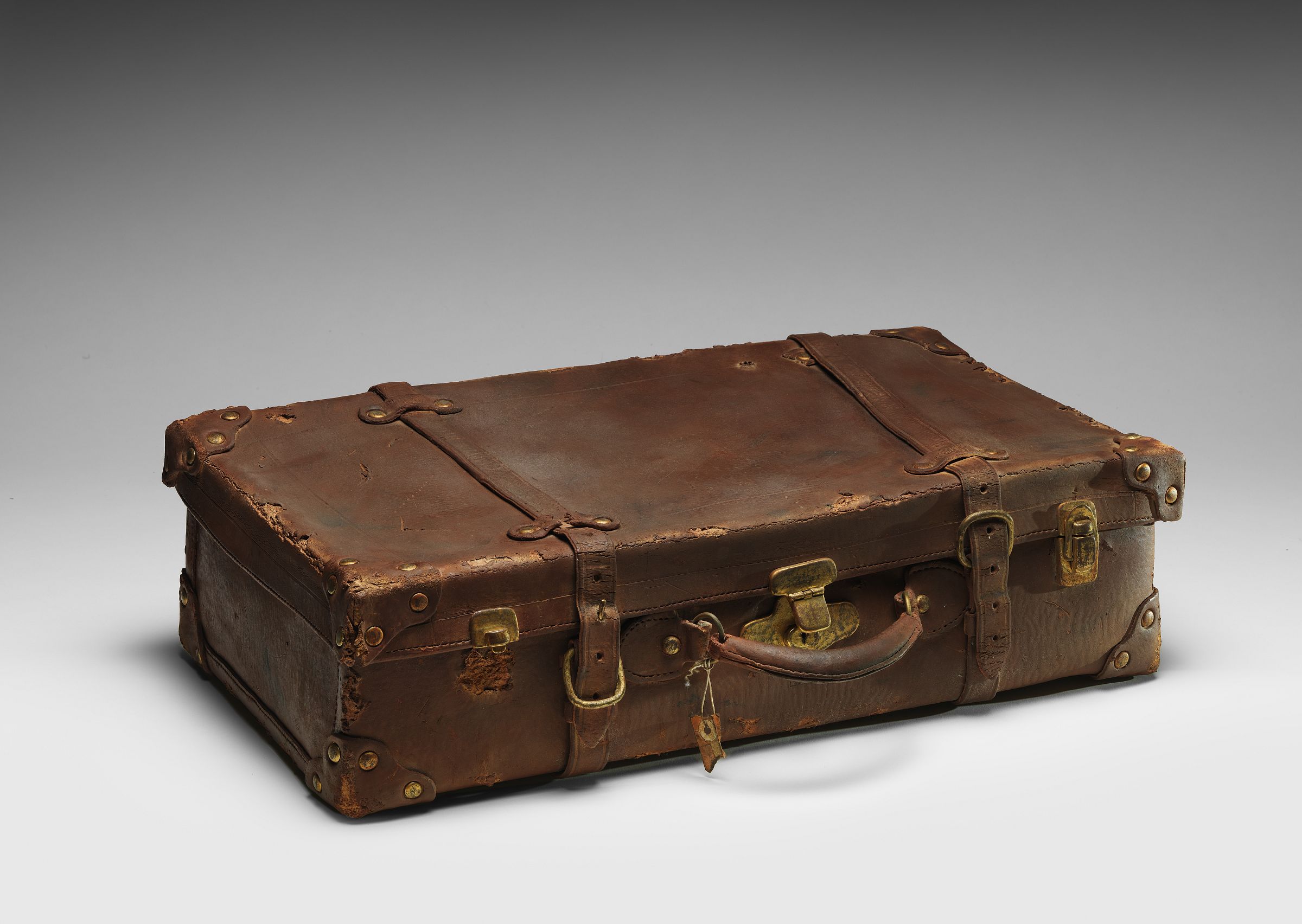
Waldo Suitcase, 1975
Marilyn Levine (1935- 2005)
Stoneware and fragment of paper label
17.5 x 65.4 x 45 cm
National Gallery of Australia, Canberra
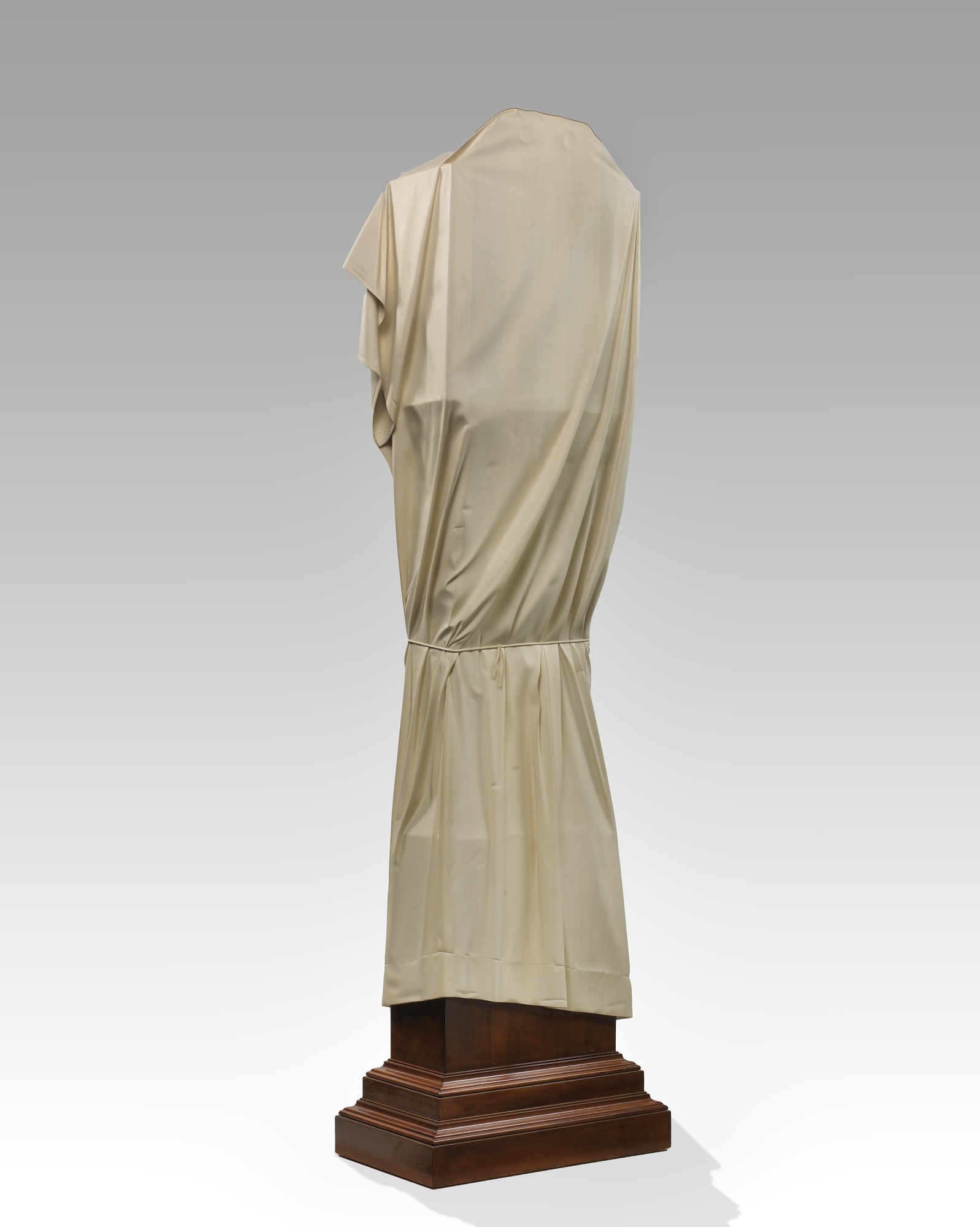
Ghost Clock, 1985
Wendell Castle (1932 - 2018)
Bleached Honduras mahogany
219.0 x 62.2 x 38.1 cm
Smithsonian American Art Museum, Washington

Rabbit, 1986
Jeff Koons (1955-)
Stainless steel
104.14 x 48.26 x 30.48 cm
The Broad, Los Angeles
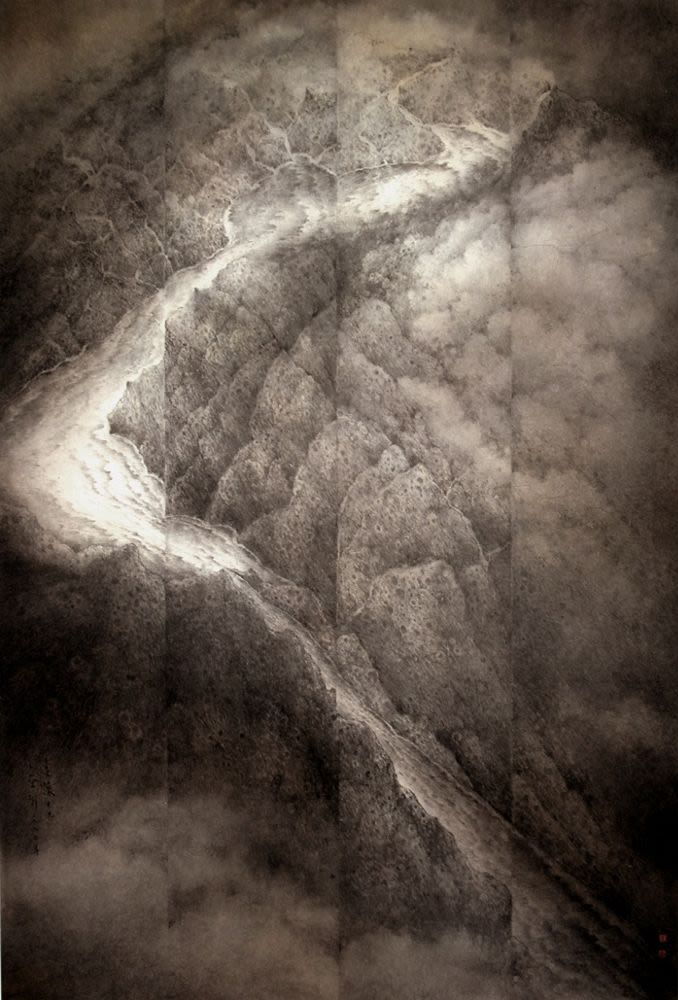
Distant Thoughts No.19, 1990
Wucius Wong (1936-)
Ink and colour on paper
156.6 × 109.8 cm
M+ Sigg Collection, Hong Kong
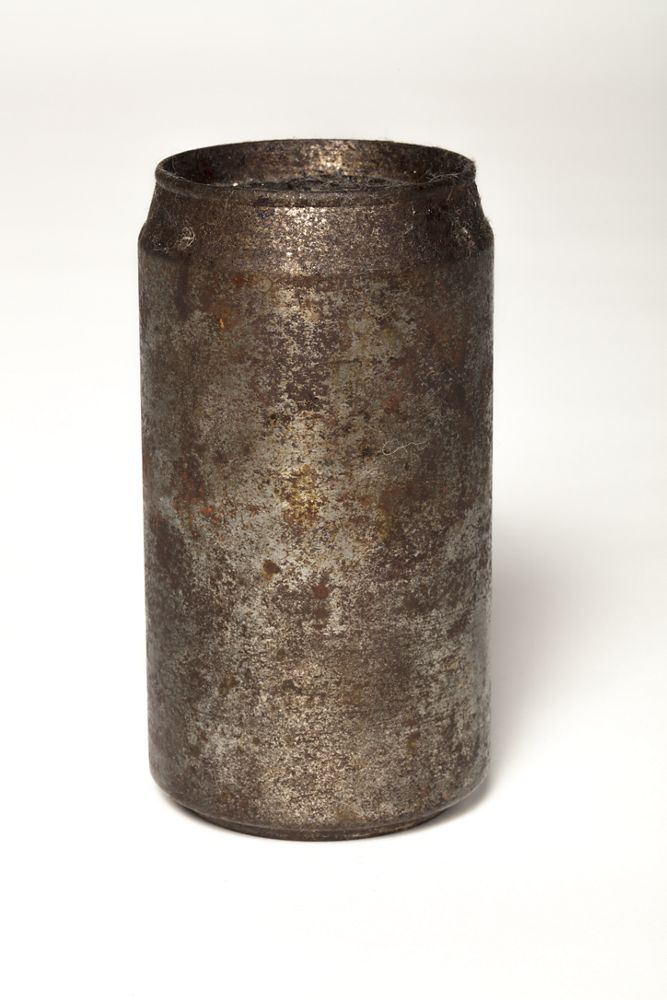
A.D. 2000 - To Oxidize 2000 Years (Cola can), 2000
Zheng Guogu (1970-)
Steel
12.5 × 6.5 × 6.5 cm
M+ Sigg Collection, Hong Kong
Space, proportion

Parthenon, 447-438 B.C.
Marble
13.72 x 69.5 x 30.9 m
Athens, Greece
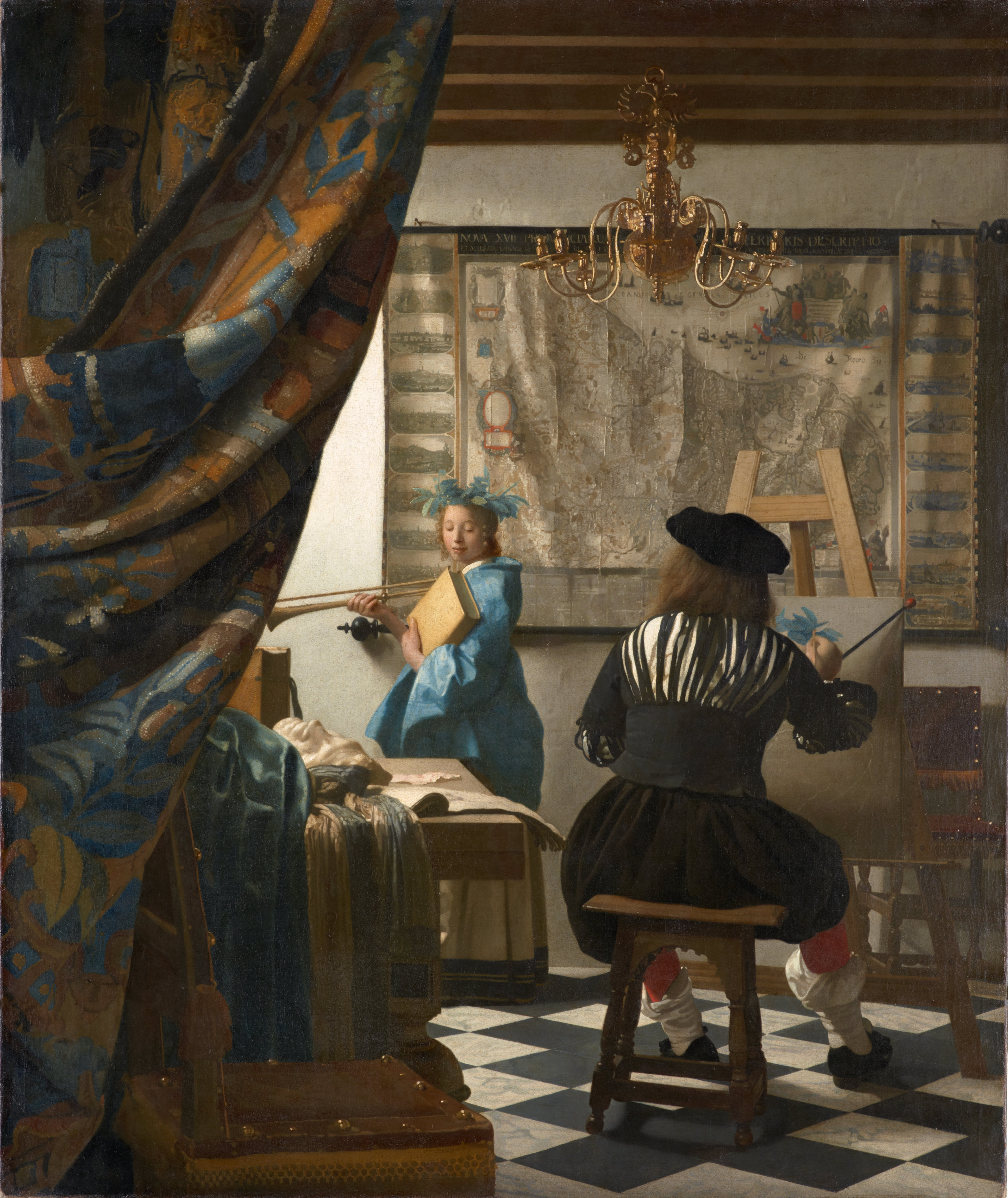
The Allegory of Painting, c. 1666 – 1668
Johannes Vermeer (1632 - 1675)
Oil on canvas
120 × 100 cm
Kunsthistorisches Museum, Vienna
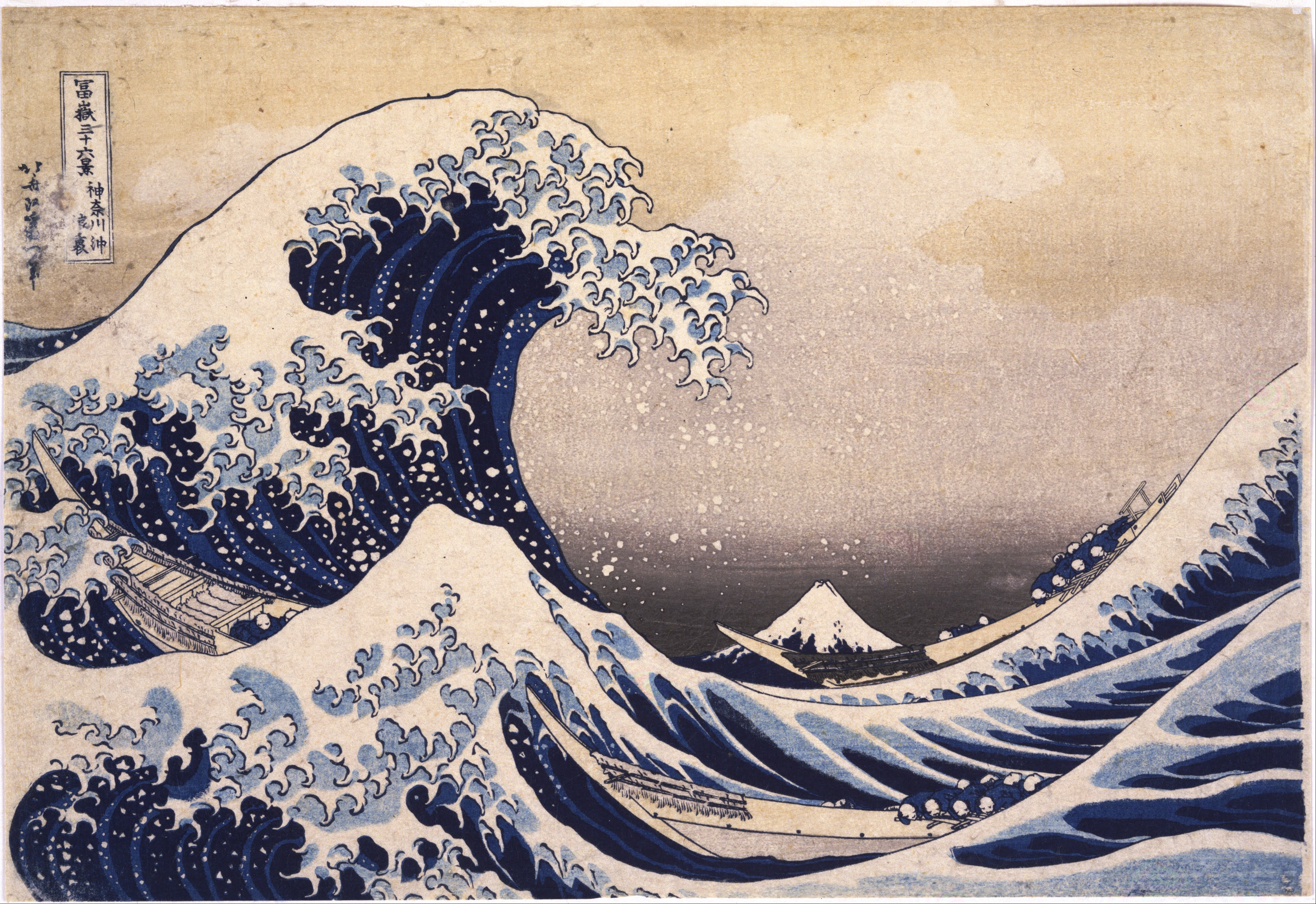
Under the Wave off Kanagawa (Kanagawa oki nami ura), c. 1830 - 1832
Katsushika Hokusai (1760 - 1849)
Woodblock print; ink and color on paper
25.7 x 37.9 cm
Metropolitan Museum of Art, New York
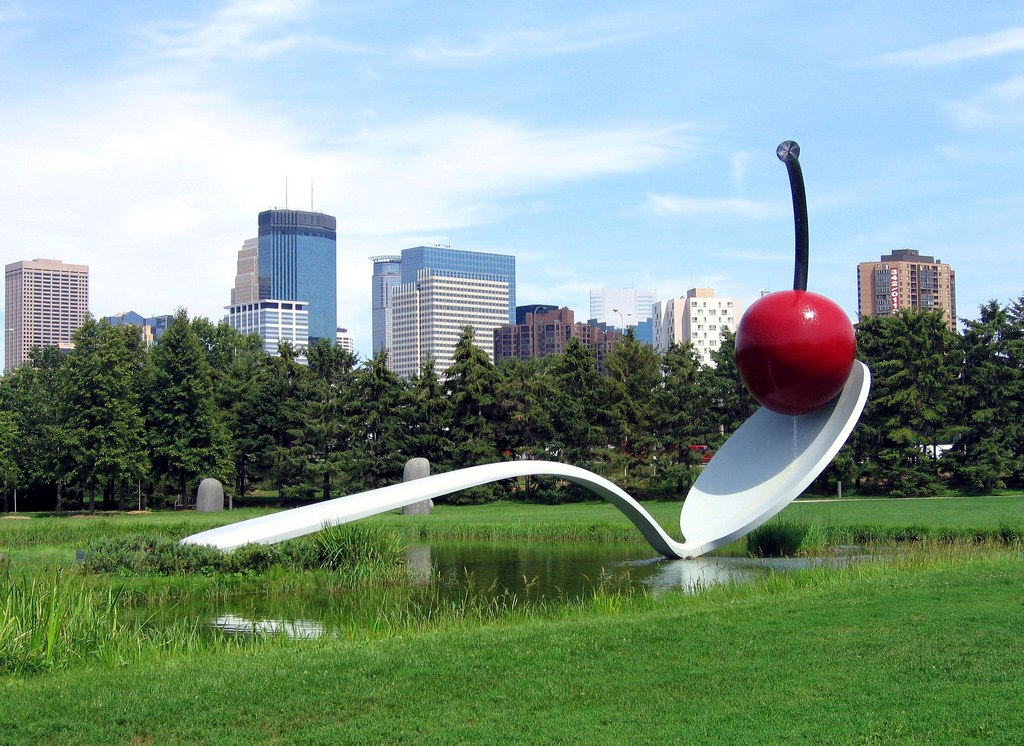
Spoonbridge and Cherry, 1988
Claes Oldenburg (1929 - ) & Coosje van Bruggen (1942 - 2009)
Stainless steel and aluminium, paint
H 8.9 x L 15.6 x W 4.1 m
Minneapolis Sculpture Garden Minneapolis, Minnesota
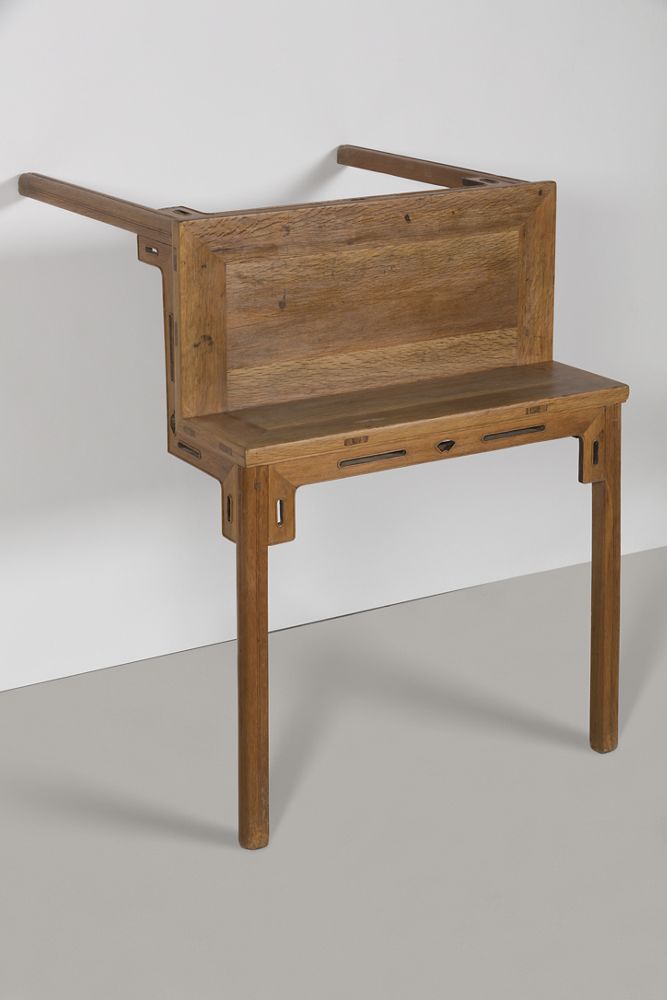
Table with Two Legs on the Wall, 1997
Ai Weiwei (1957-)
Wood
121.3 × 88 × 107.5 cm
M+ Sigg Collection, Hong Kong
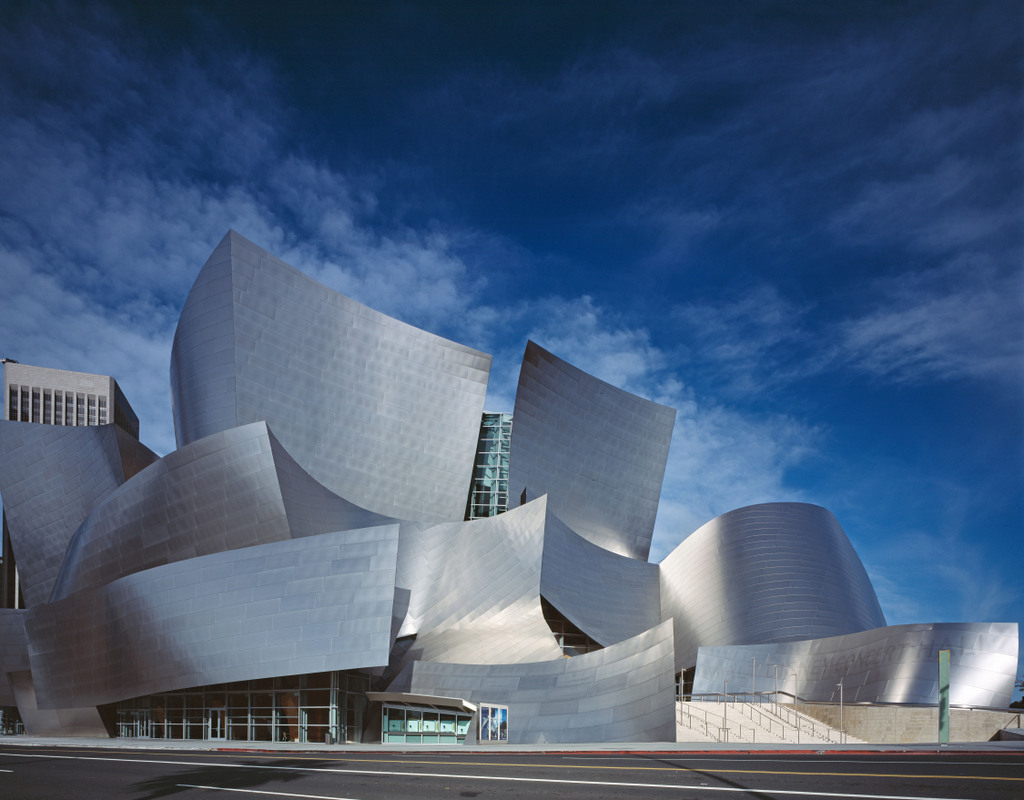
Walt Disney Concert Hall, 1999-2003
Frank Gehry (1929 - )
Los Angeles, California
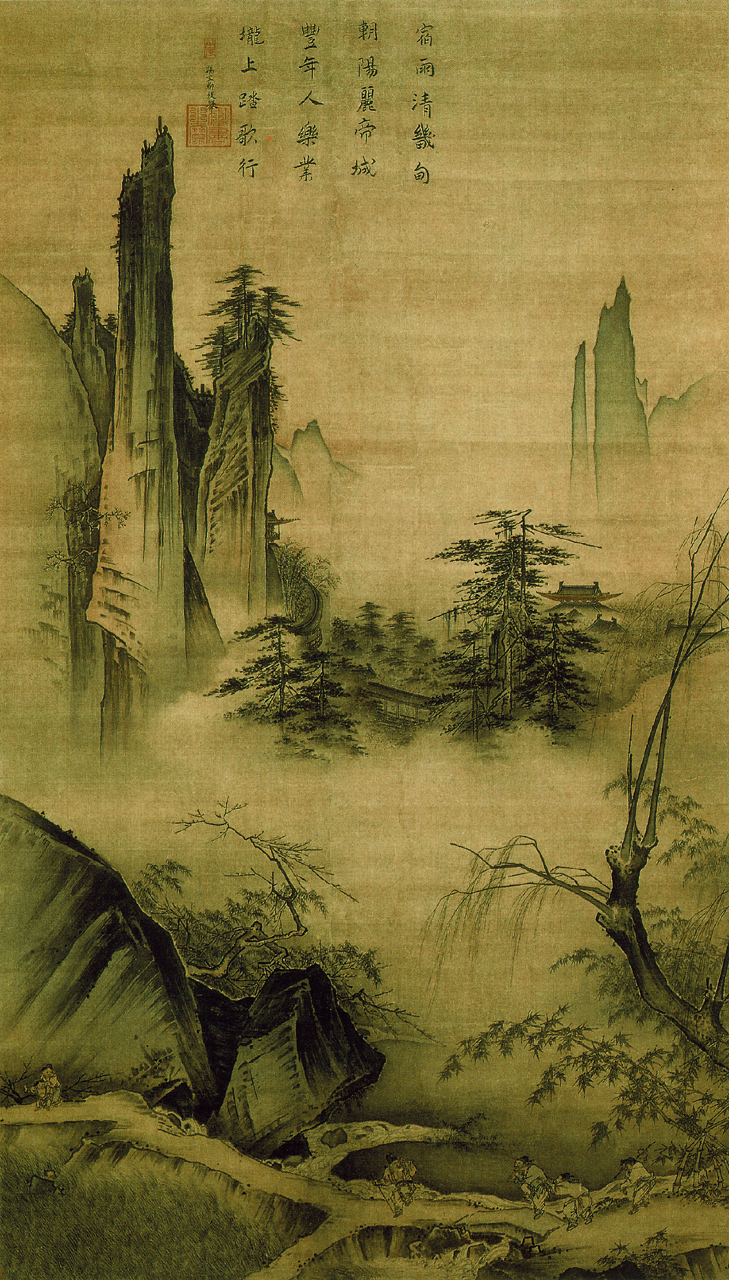
Singing and Dancing, Southern Song dynasty
Ma Yuan (active late 12th to early 13th c.)
ink and colors on silk
192.5 x 111 cm
Palace Museum, Beijing
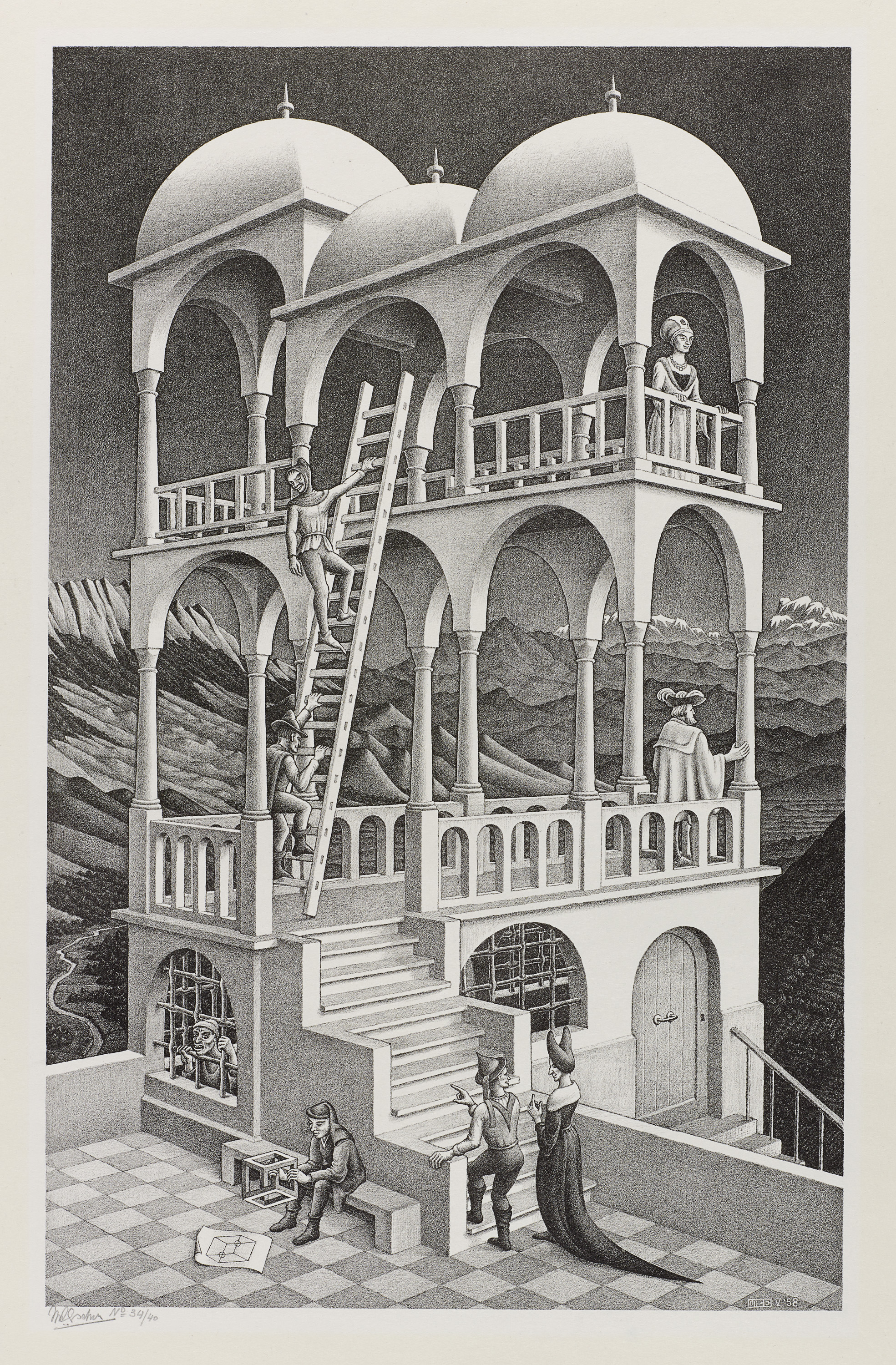
Belvedere, 1958
M. C. Escher (1898-1972)
Lithograph
46.2 × 29.5 cm
Gemeentemuseum Den Haag, The Hague
Art as Social Production
Concepts
- Artistic creation is influenced by the social circumstances in which an artist produces his or her own works, including indirect factors like cultural structures, traditions and conventions, moral beliefs, value judgment and modes of production, as well as direct factors like patronage systems, political censorship, technological levels, consumption and circulation of artworks, and so on.
- Artists employ the unique and affective art forms to present their own insights and criticism of the society.
- Art, as part of our culture, documents the local ways of life, moral beliefs, customs, interpersonal relationship as well as concepts and aesthetic preferences of different times, and hence is a reflection of the contemporary society and culture.
- Art is figurative and functions as a means of acculturation; it serves as political, educational and propaganda instruments.
Philosophical Background
- Marx: Materialism – art is an instrument of social change, a reflection of social classes, and a complex amalgam of politics, society, ideology and beauty.
- Adorno: Institutional theory of art – art is the product of an invisible institution constituted by artistic circles of museum and gallery curators, dealers, critics and collectors.
- de Beauvoir: Feminism – expose the oppression of women in the male-dominant society, and criticize the implicit gender inequalities in art.
Artistic Techniques
- Adopt an objective, calm and realistic approach to generating faithful representations of social situations.
- Criticize the contemporaries and current affairs in a sarcastic, critical or exaggerated manner.
Lots of history books use illustrations of artworks on the cover, underlining the relationship between history and art.


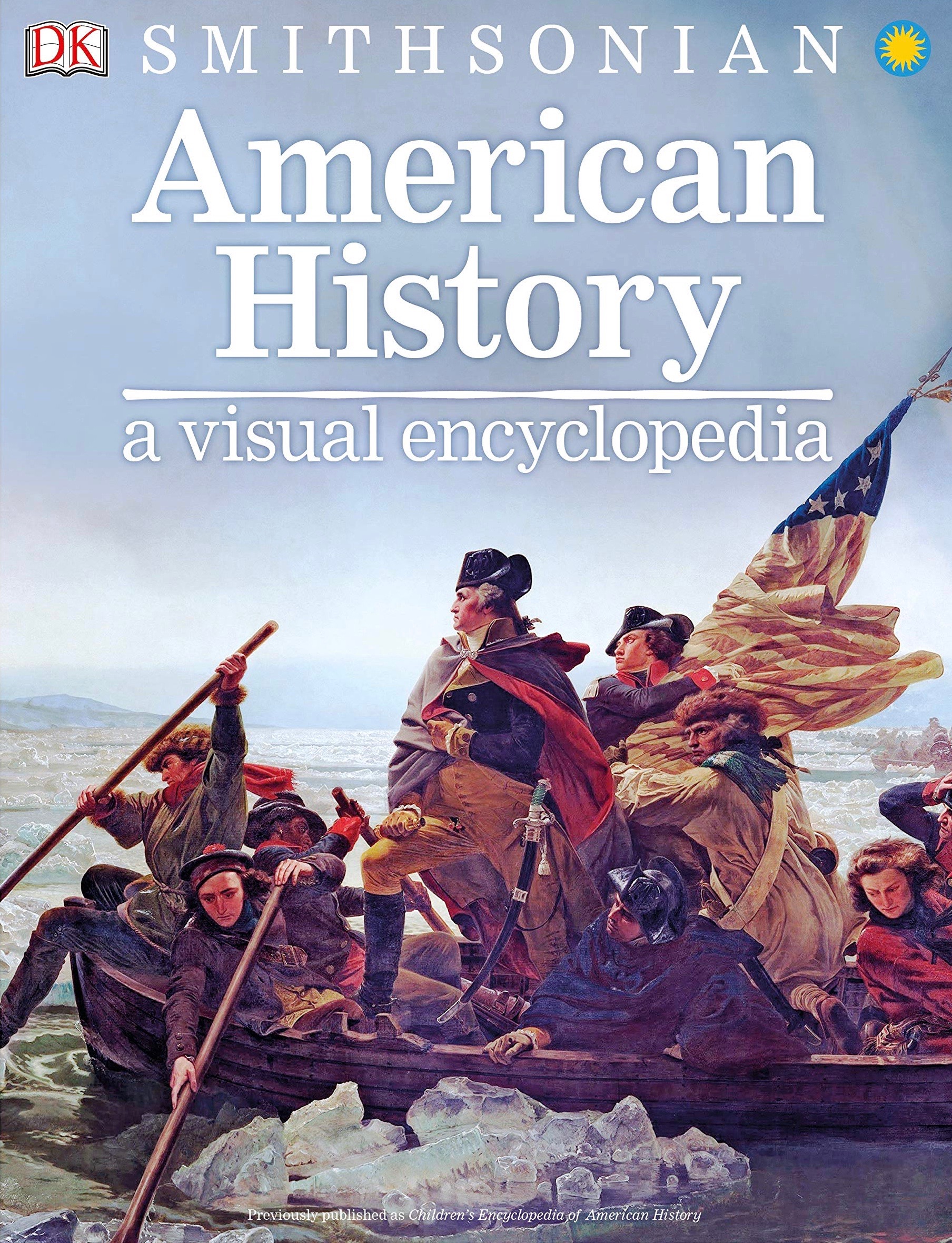

Art is usually employed as social, political and cultural representation.

Female head, c. 1300 - 1400 A.D.
Copper
Life size
Smithsonian National Museum of African Art, Washington, D.C.

Death of Marat, 1793
Jacques-Louis David (1748 - 1794)
Oil on canvas
165 × 128 cm
Royal Museums of Fine Arts of Belgium

Put down your whip, 1939
Xu Bei-hong (1895 - 1953)
Oil on canvas
144 × 90 cm

《粉末都市—-消失中的香港》內頁,2008
Stella So
The shapes and colors of tea bowls are closely connected with their functions and customs of the society at the time.

Tea bowl (from above), wheel-thrown stoneware with natural leaf resist decoration and brown glaze, Song dynasty

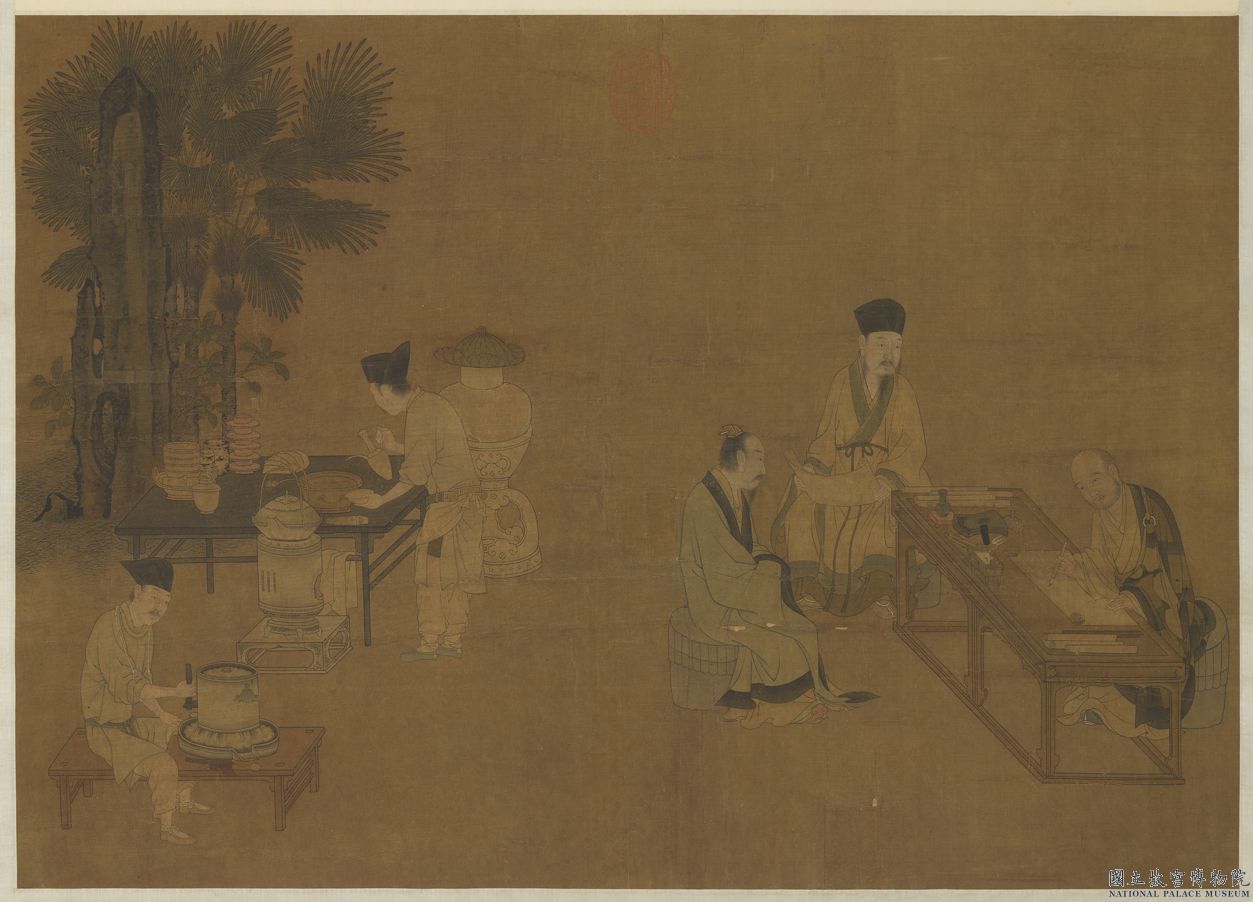
Grinding Tea, Song Dynasty
Liu Song-nian (c. 1131 – 1218)
Ink and color on silk
44.2 x 61.9cm
National Palace Museum, Taipei
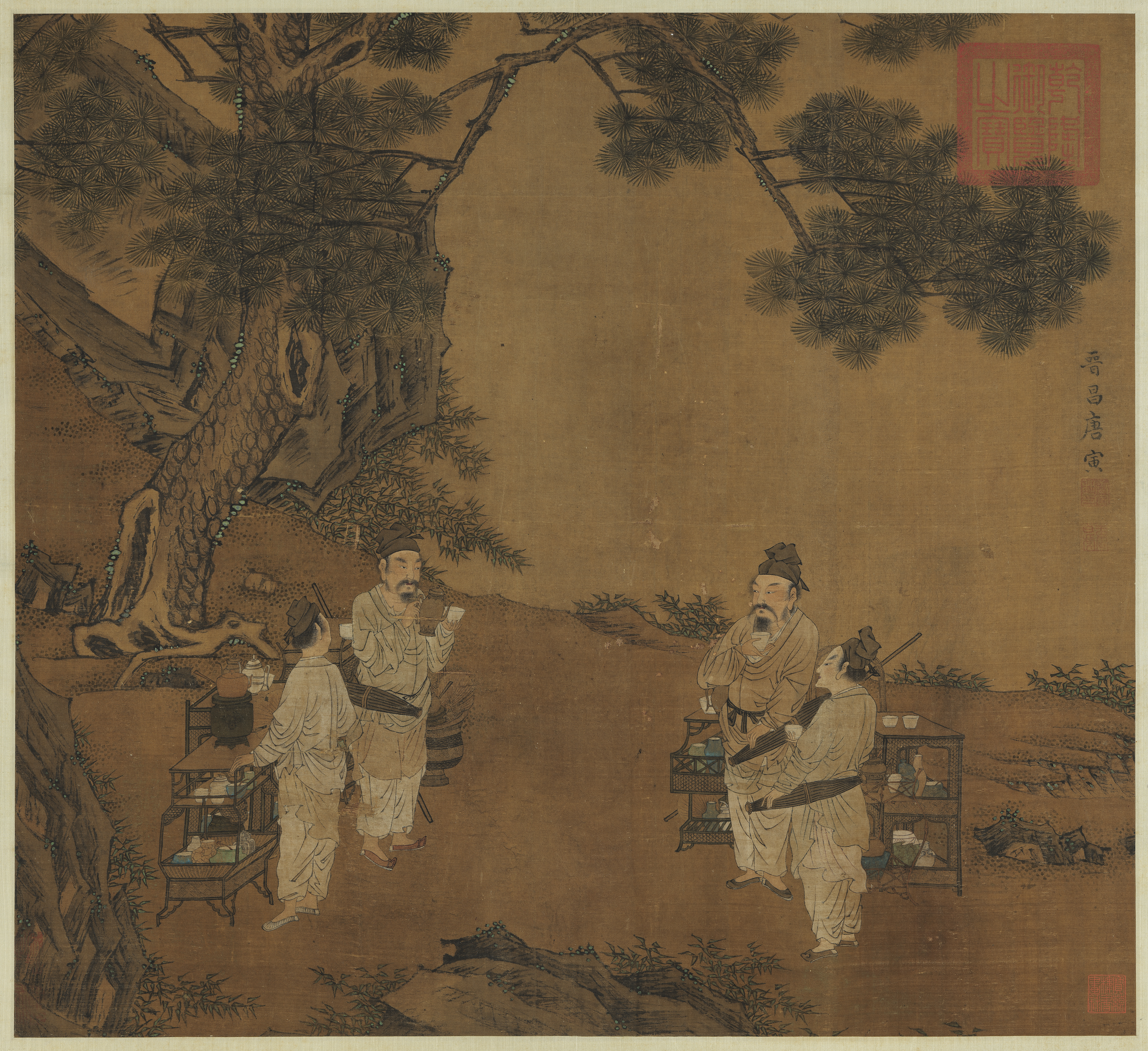
Tea Fighting, Ming Dynasty
Tong Yin (c. 1131 – 1218)
Ink and color on silk
56.4 x 61.8 cm
National Palace Museum, Taipei
Do the socially constructed images of Jesus look like the real image of Jesus?
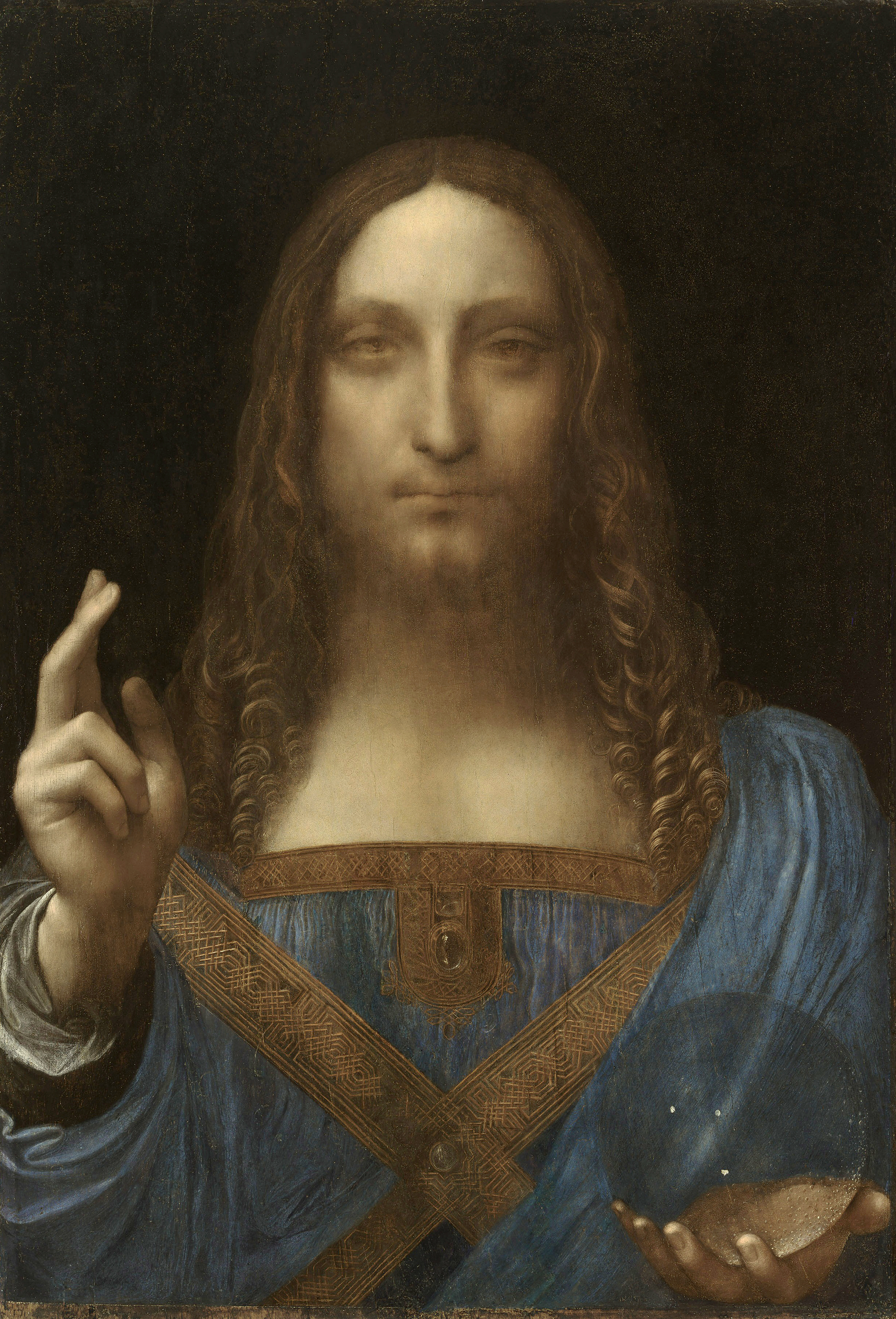
Salvator Mundi, c. 1500
Leonardo da Vinci (1452-1519)
Oil on walnut panel
45.4 × 65.6 cm
Louvre Abu Dhabi
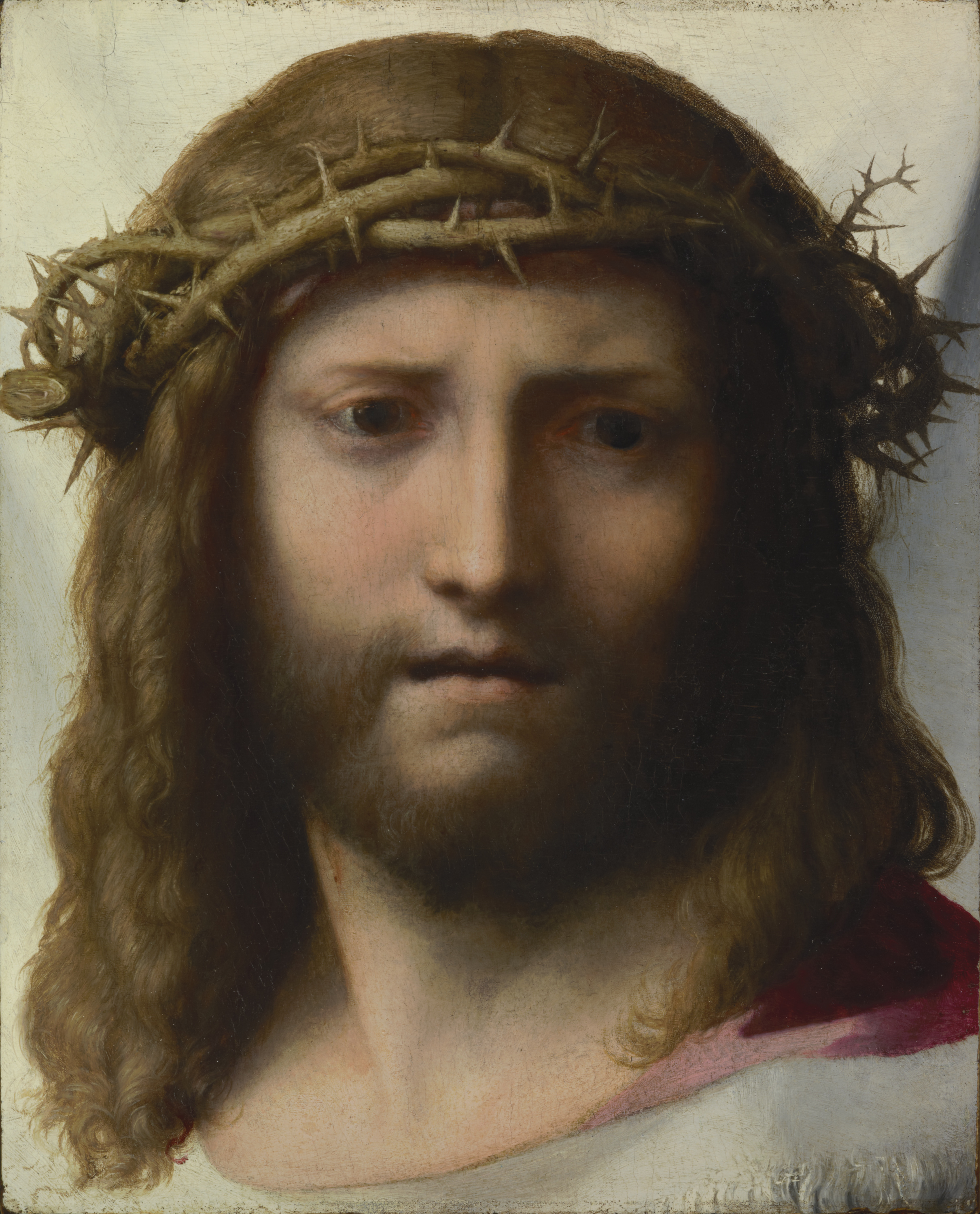
Head of Christ, c. 1525–1530
Correggio (c. 1489 - 1534)
Oil on panel
28.6 × 23.5 cm
The J. Paul Getty Museum, Los Angeles
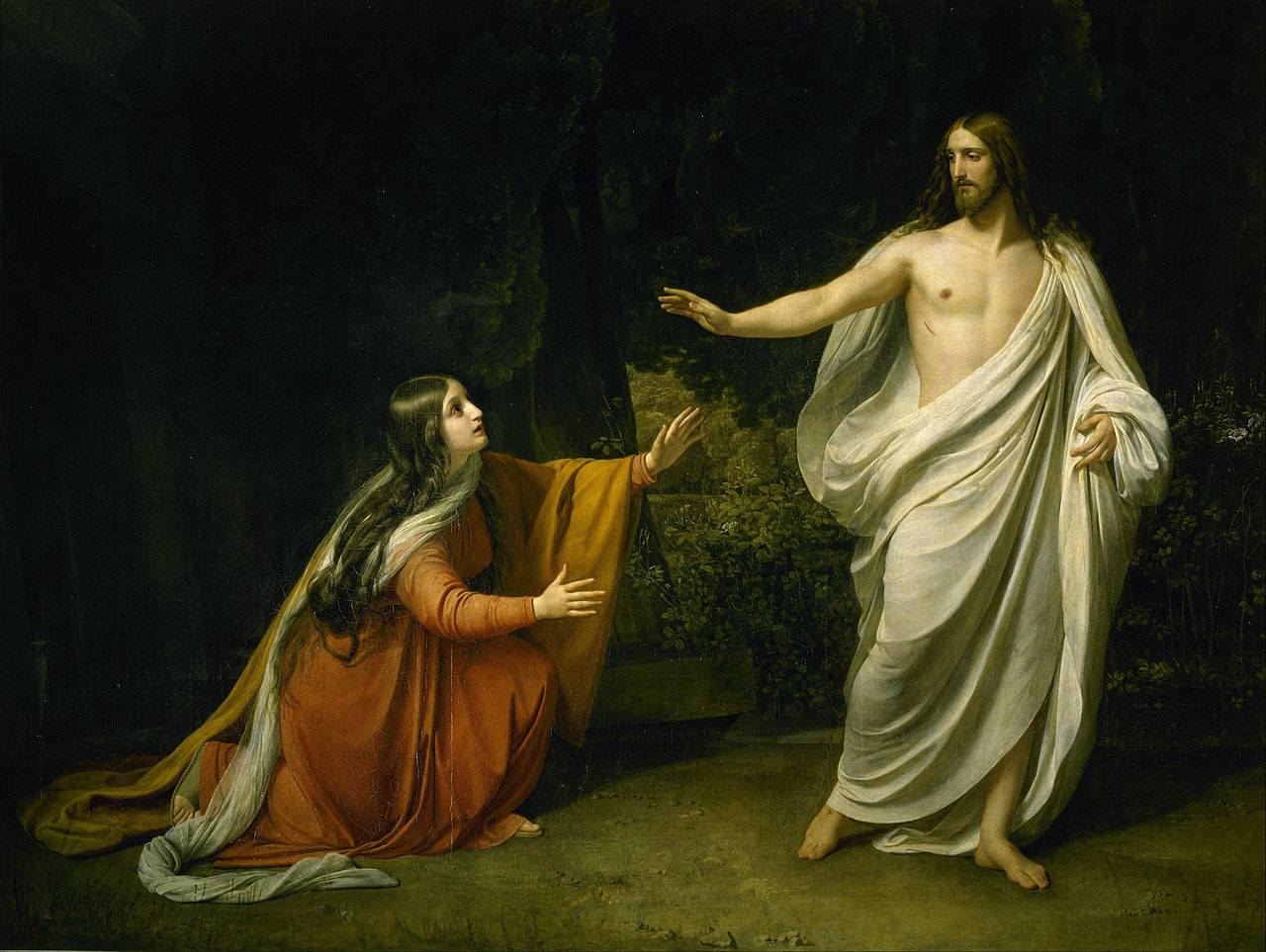
Christ's Appearance to Mary Magdalene after the Resurrection, 1835
Alexander Andreyevich Ivanov (1806 - 1858)
Oil on canvas
242 x 321 cm
State Russian Museum, Saint Petersburg
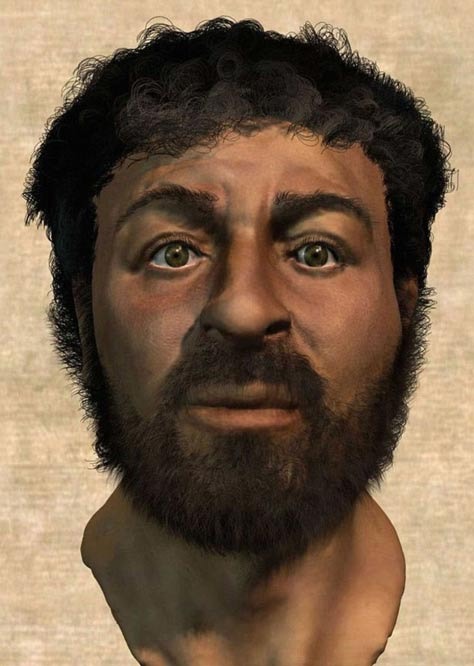
Reconstruction of Jesus’s face by British anatomical artist Richard Neave, 2015
Art as Text
Concepts
- Text is a signifying system, a system of signs.
- Art is constituted by signs; or, art itself is signs through which it communicates meanings.
- As far as artworks are concerned, their meanings are generated by difference among signs in a signifying system, instead of elicited by the pictorial representation.
- Attention is drawn more to interpretation of art than to exploration of the essence of art or explanation of art.
Philosophical Background
- de Saussure: Semiology – linguistically, text is made up of signifier, signified and signification. The relation between signifier and signified is arbitrary; their relation is determined by the hidden rules and conventions.
- Barthes: The artist’s intentions do not matter anymore, while the audience has their own interpretations. An artwork is not a closed system; instead, it is a space for the audience to voluntarily manipulate and produce “endlessly proliferating meanings which have no stable point of origin, nor of closure.”
- Levi-Strauss: Structuralism – the world is made up of interrelations of things. The things themselves cannot reflect the essentials, the formal relationships among their elements as constituted and perceived by people. This theory aims to reveal how art, in the context of cultural traditions, is apprehended and constituting the “deep structures”, instead of pursuing the meanings conveyed by the appearances of artworks themselves.
Artistic Techniques
- Emphasize the signification of art.
- A modern artwork is considered as a statement or an object of discourse, instead of a mere representation, an expression or a formal structure.
When we interpret the following artworks, what will be our considerations? Aesthetics? Or, design? If we get to know the contextual background of these artworks, in what ways will we understand the artworks differently?

Madonna and Child, c. 1230
Berlinghiero (1236 - 1242)
Tempera on wood, gold ground
80.3 x 53.7 cm
Metropolitan Museum of Art, New York

Fountain, 1917, replica 1964
Marcel Duchamp (1887 - 1968)
Glazed ceramic with black paint
38.1 × 48.9 × 62.5 cm
San Francisco Museum of Modern Art, San Fancisco, California

Self, 1991
Marc Quinn (1964-)
Blood, stainless steel, perspex, refrigenration equipment
208 x 63 x 63 cm
Saatchi Gallery, London

The Chapman Family Collection, 2002
Jake Chapman (1966 - ) and Dinos Chapman (1962 - )
Wood, paint and mixed media
The Saatchi Gallery
Why add a puppy to the artwork? What does the dog signify in the artwork?

The Arnolfini Portrait, 1434
Jan van Eyck (1390-1441)
Oil on oak
82.2 x 60 cm
National Gallery, London

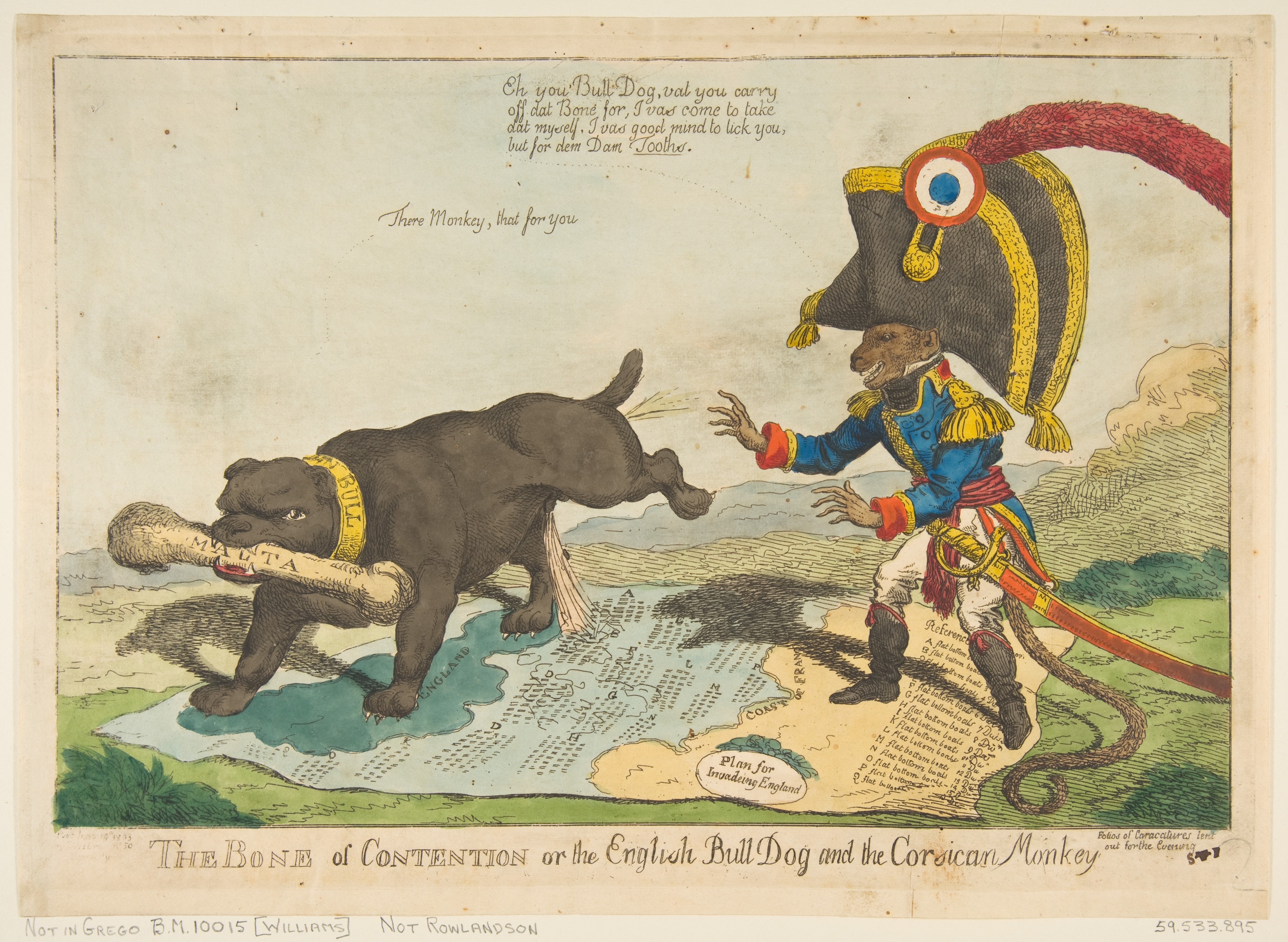
The Bone of Contention or the English Bull Dog and the Corsican Monkey, 1803
Charles Williams (1797 – 1830)
Hand-colored etching
25.5 x 35.4 cm
The Metropolitan Museum of Art, New York

American Soldier Cradling Dog While under Siege at Khe Sanh, 1968
Larry Burrows (1926 - 1971)
Photographic Print
24 x 18 in
The LIFE Picture Collection/Getty Images
What aesthetic theory will you employ to interpret this artwork?

One and Three Chairs, 1965
Joseph Kosuth (1945 - )
Chair (82 x 37.8 x 53 cm), photographic panel (91.5 x 61.1 cm), text panel (61 x 76.2 cm)
Museum of Modern Art, New York
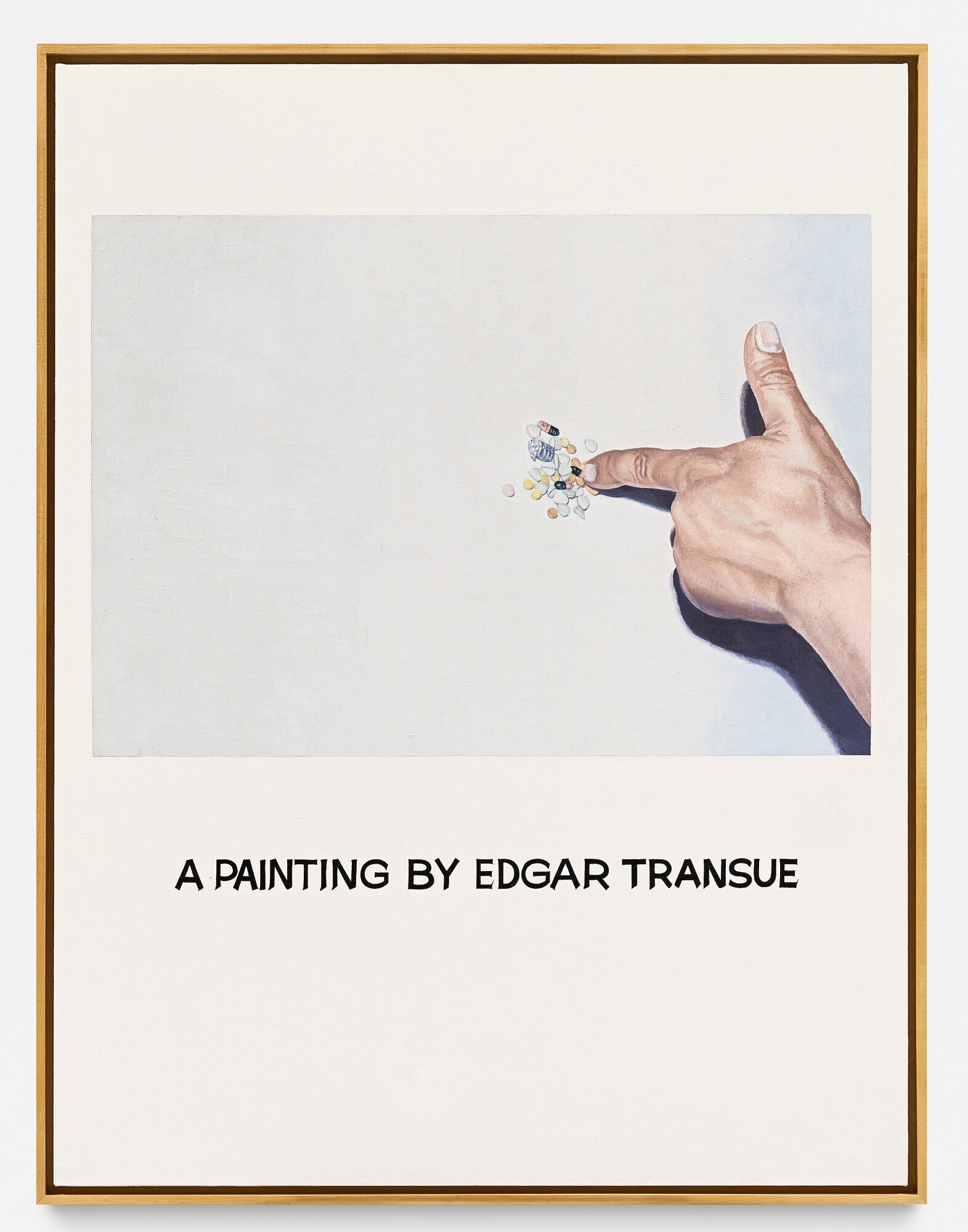
Commissioned Painting: A Painting by Edgar Transue, 1969
John Baldessari (1931-2020)
Oil and acrylic on canvas
150.5 x 114.3 cm
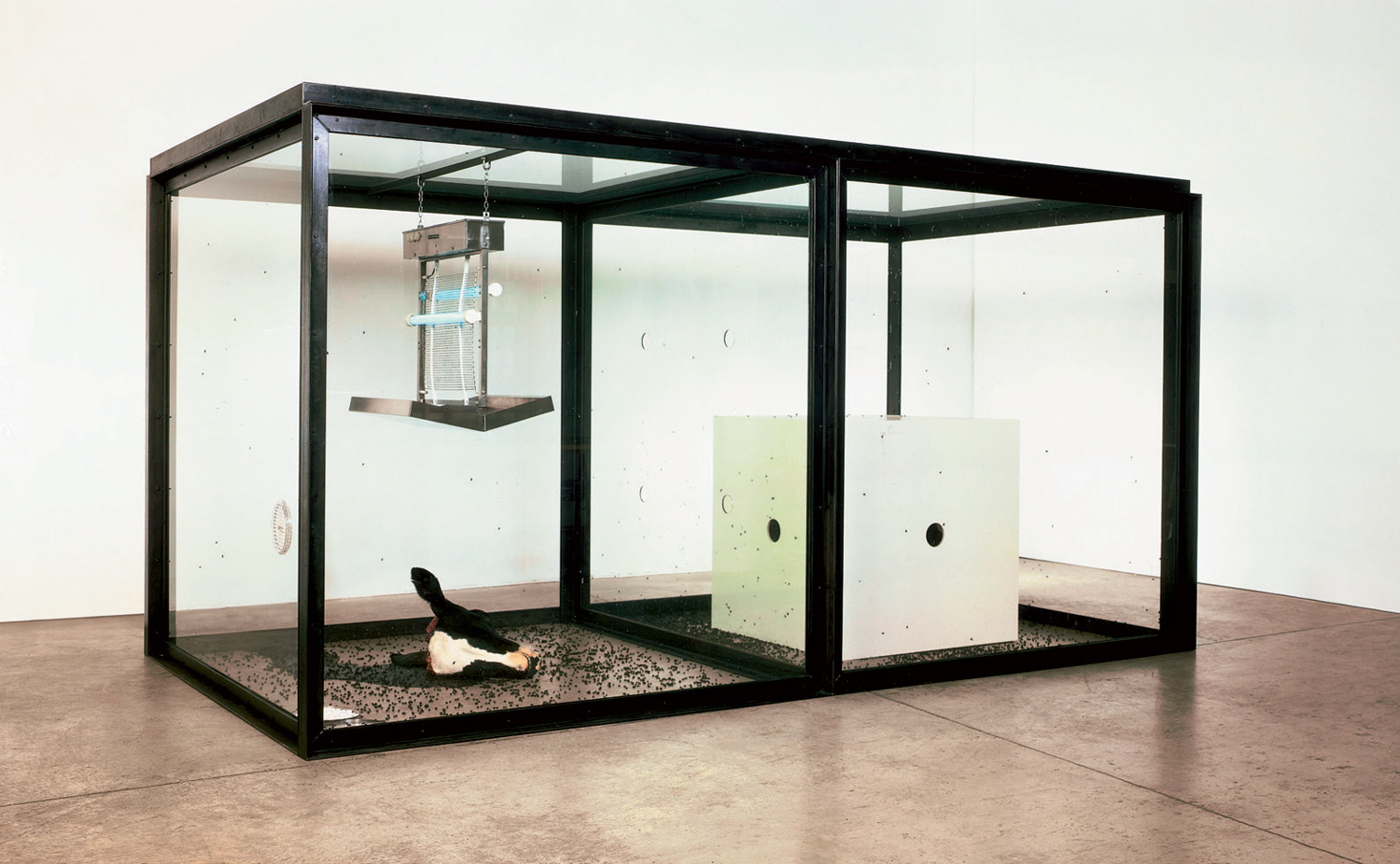
A Thousand Years, 1990
Damien Hirst (1965-)
Glass, steel, silicone rubber, painted MDF, Insect-O-Cutor, cow’s head, blood, flies, maggots, metal dishes, cotton wool, sugar and water
207.5 x 400 x 215 cm
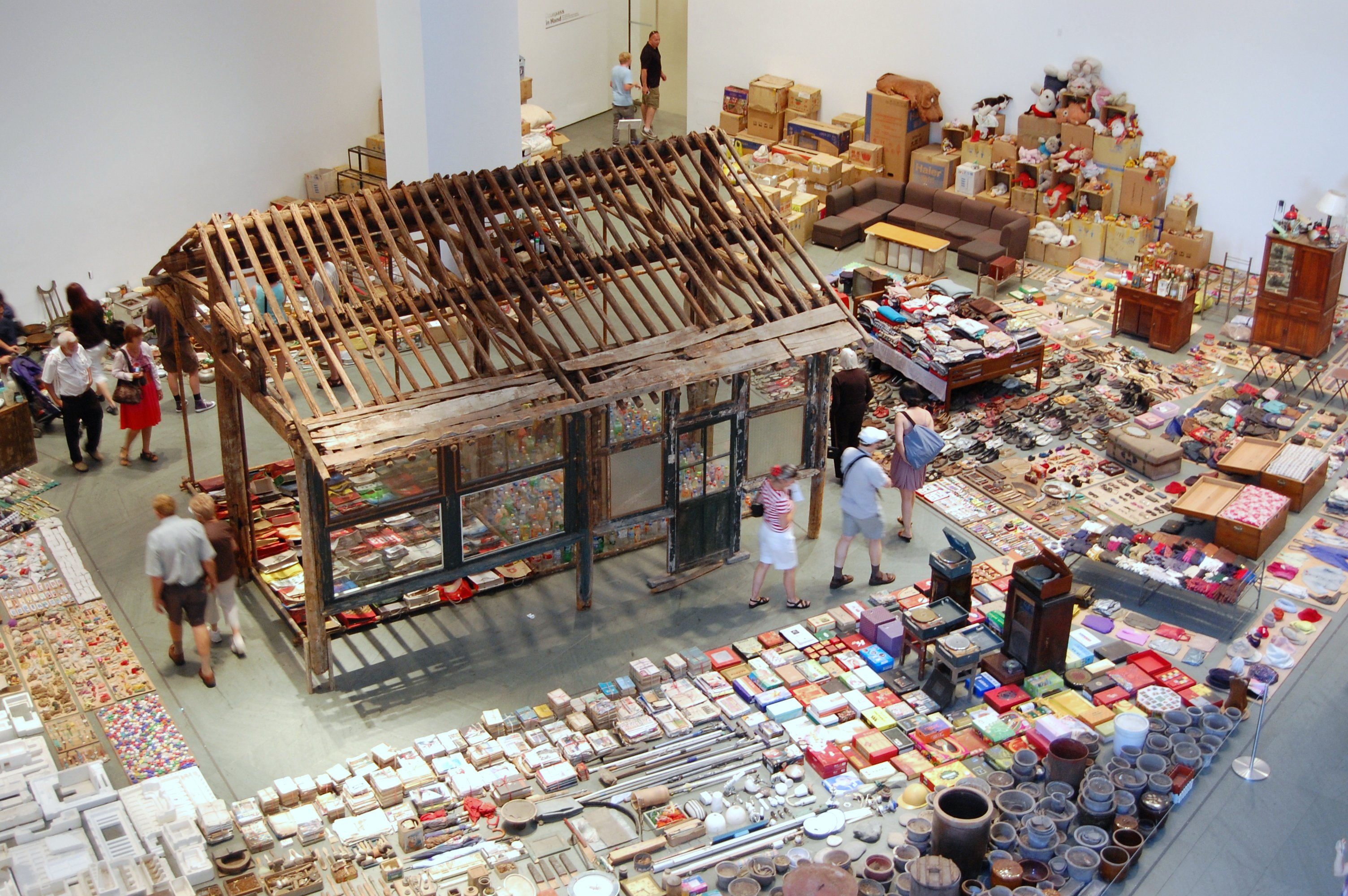
Waste Not, 2006
Song Dong (1966-)
Wasted objects
Museum of Modern Art, New York
